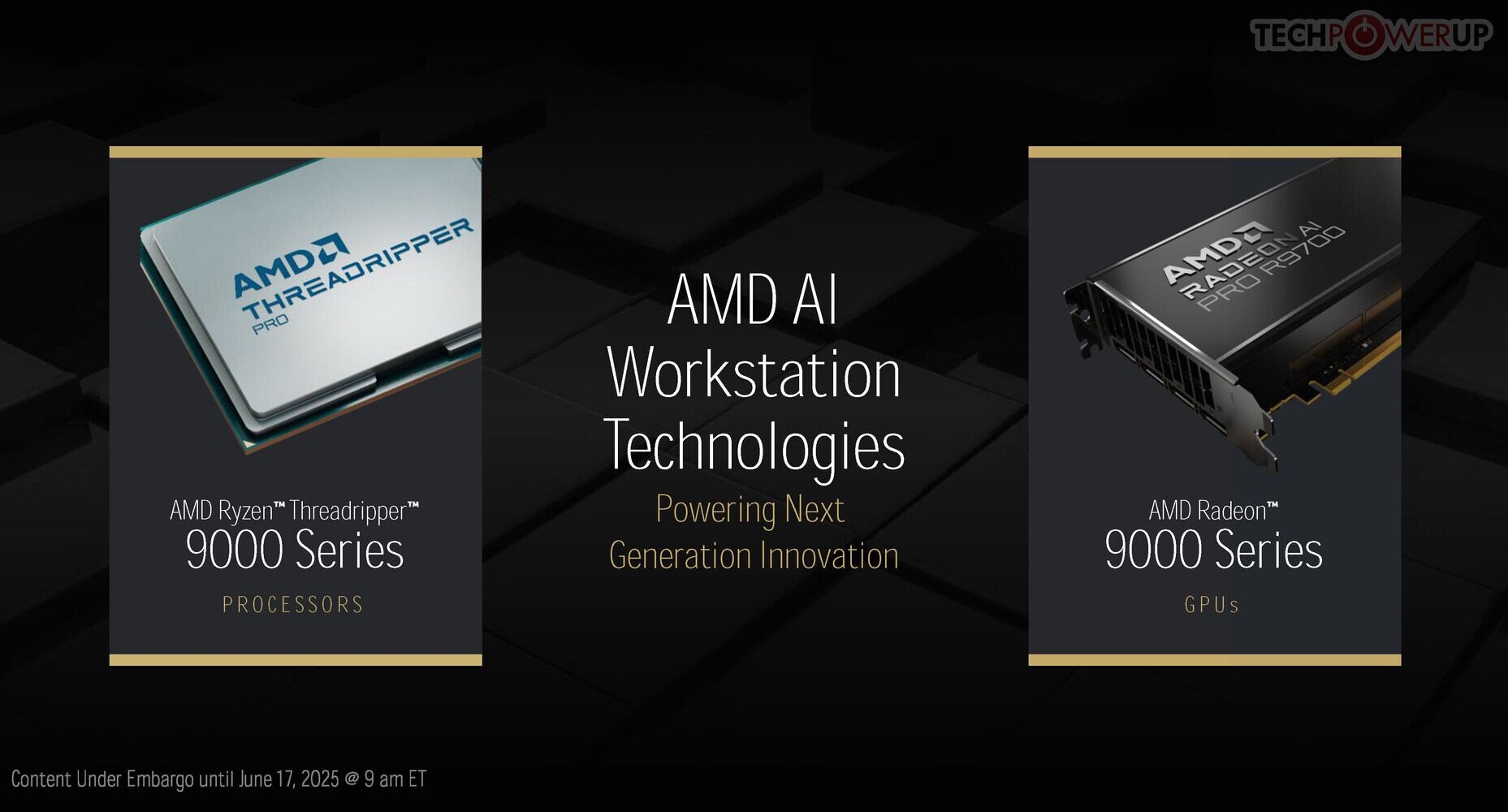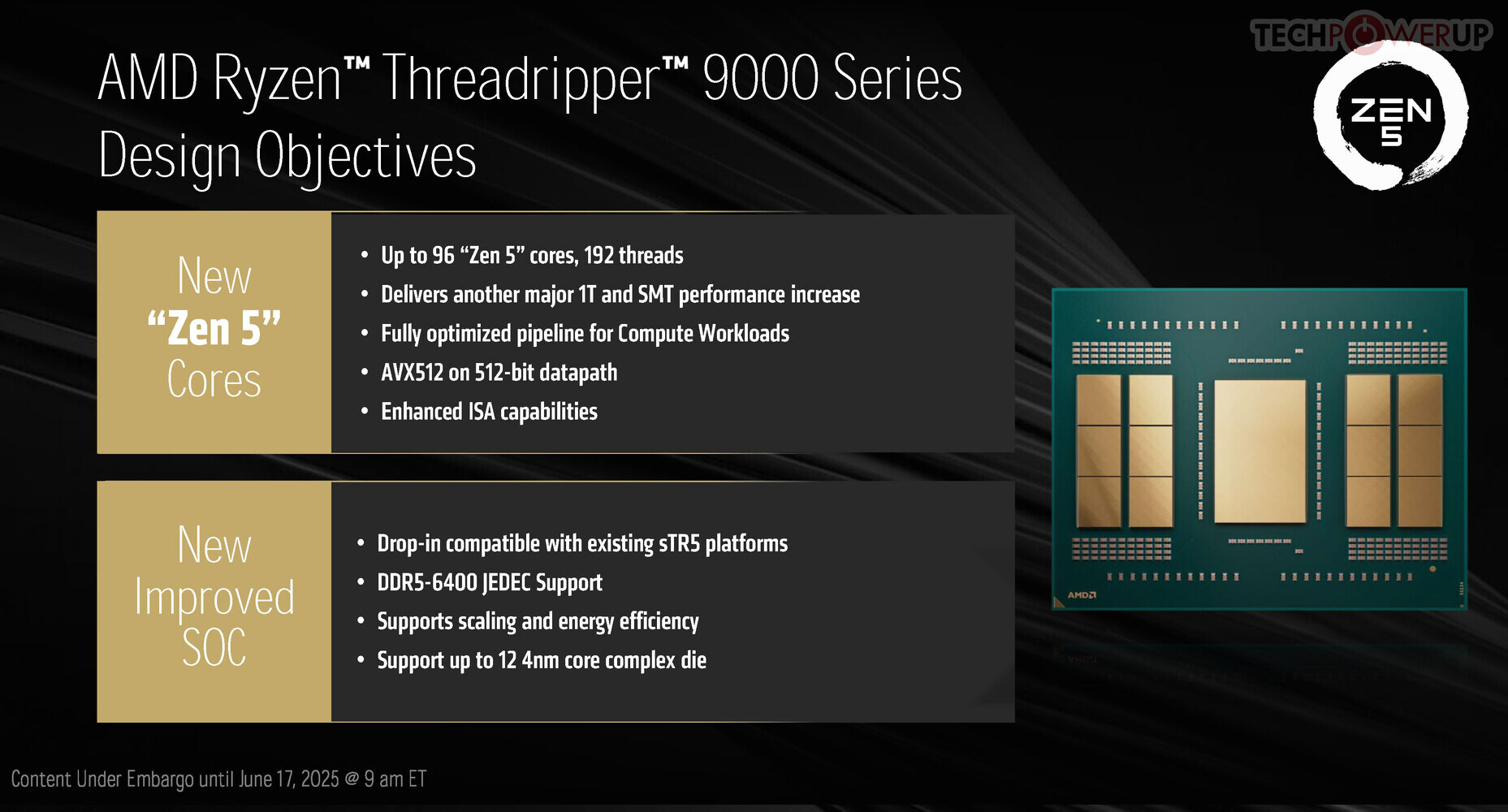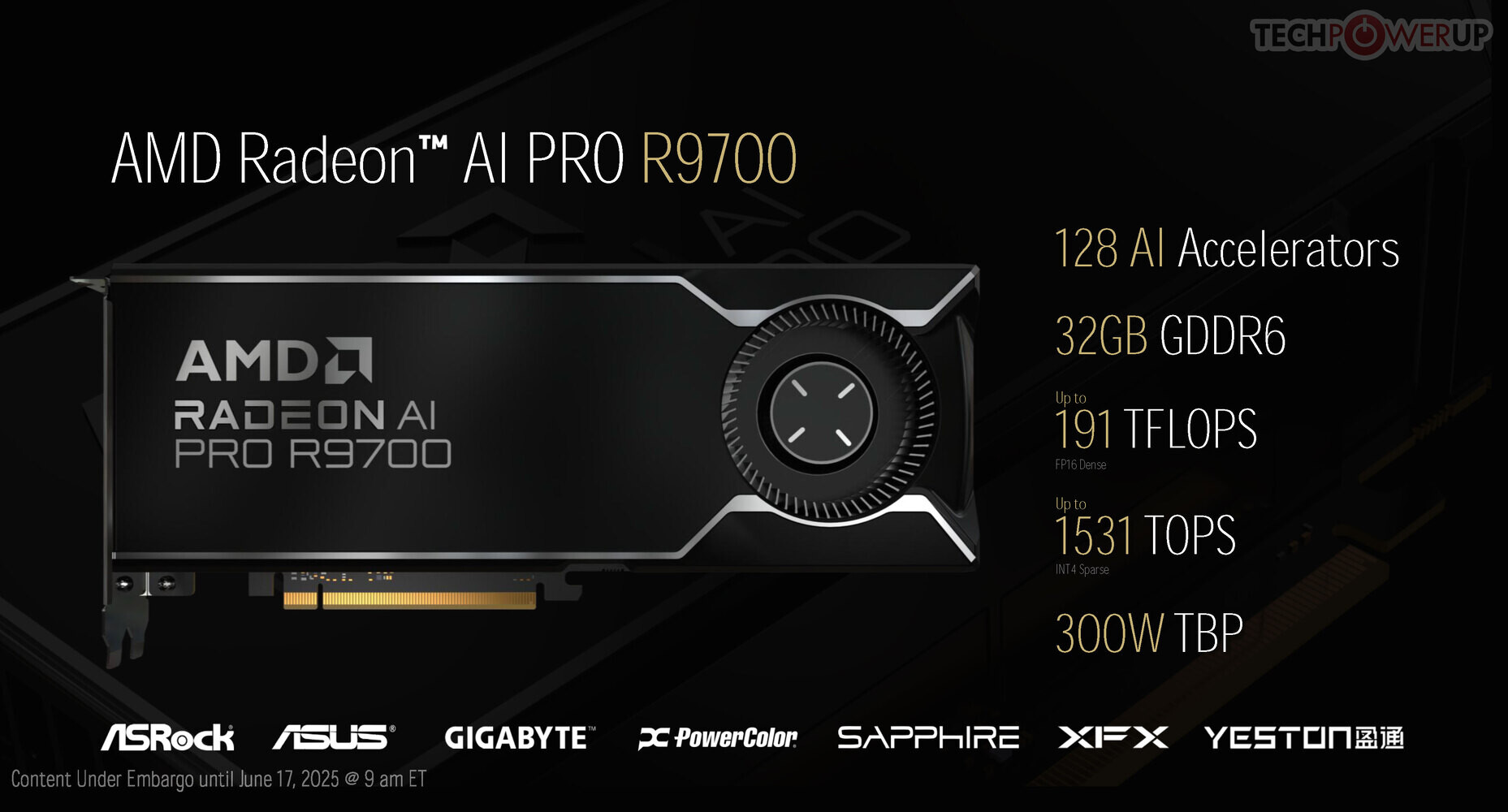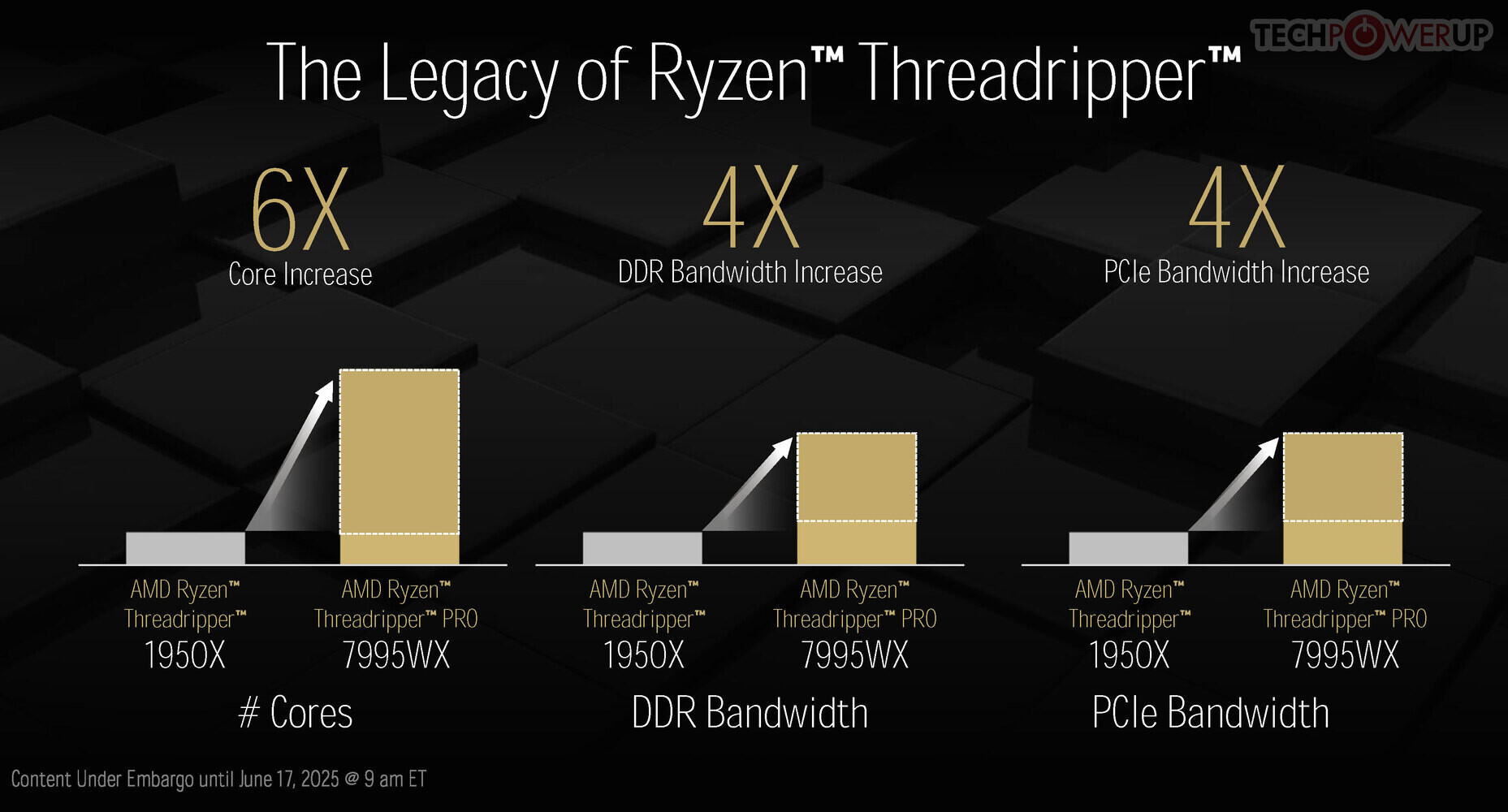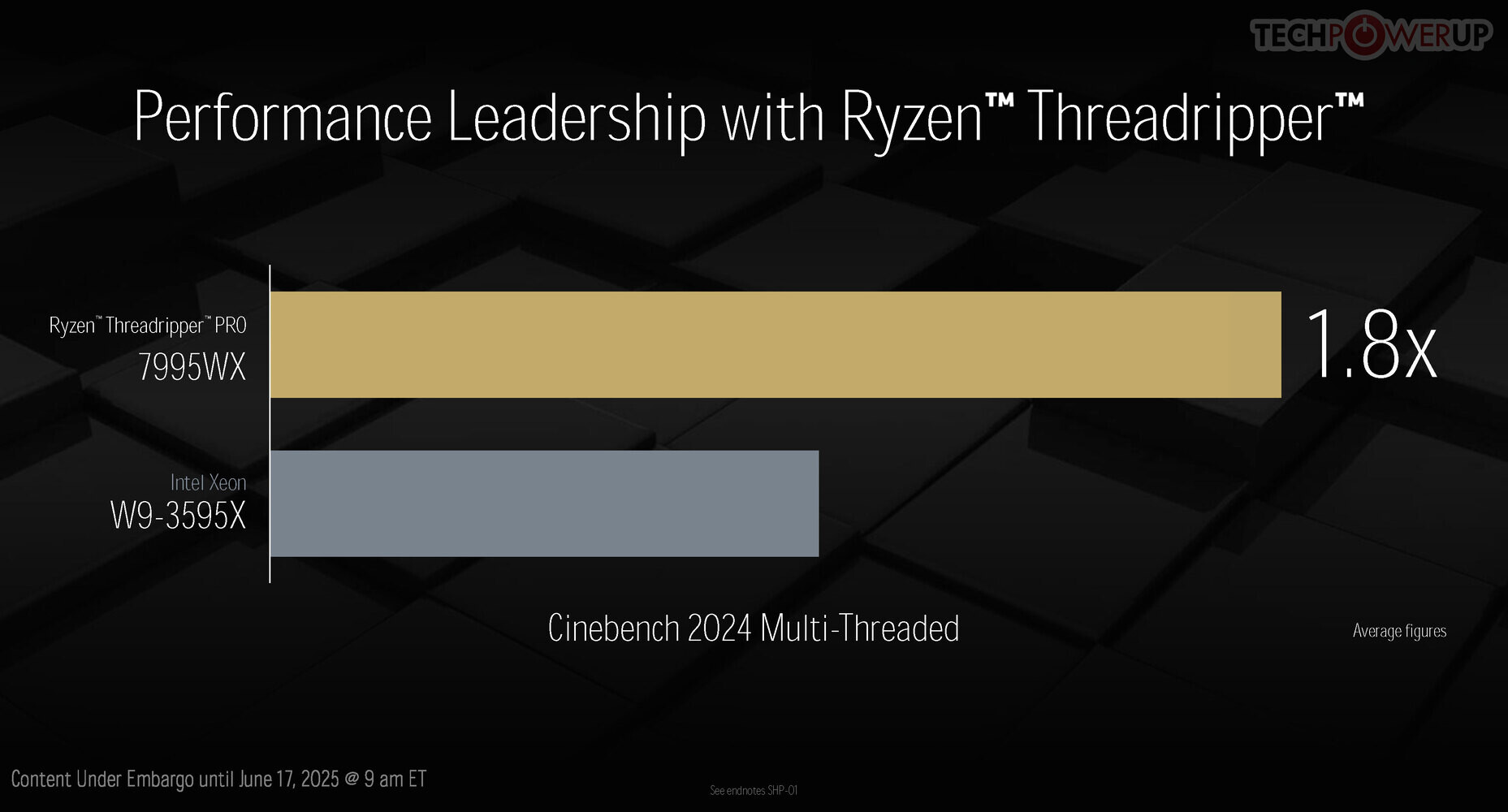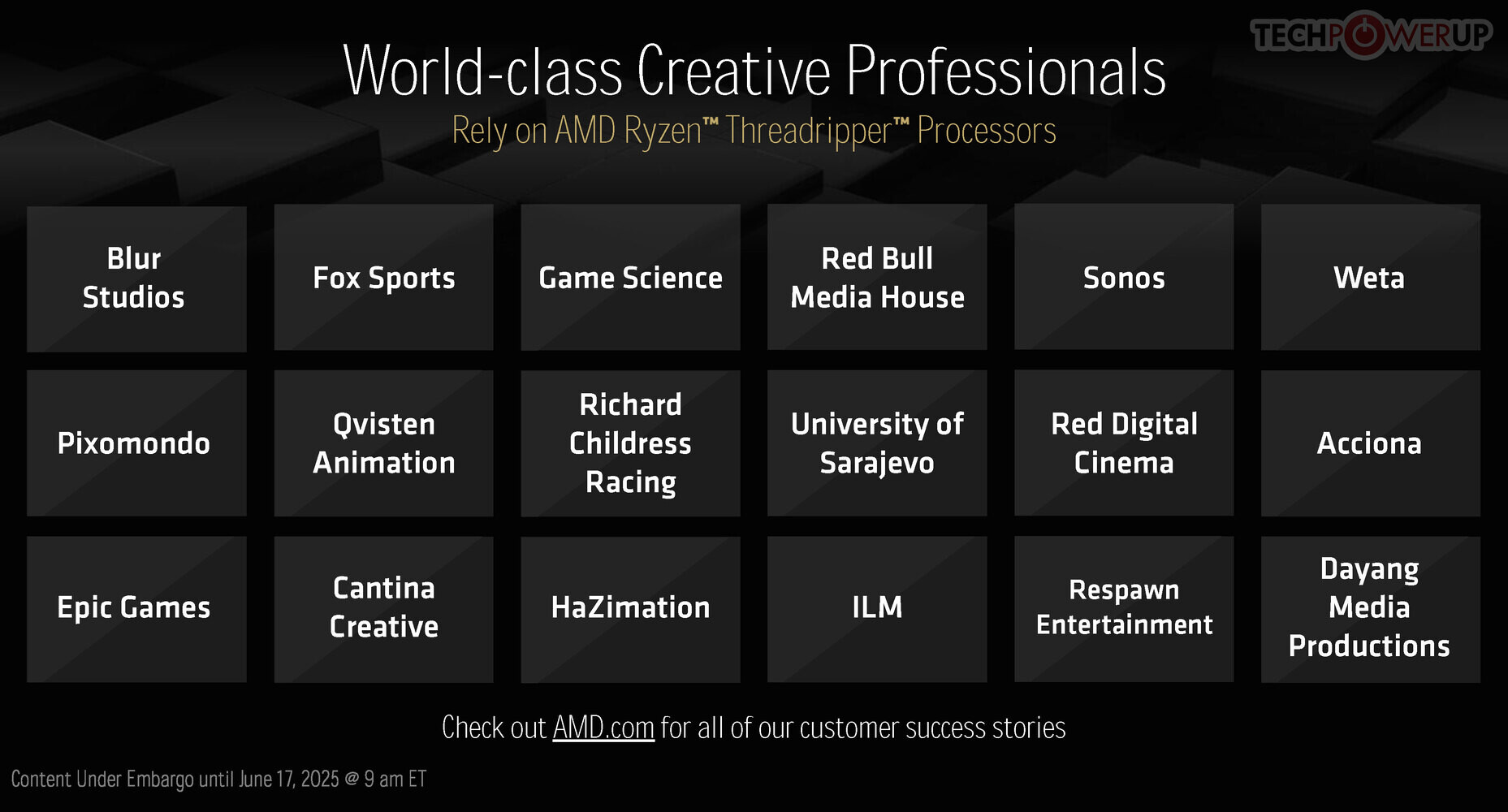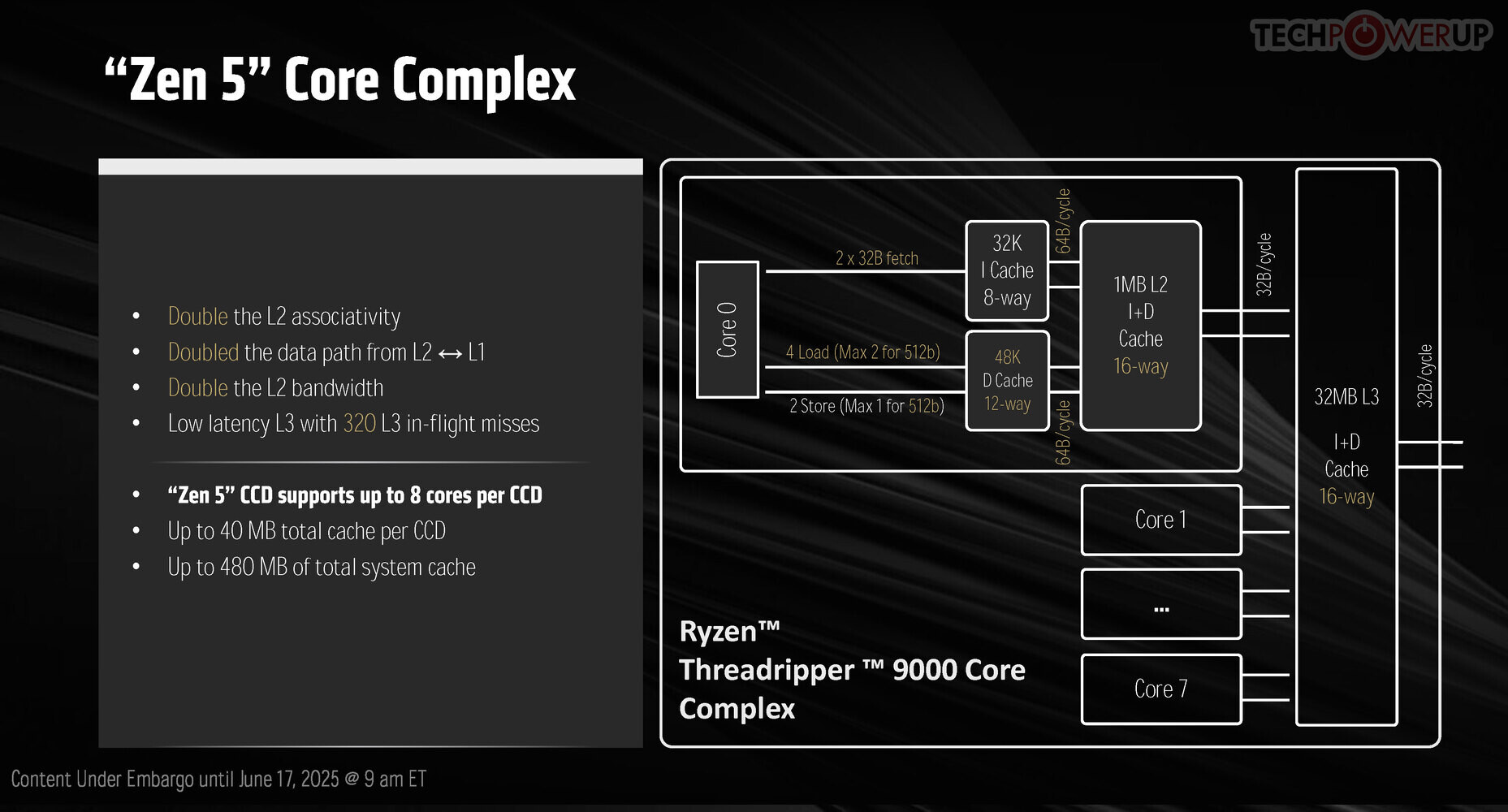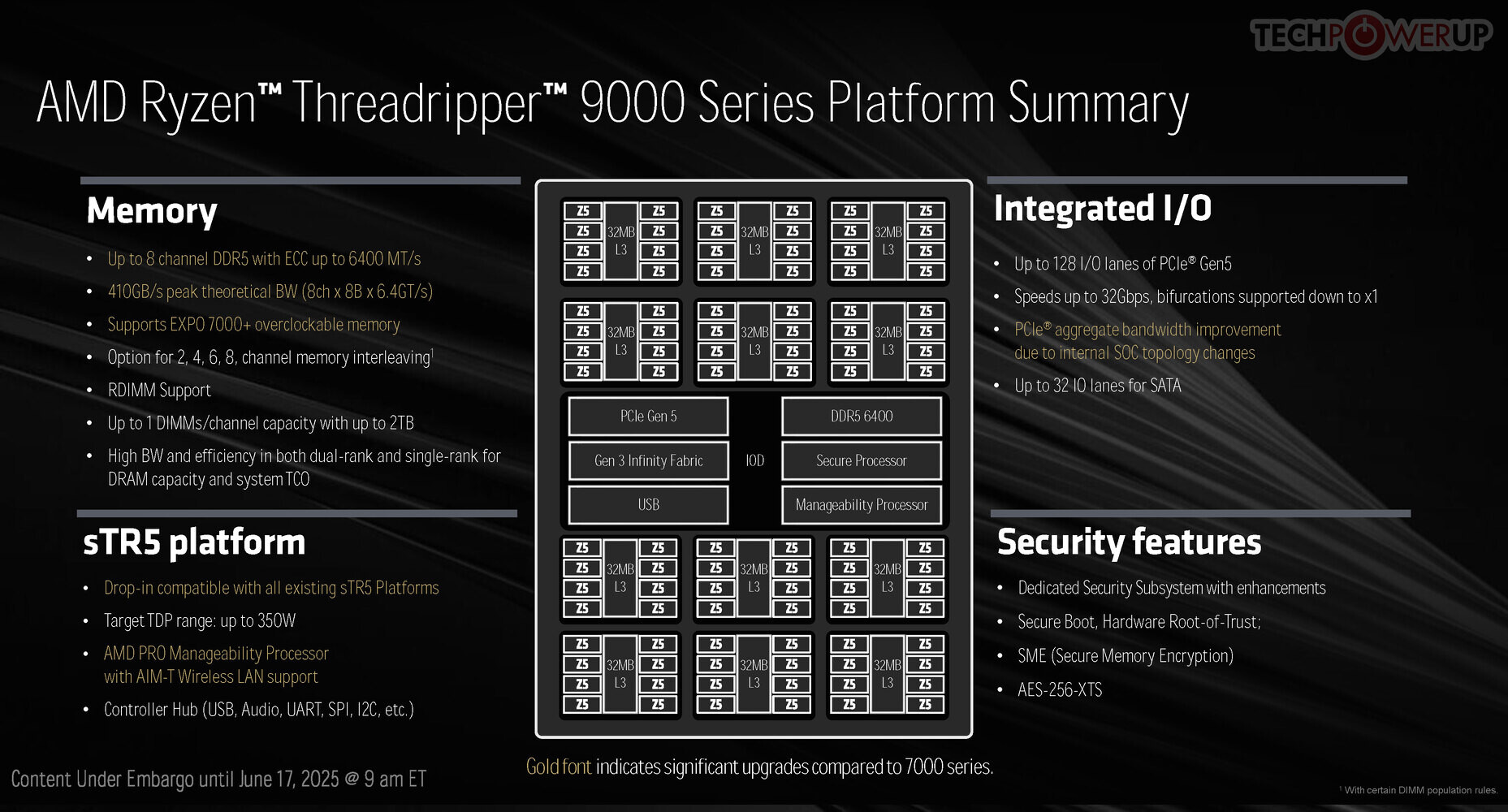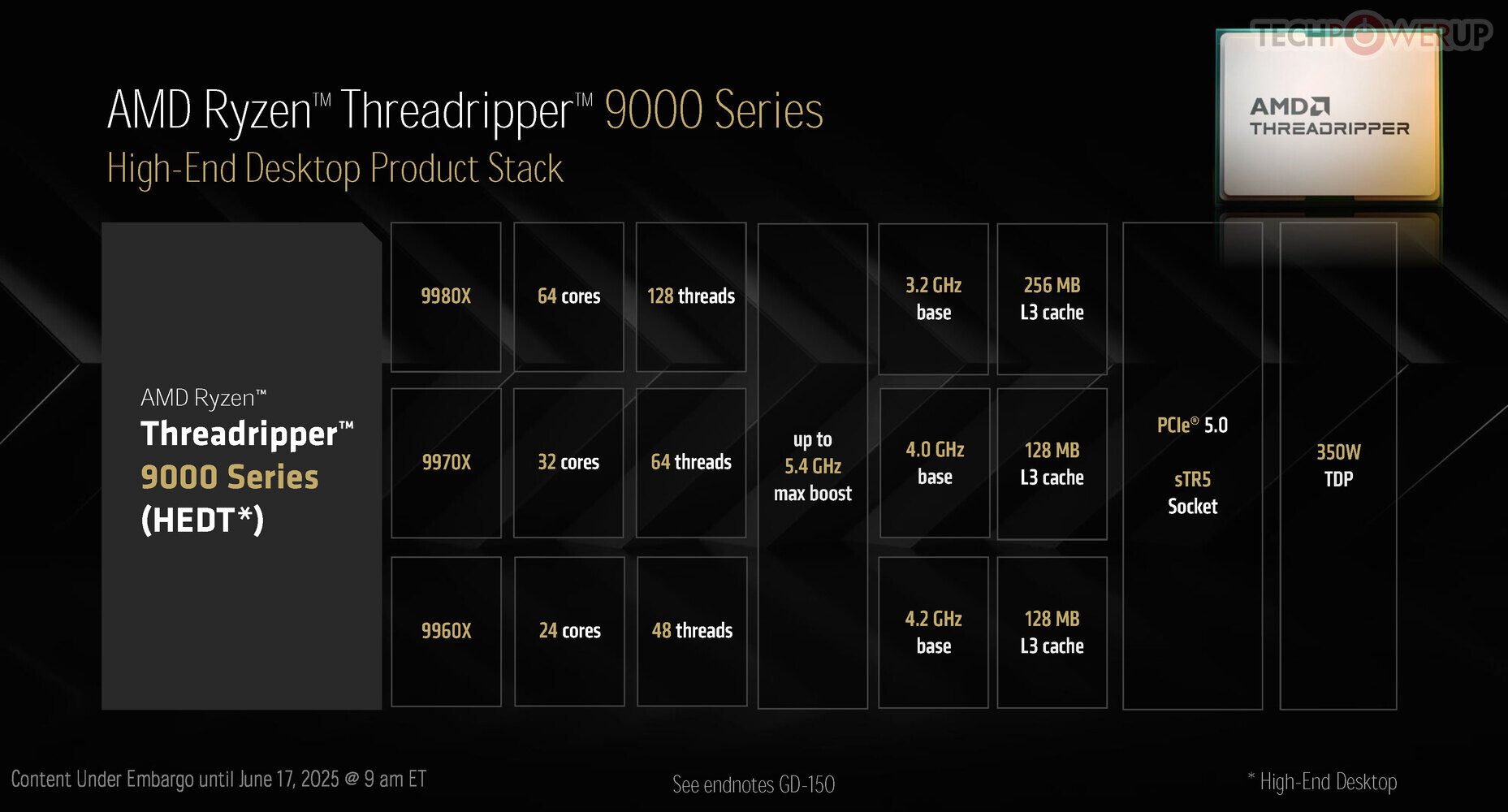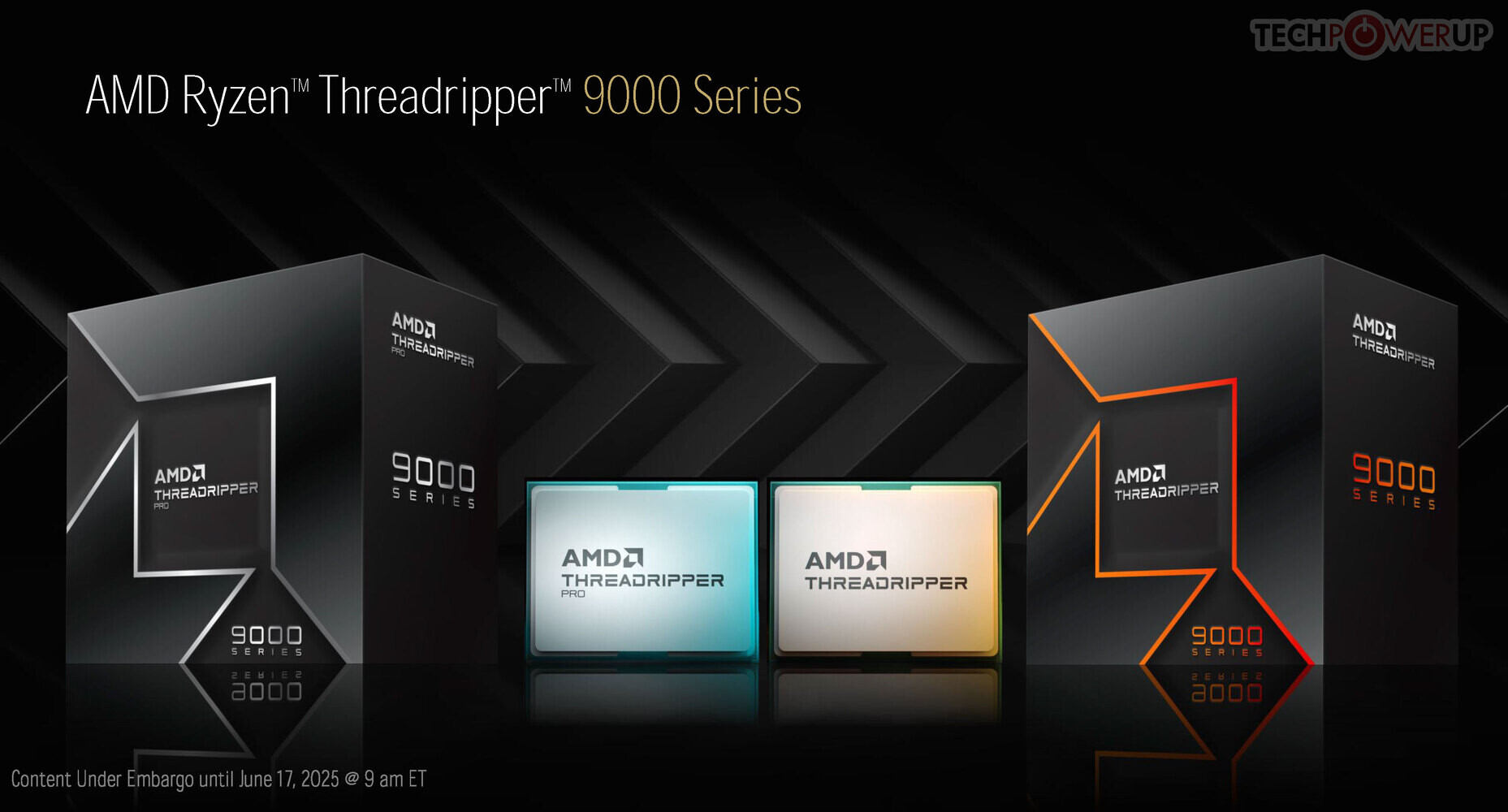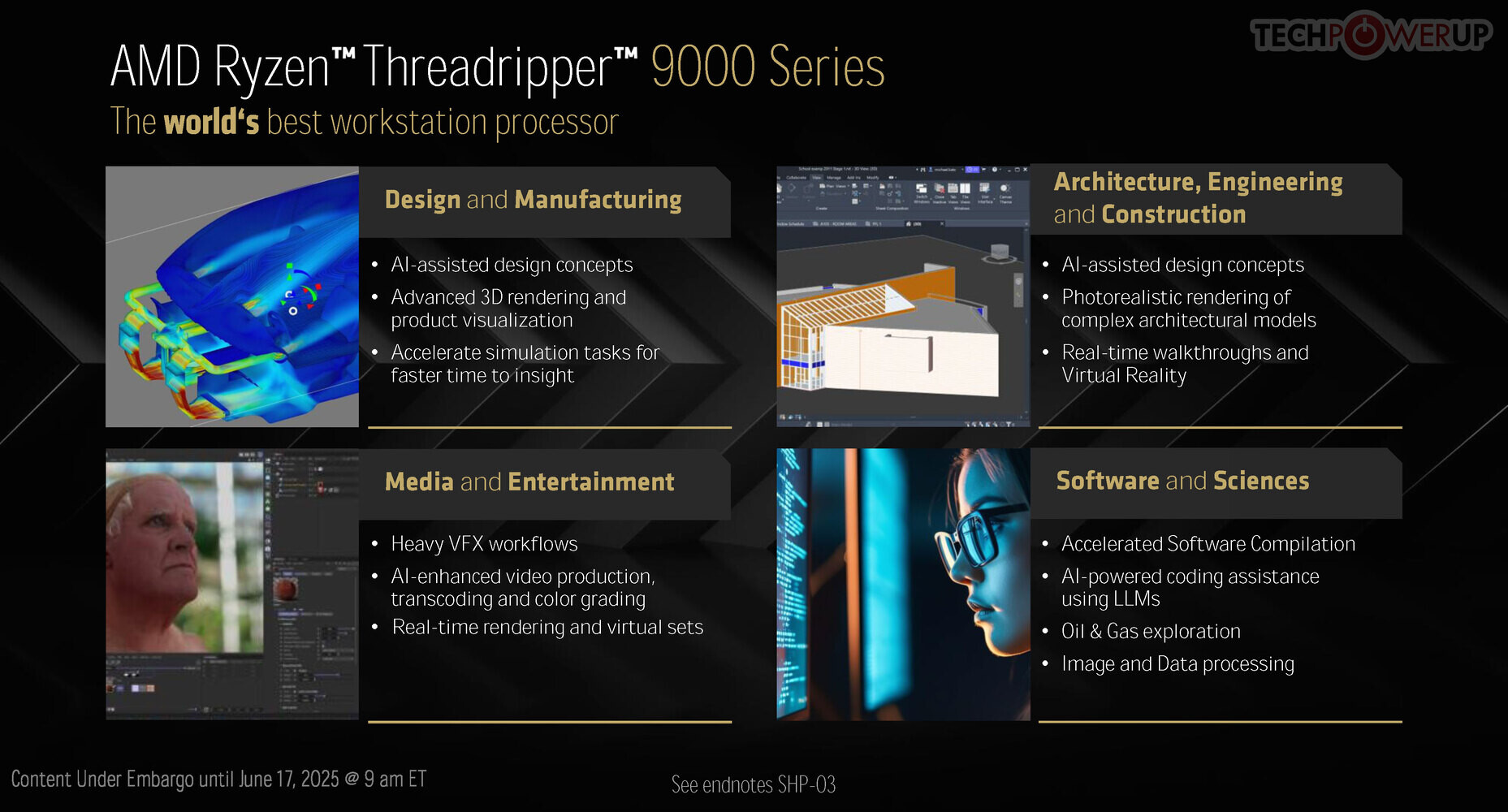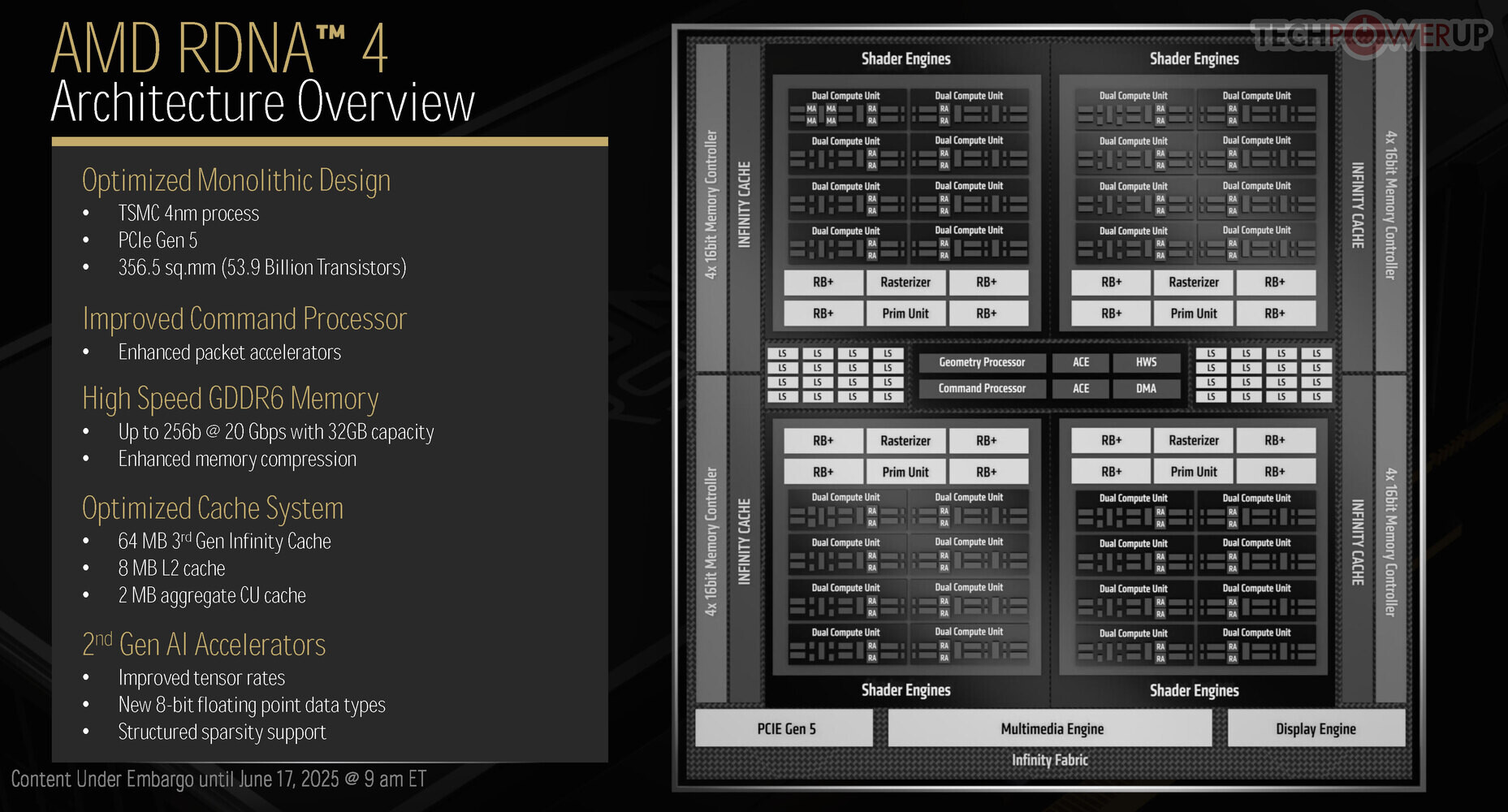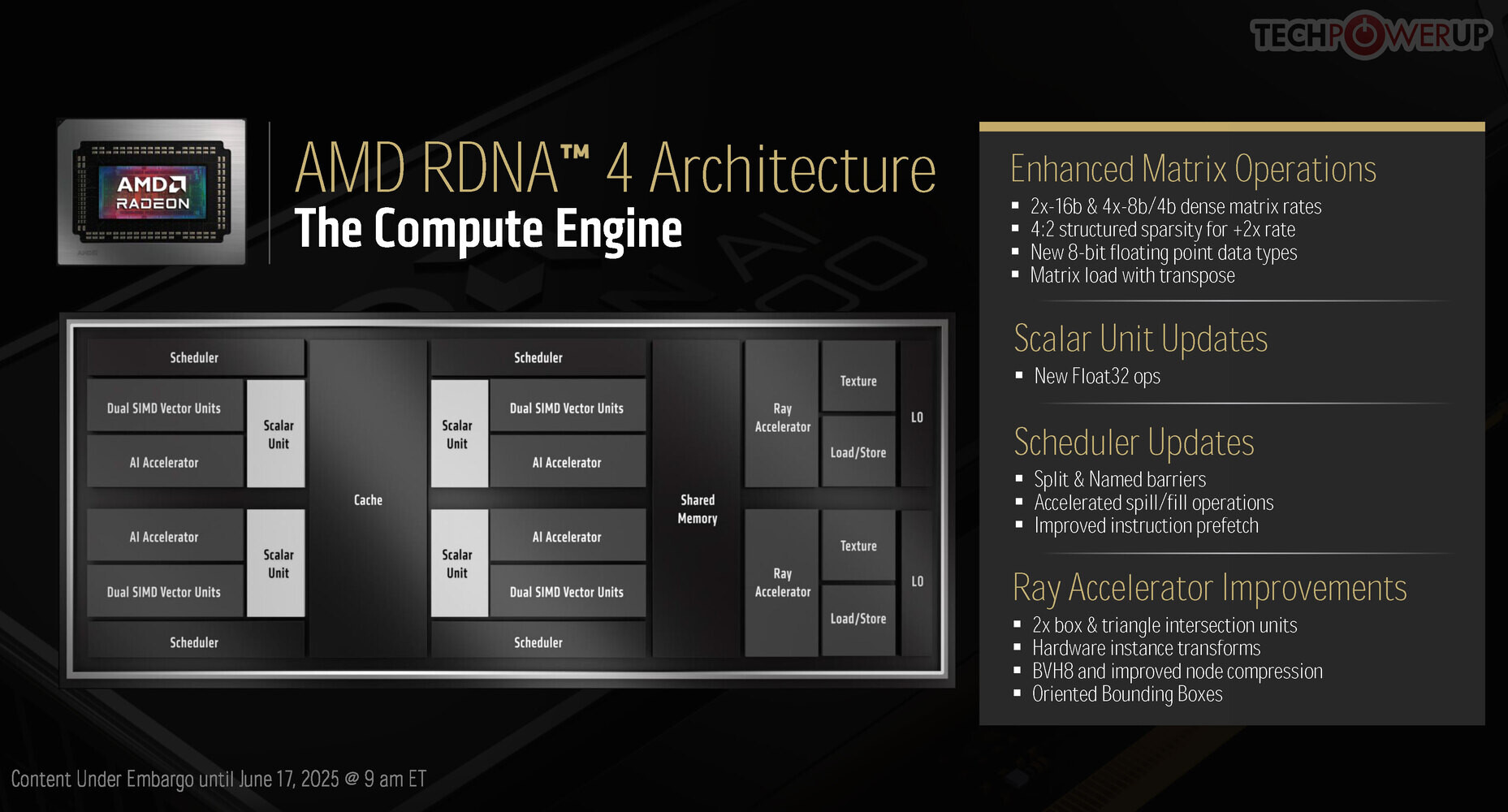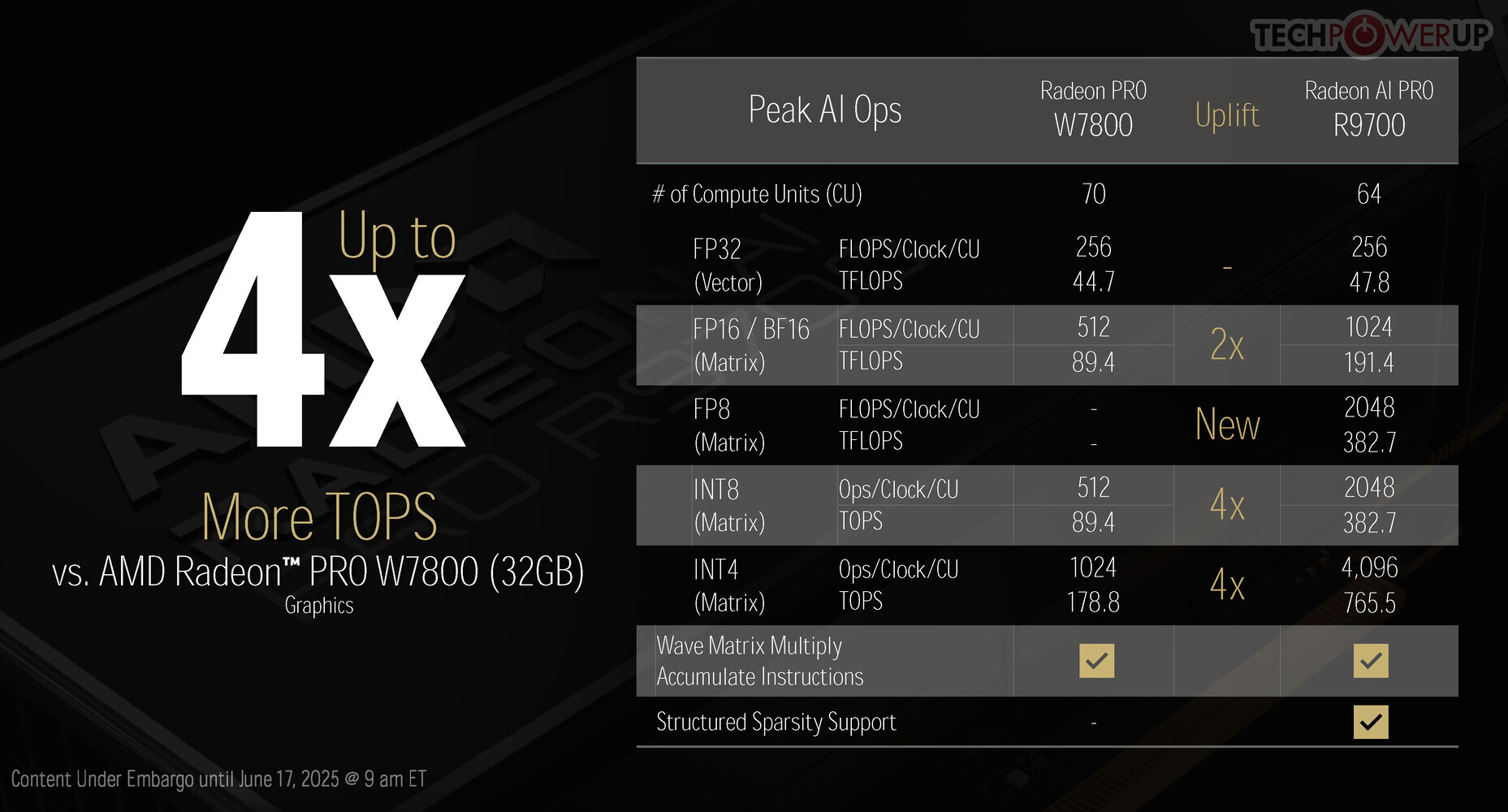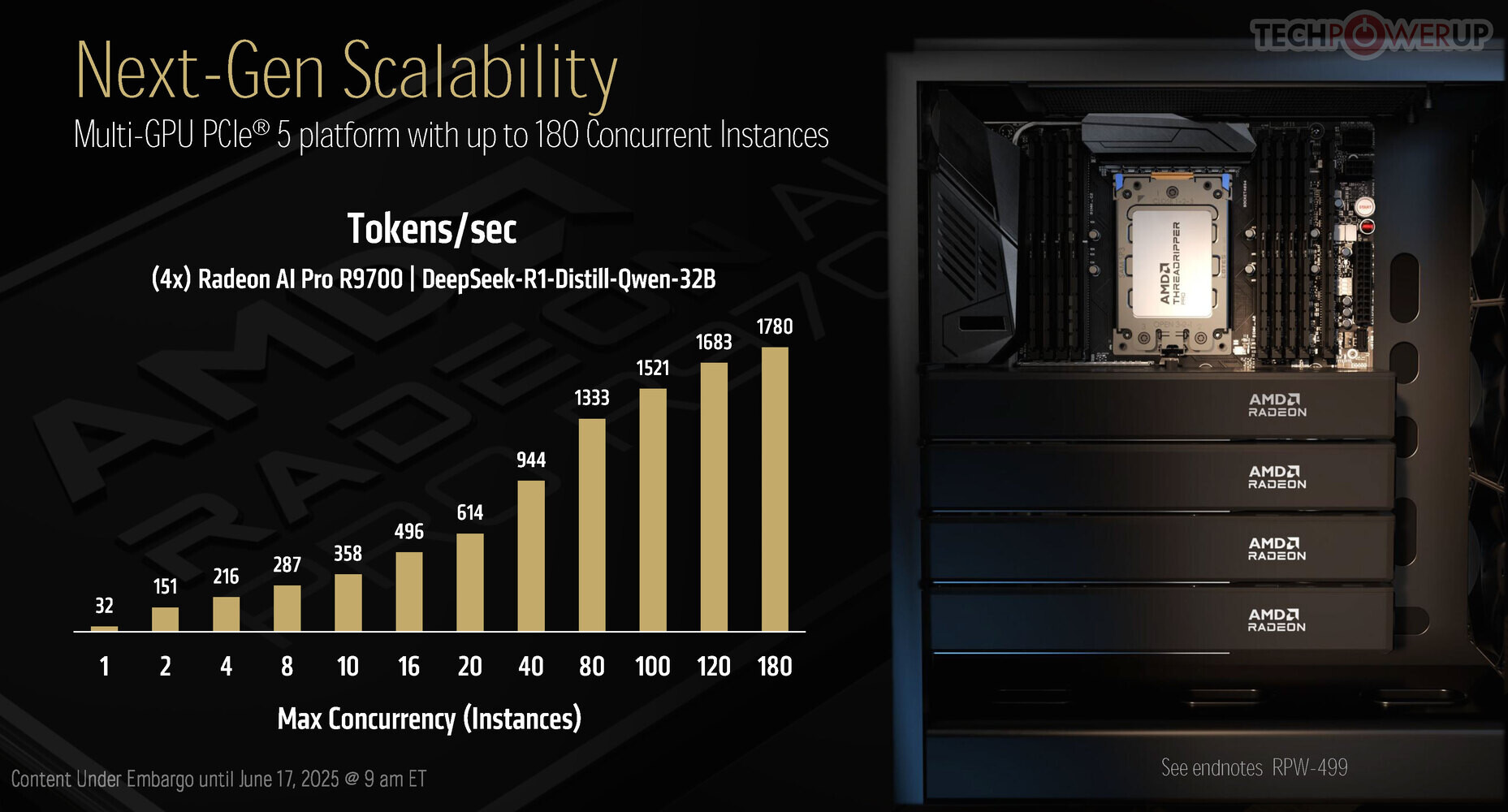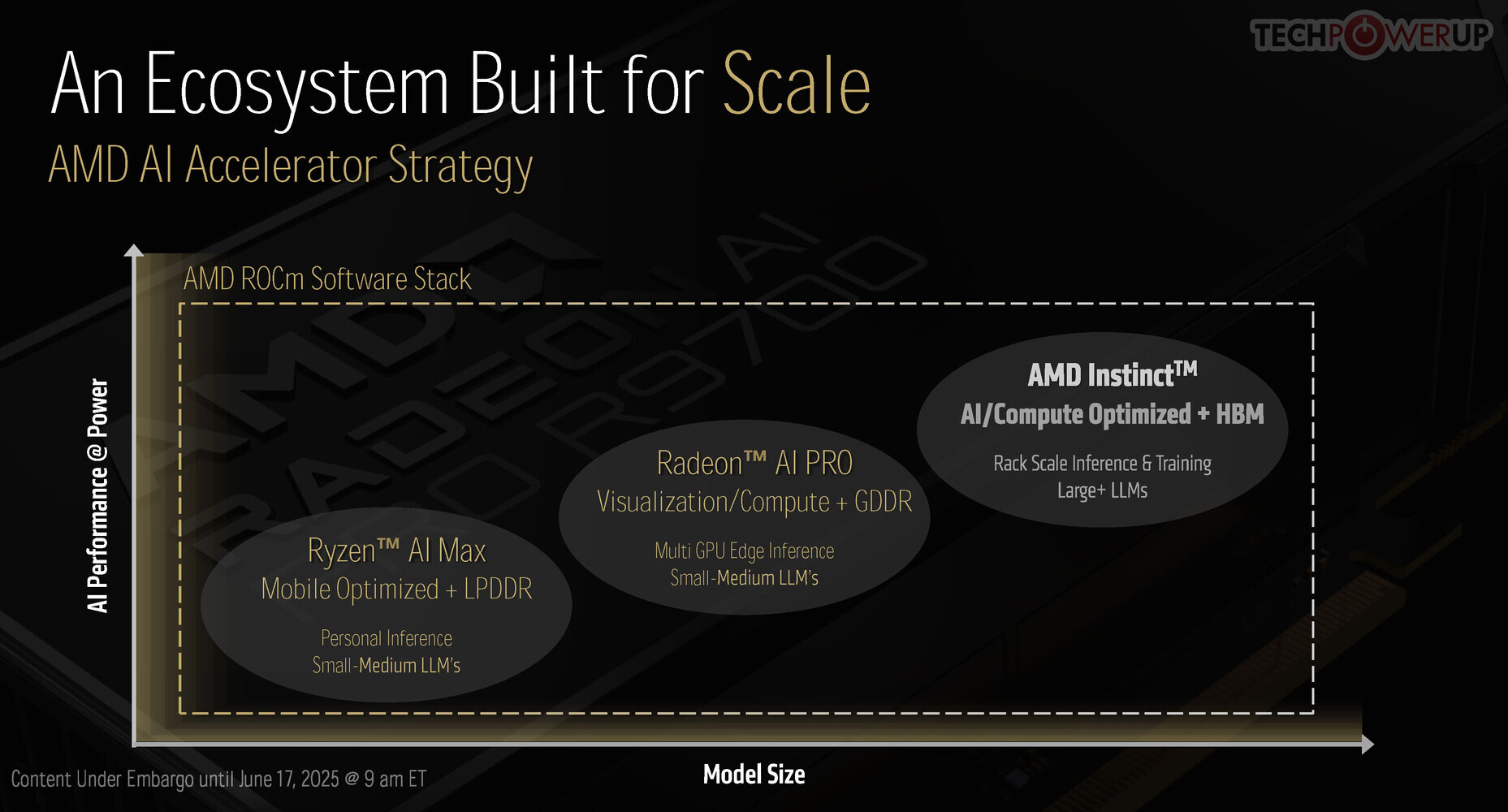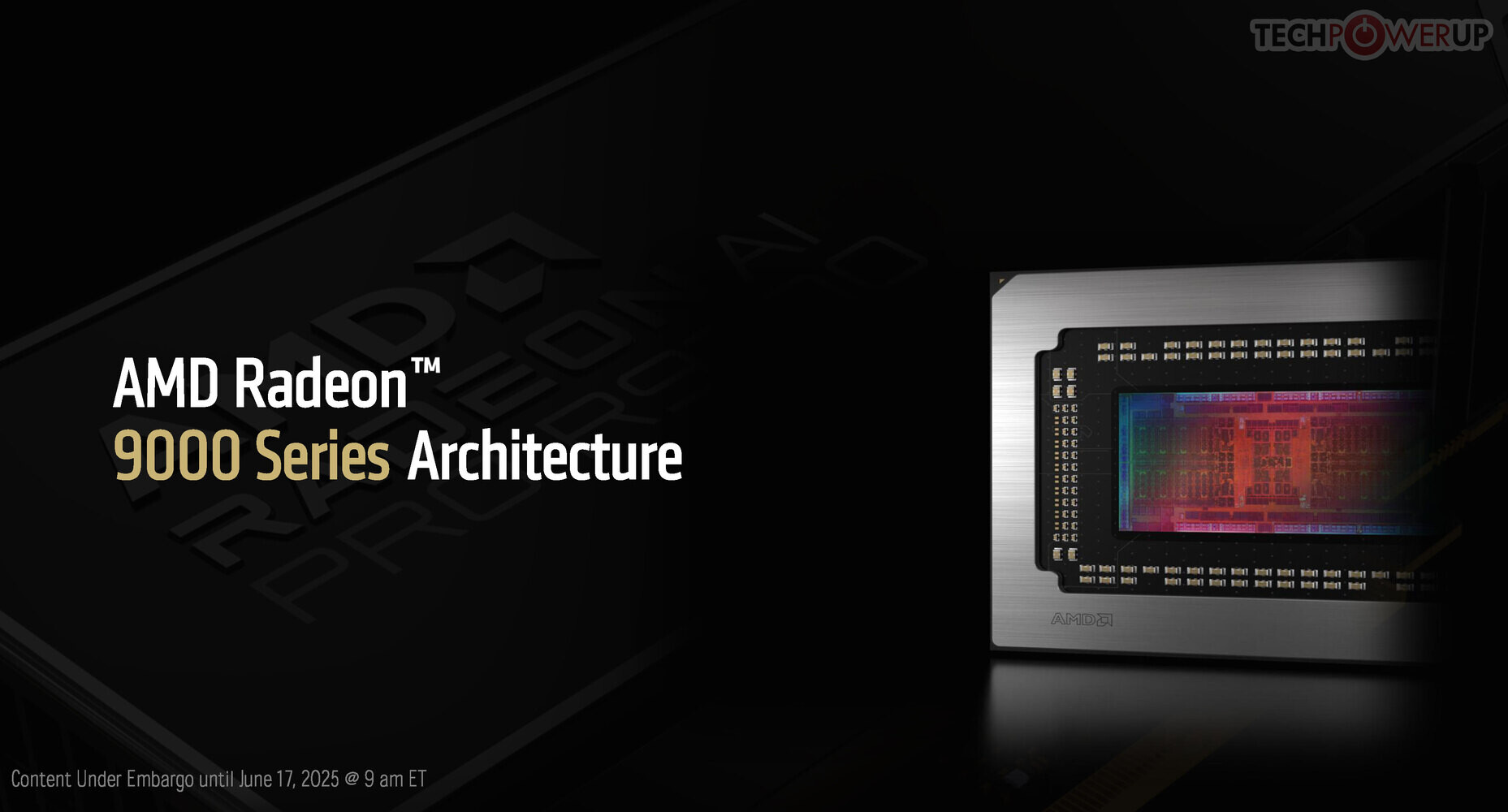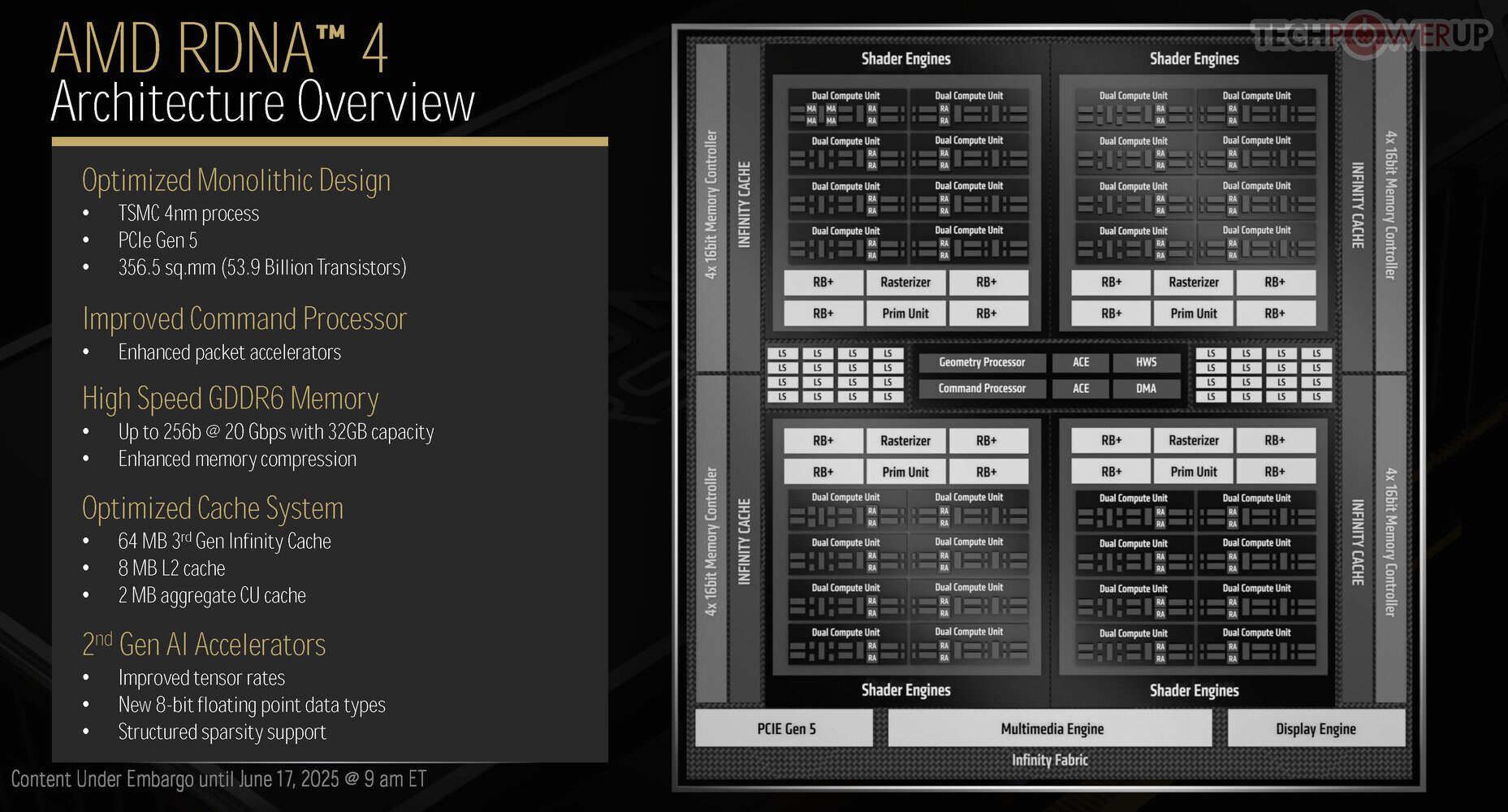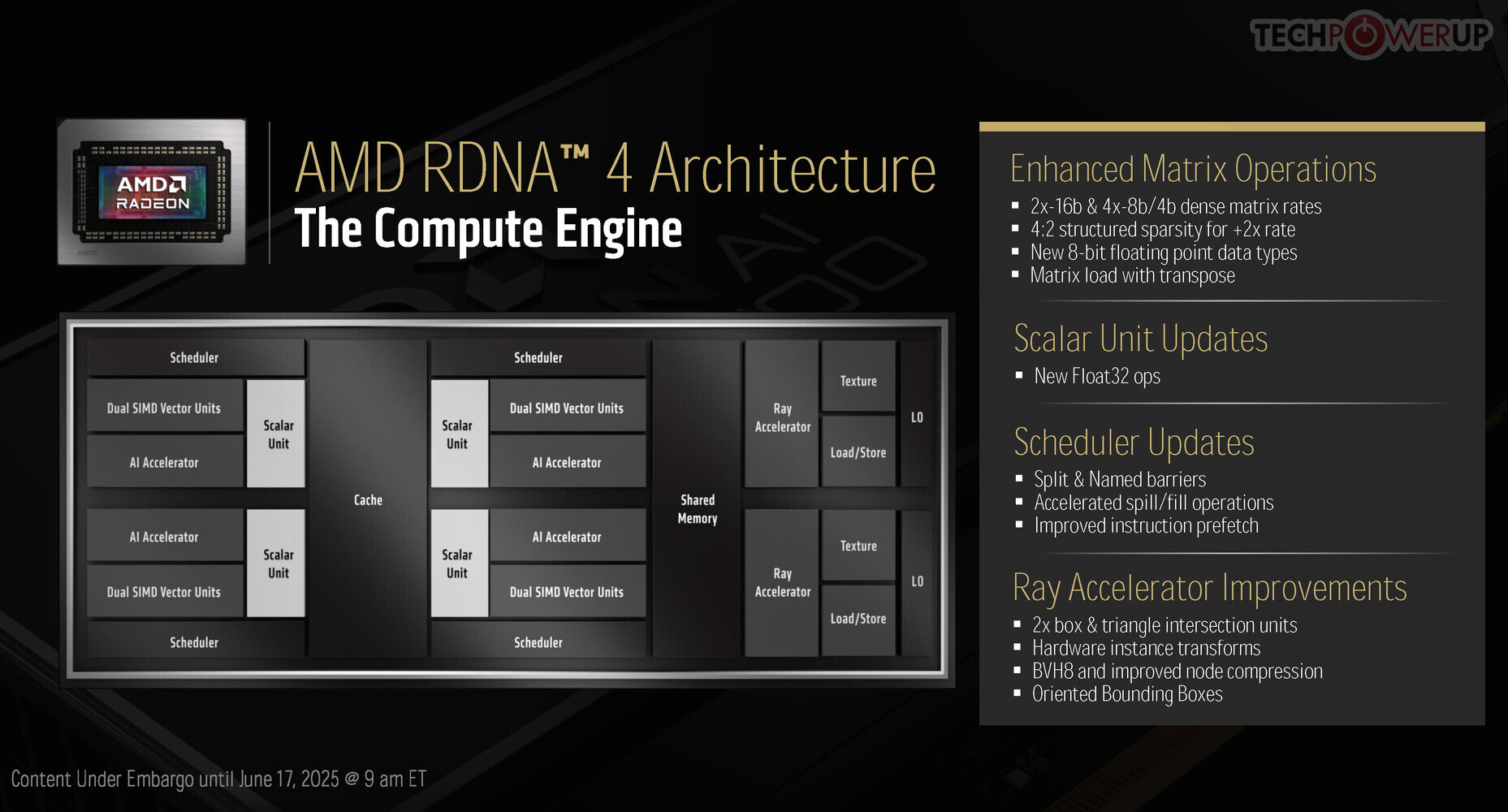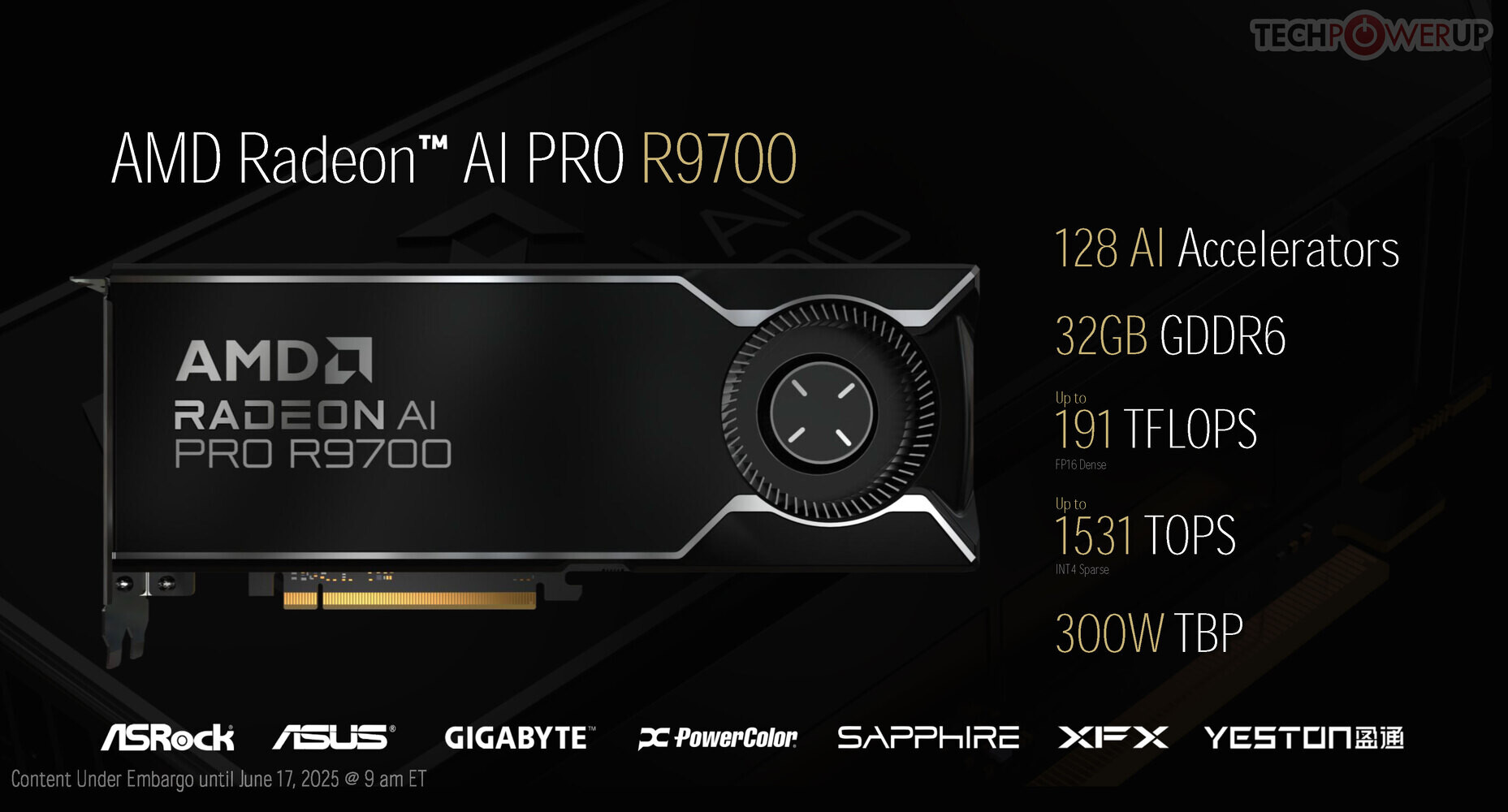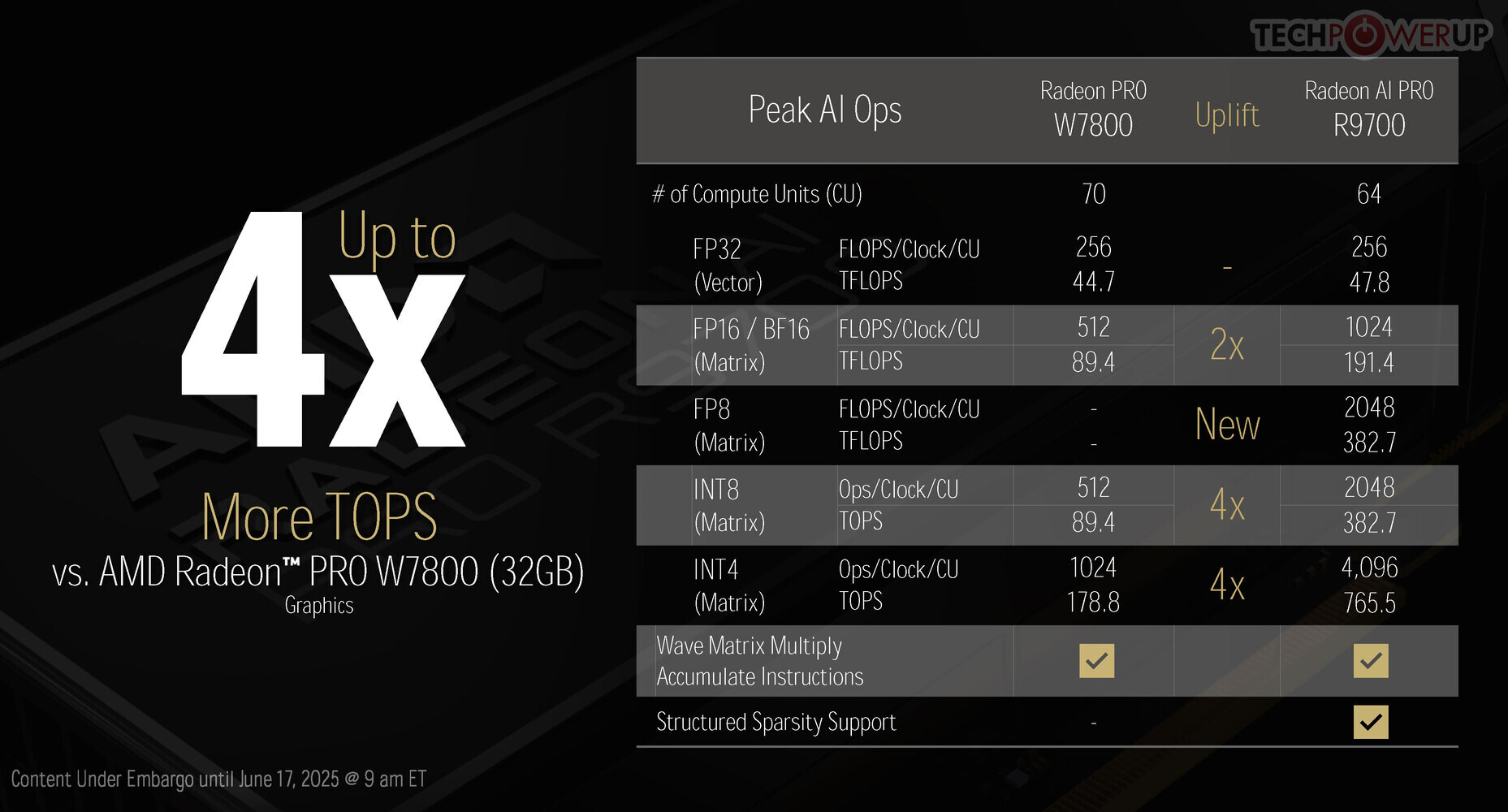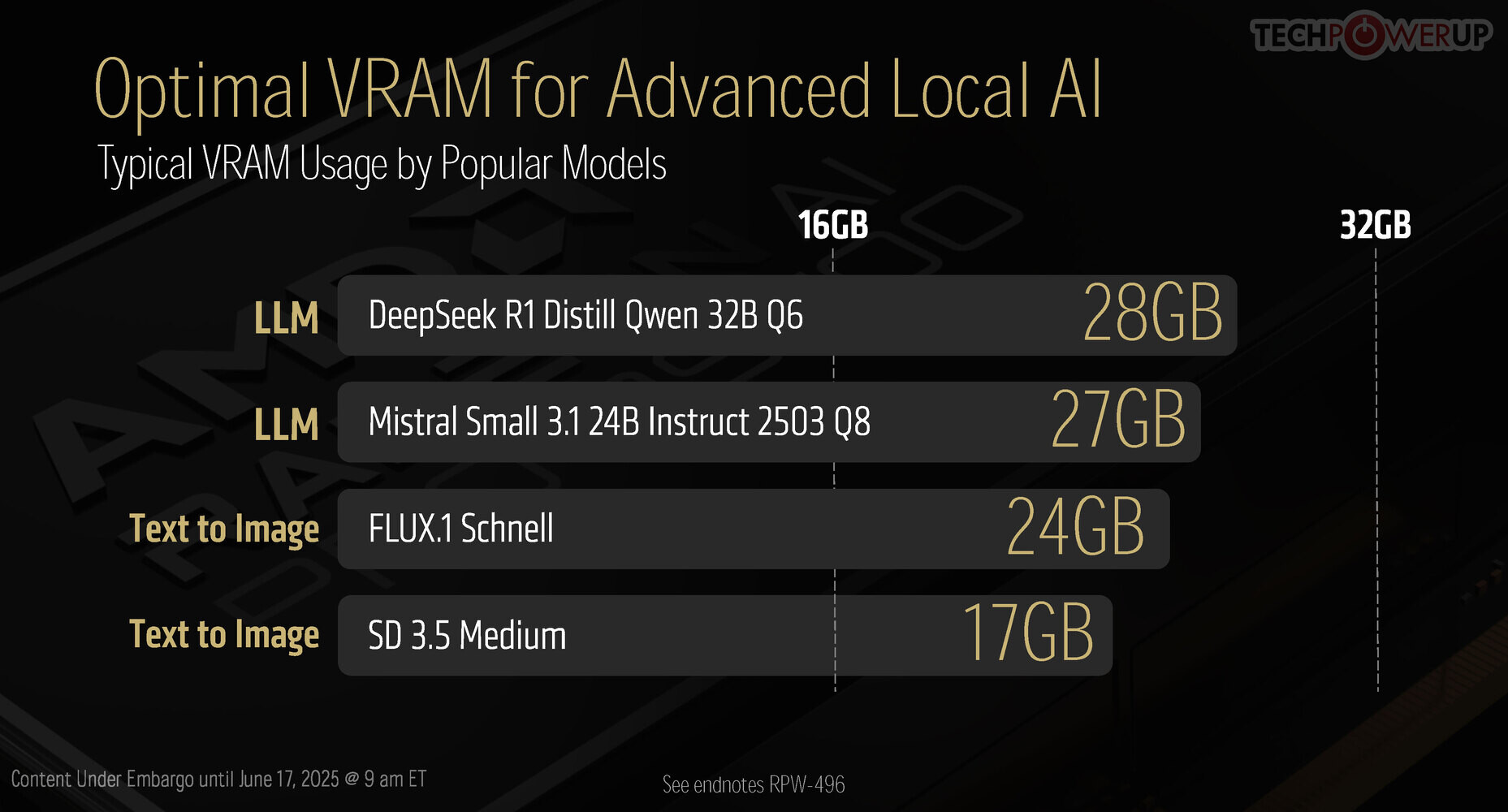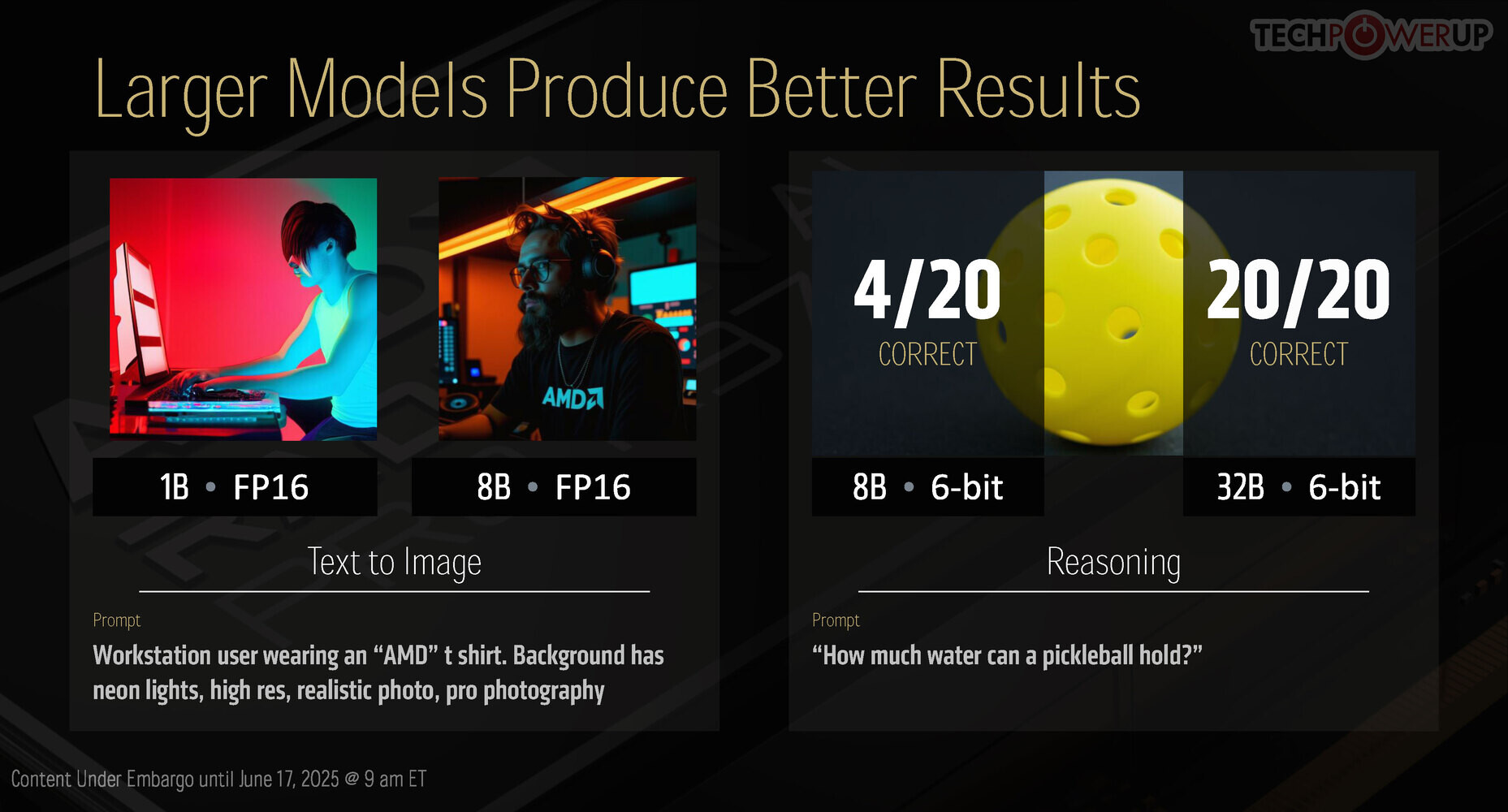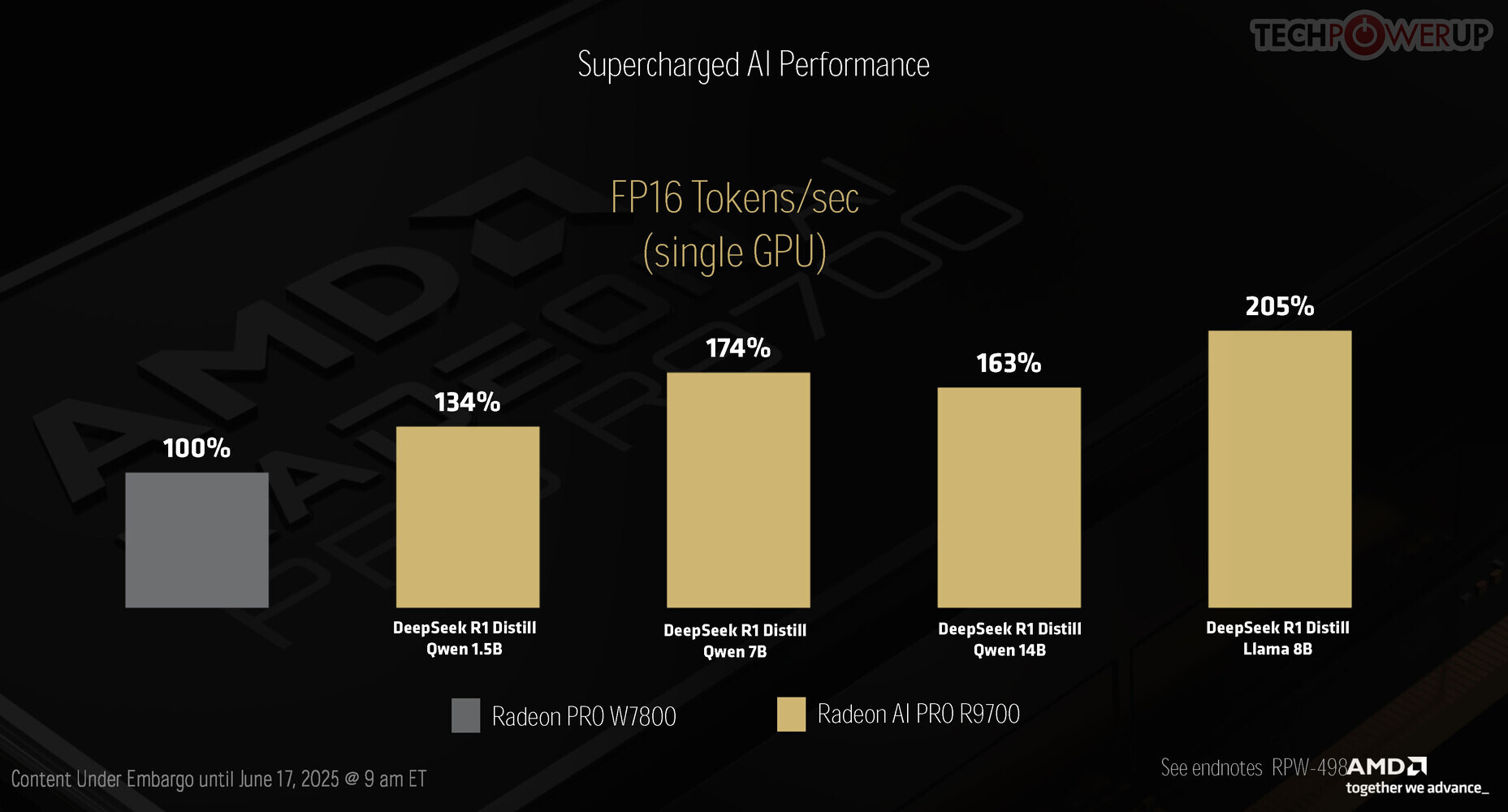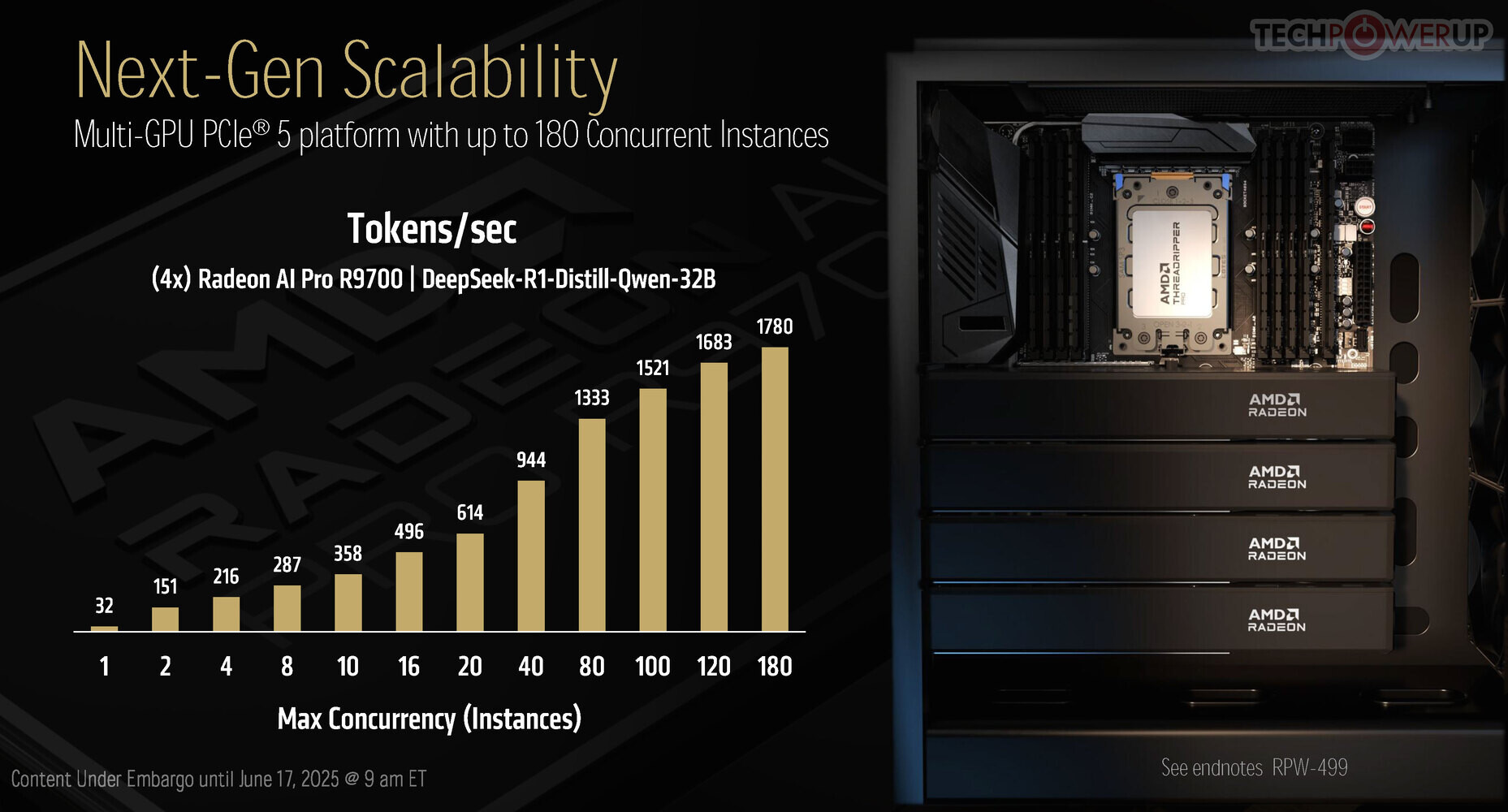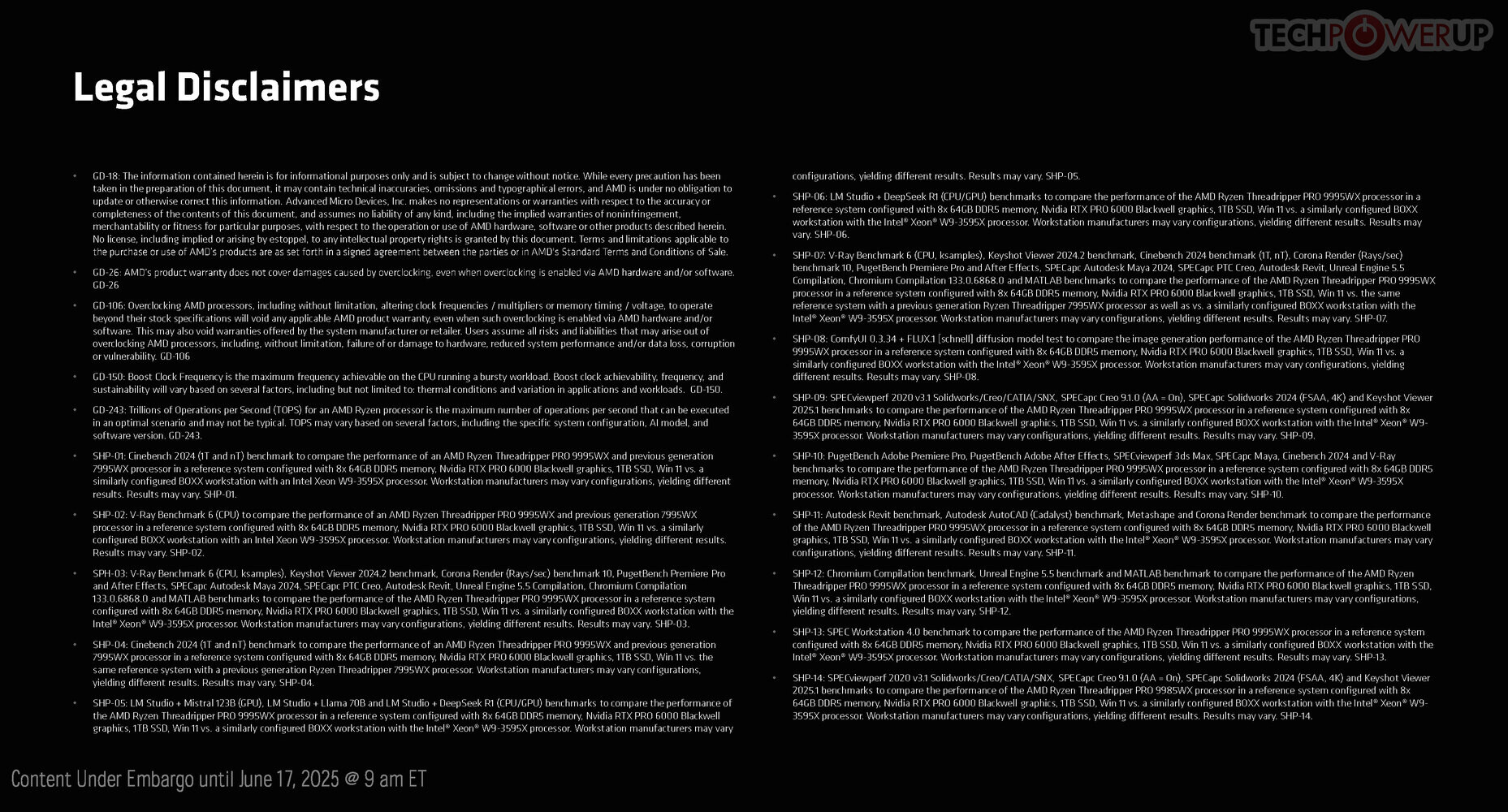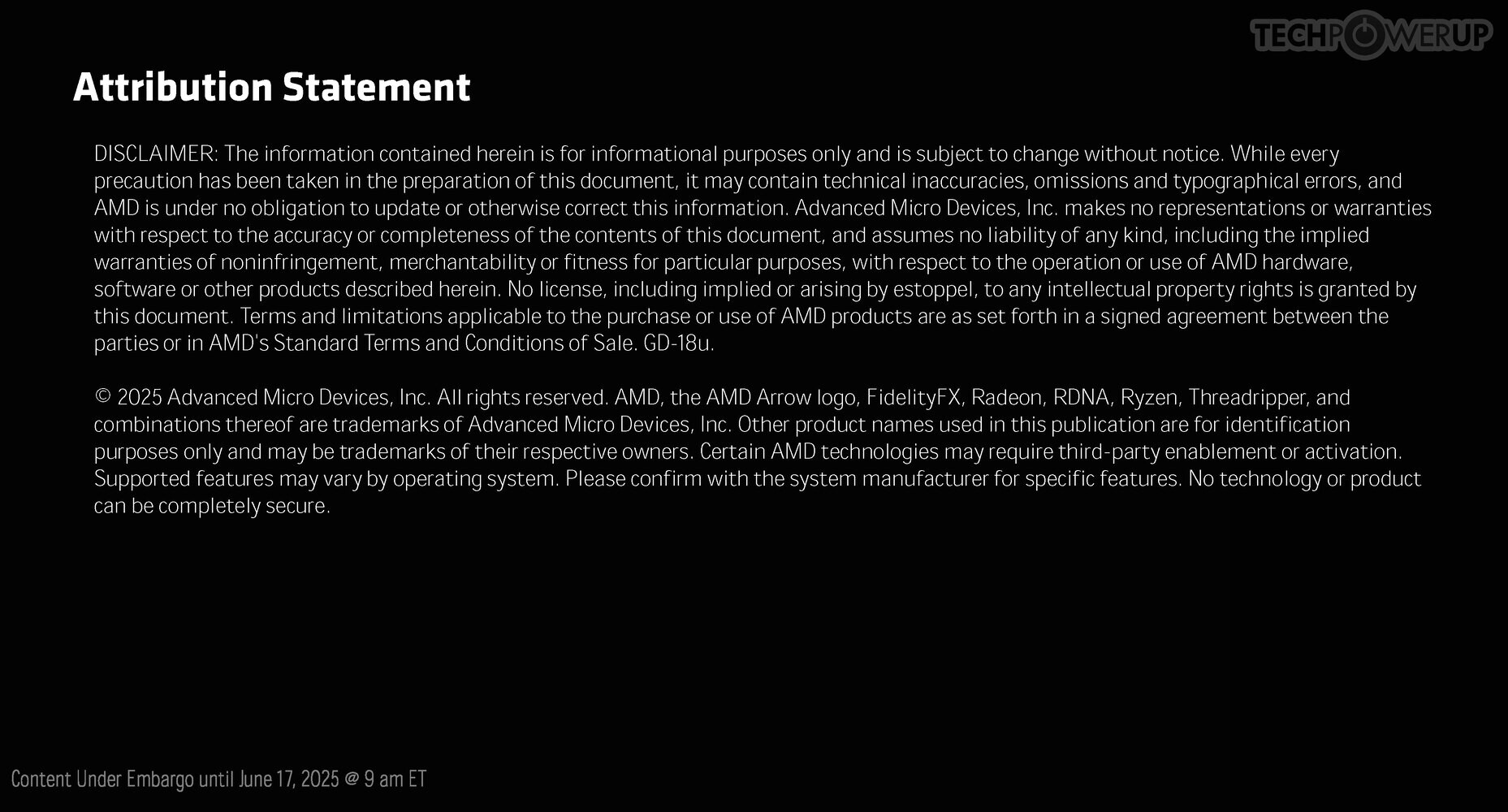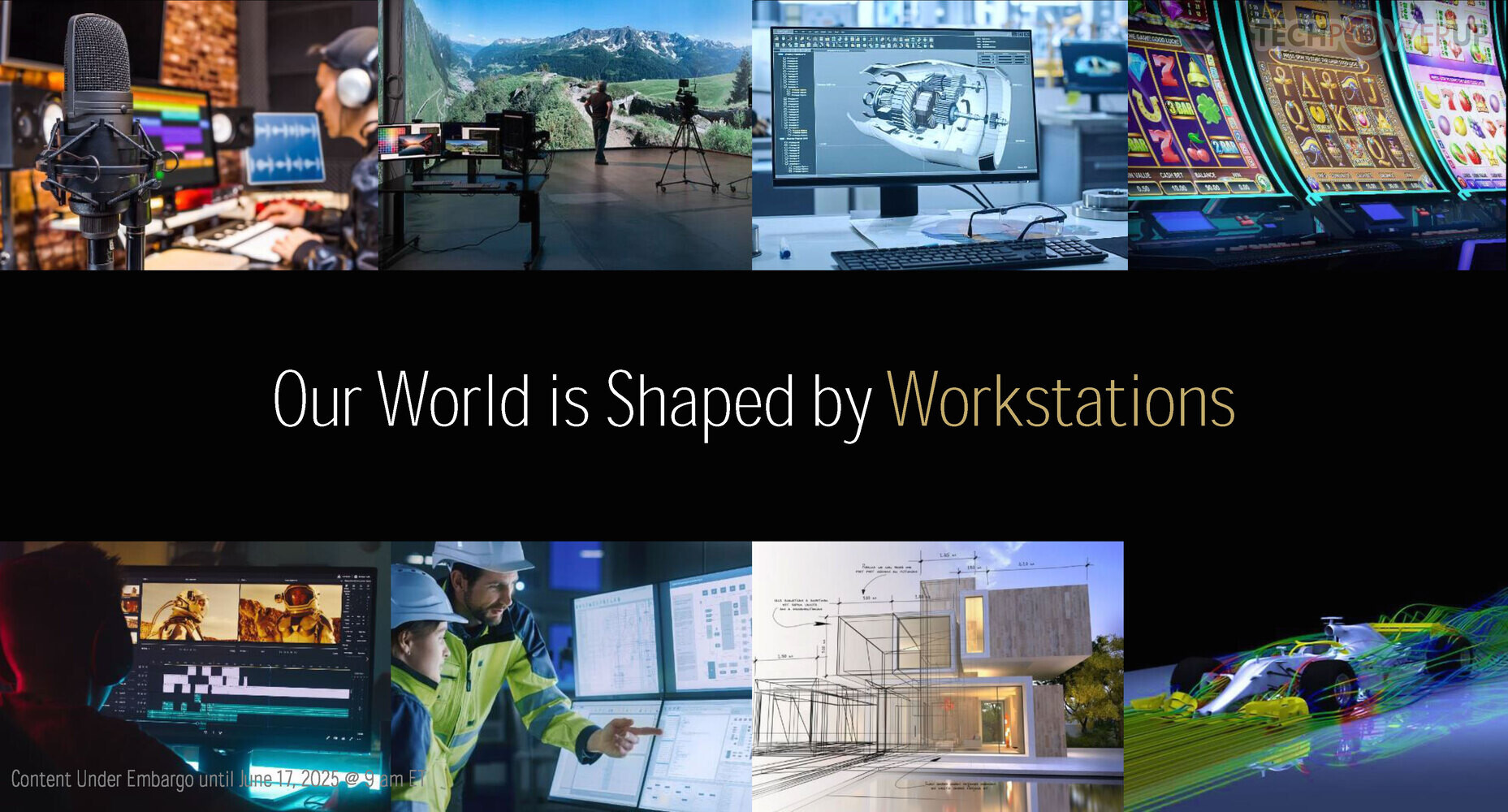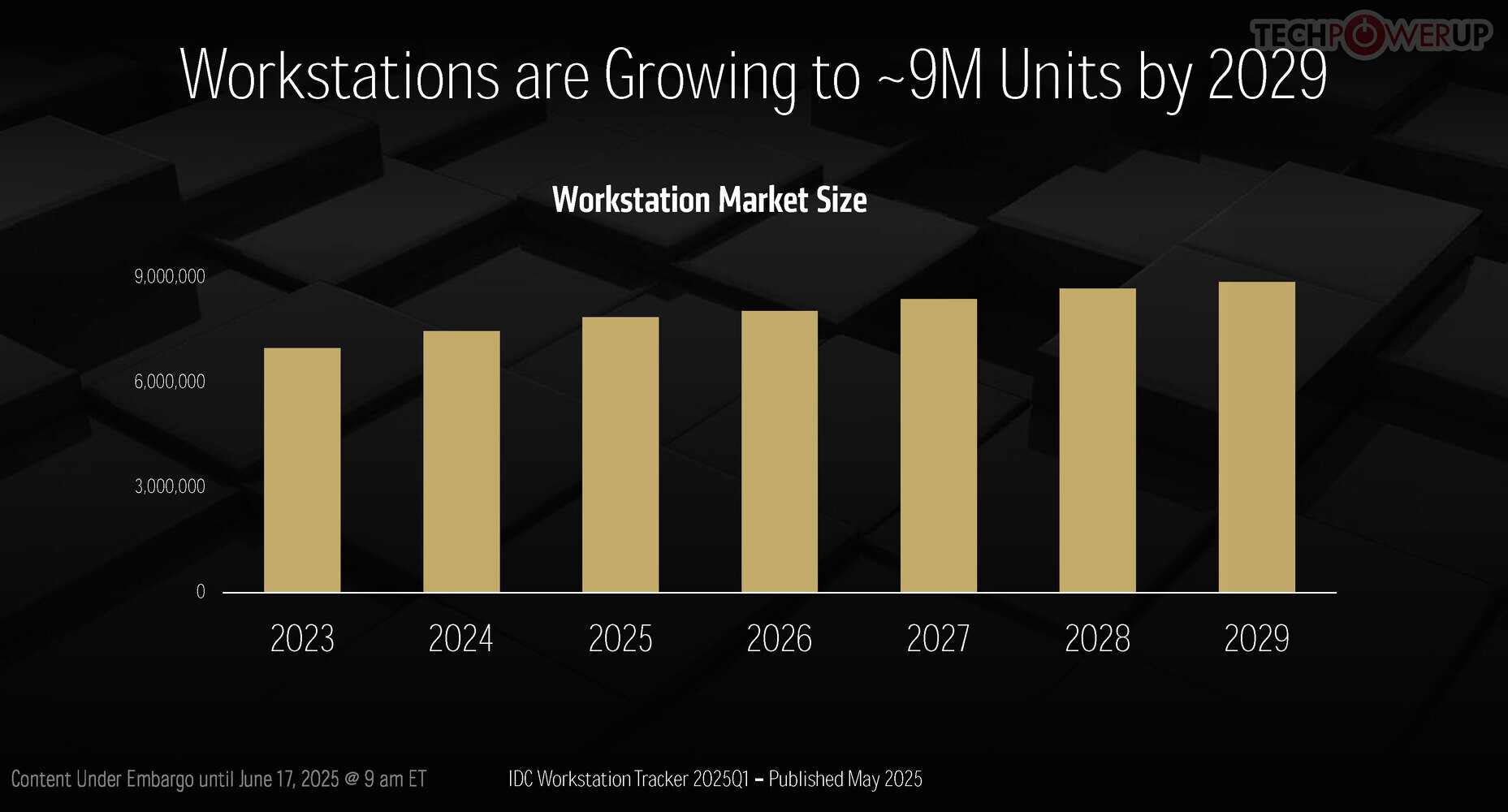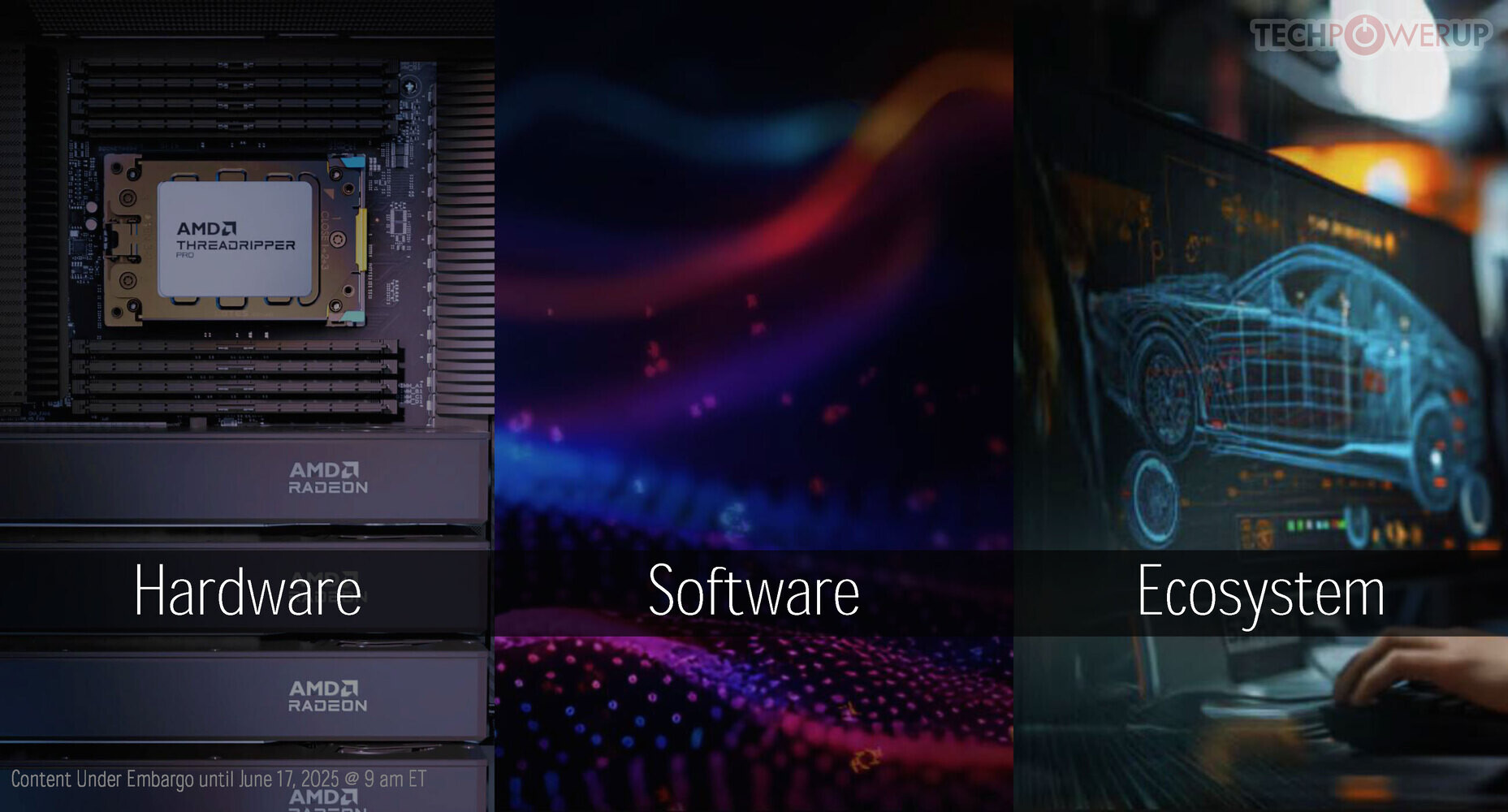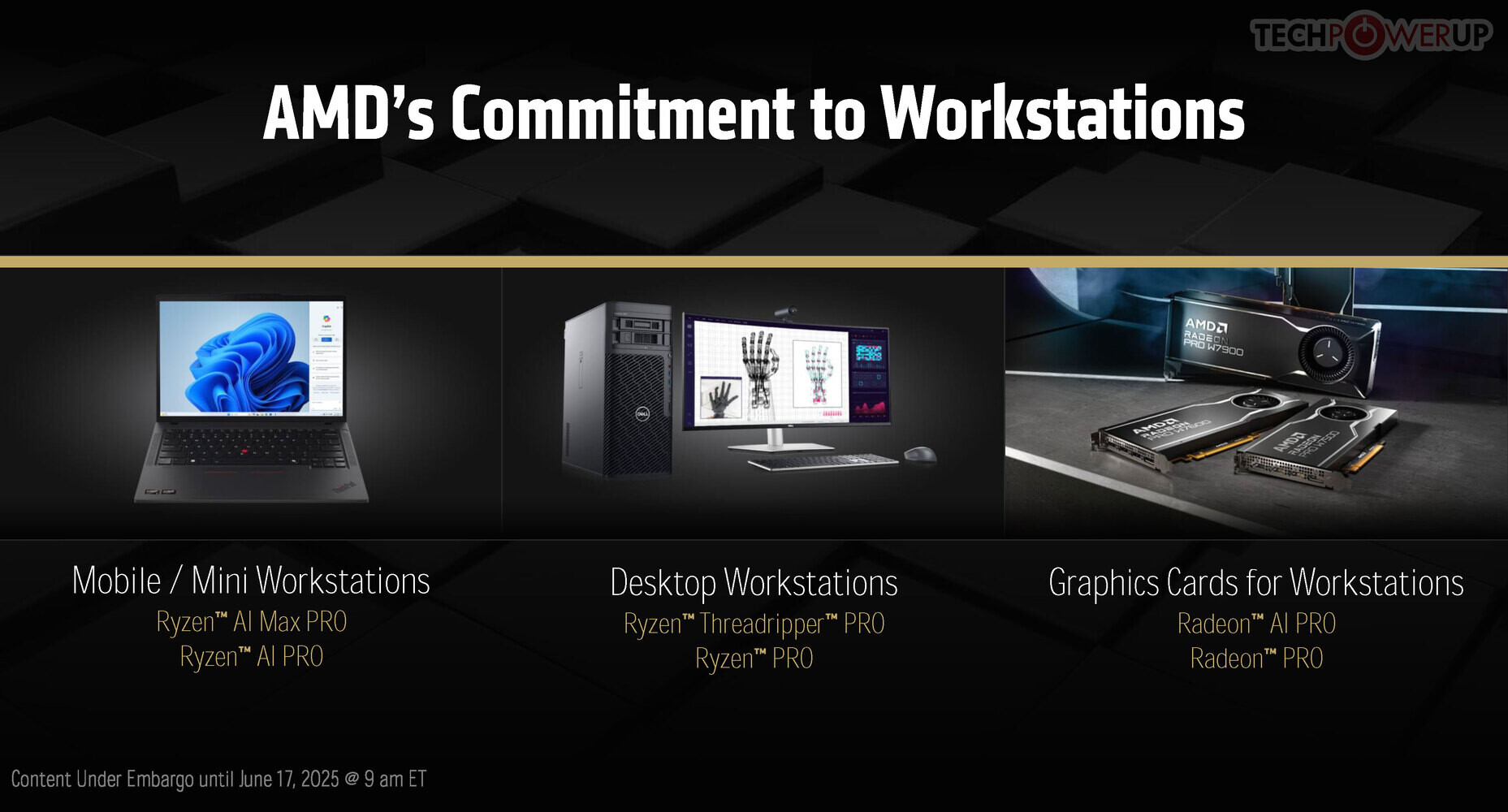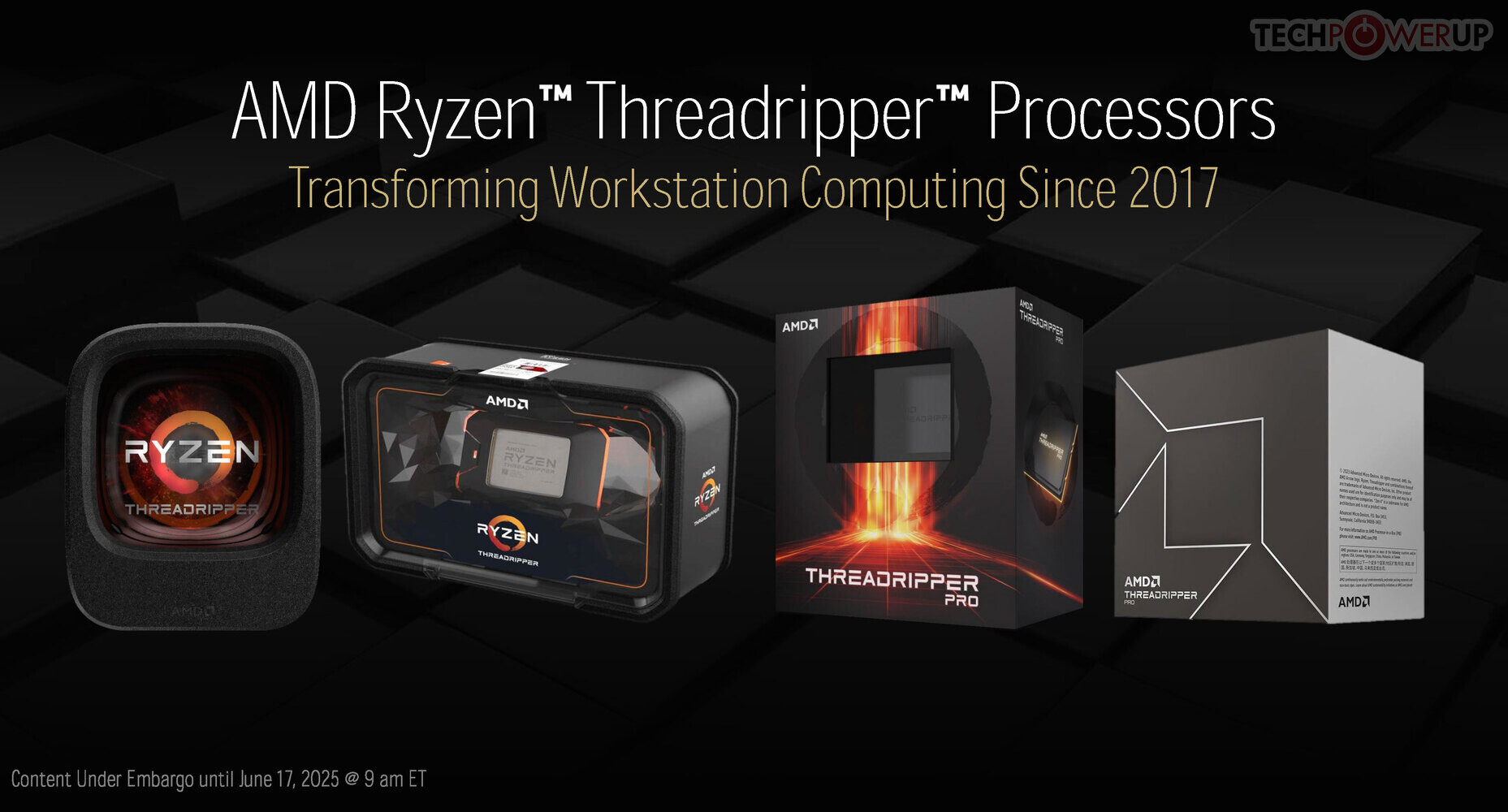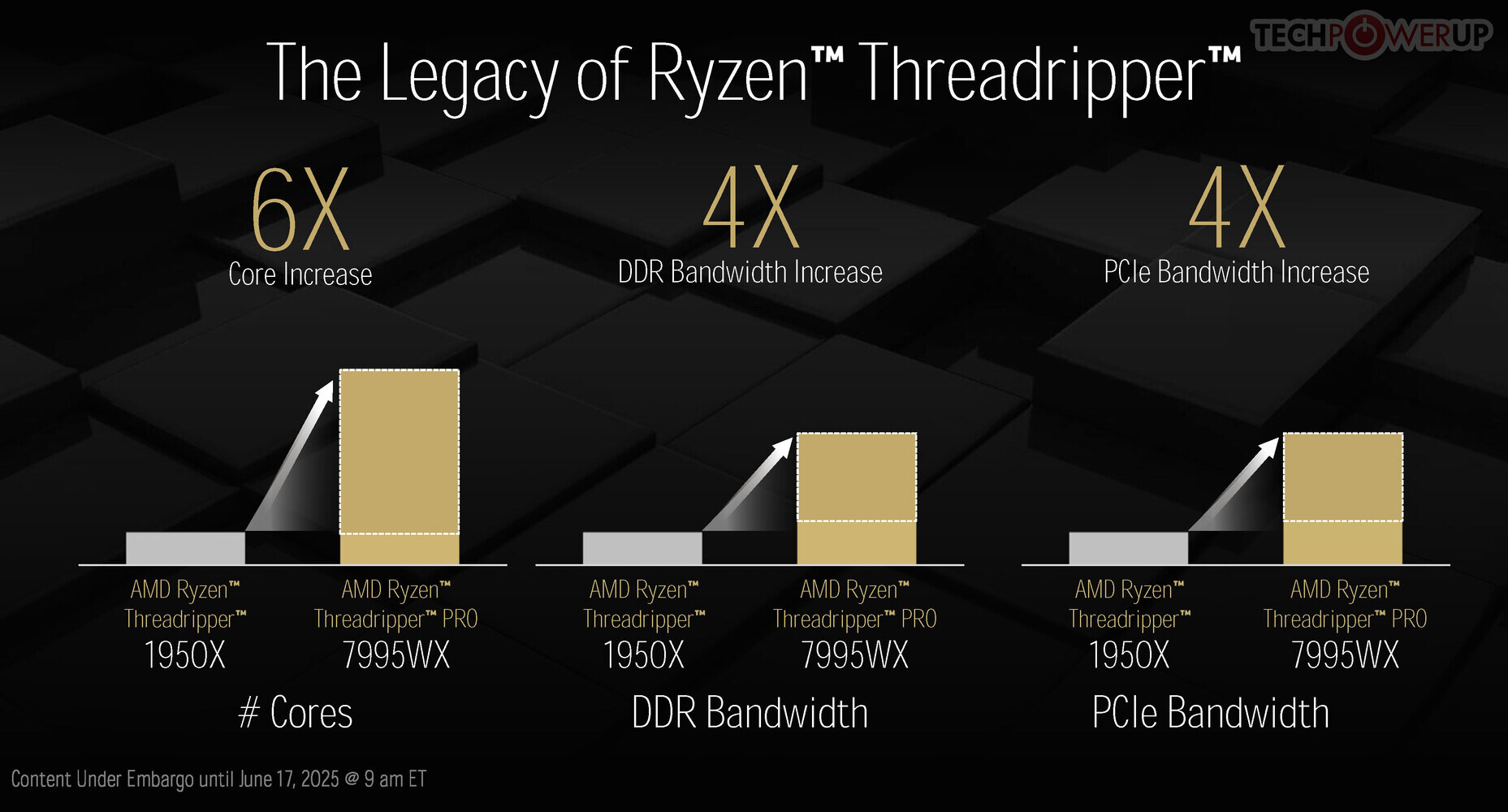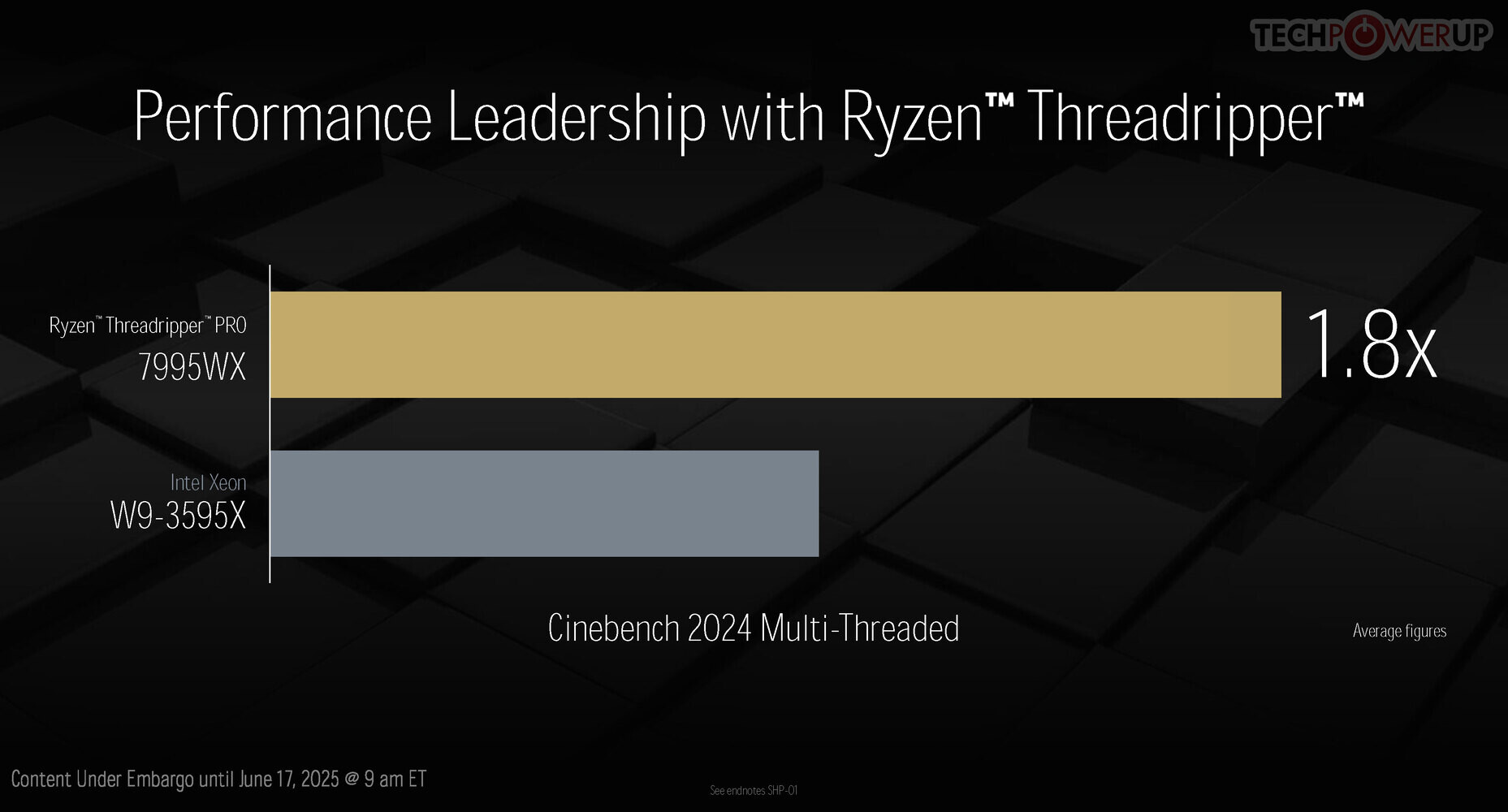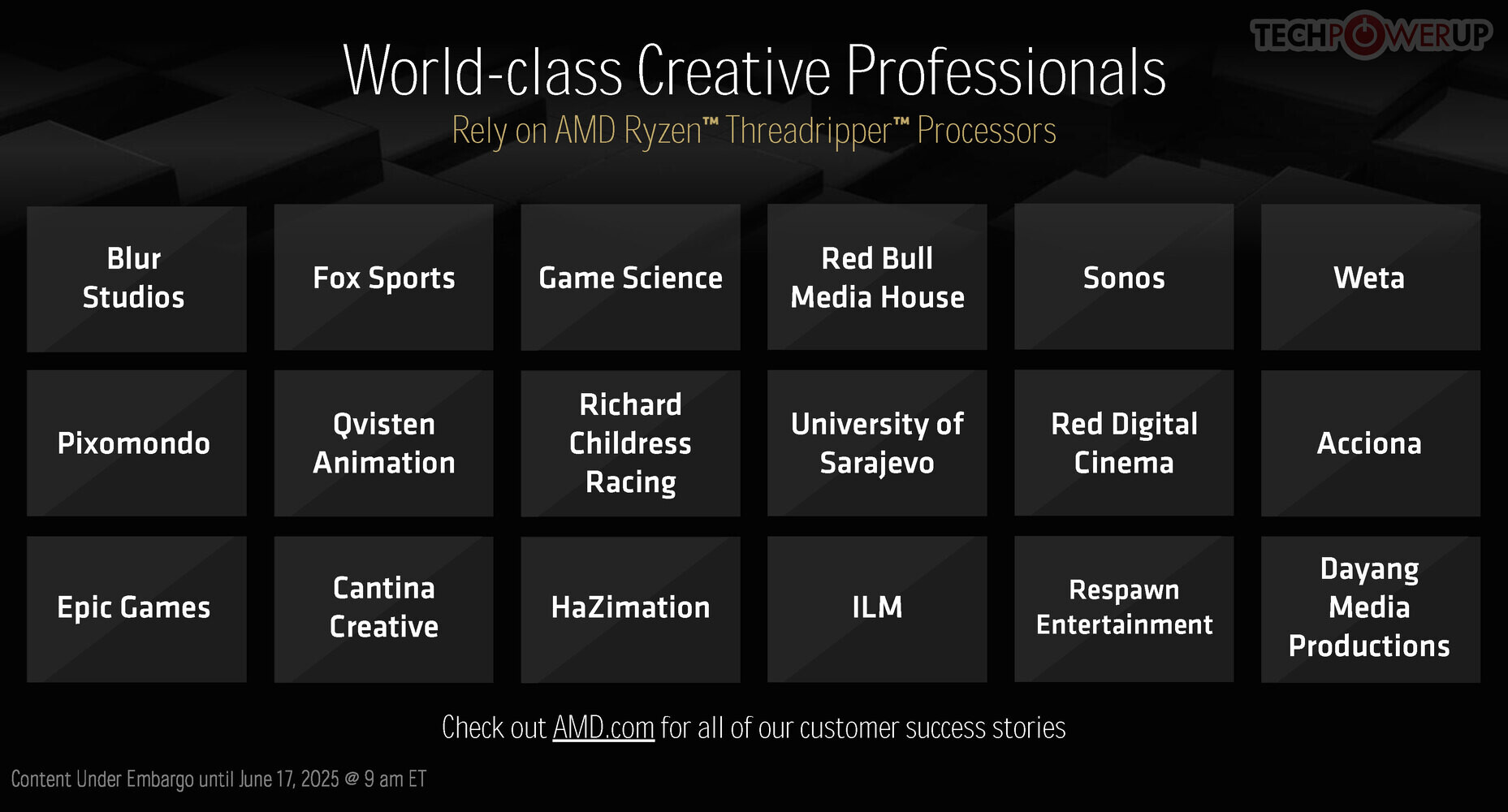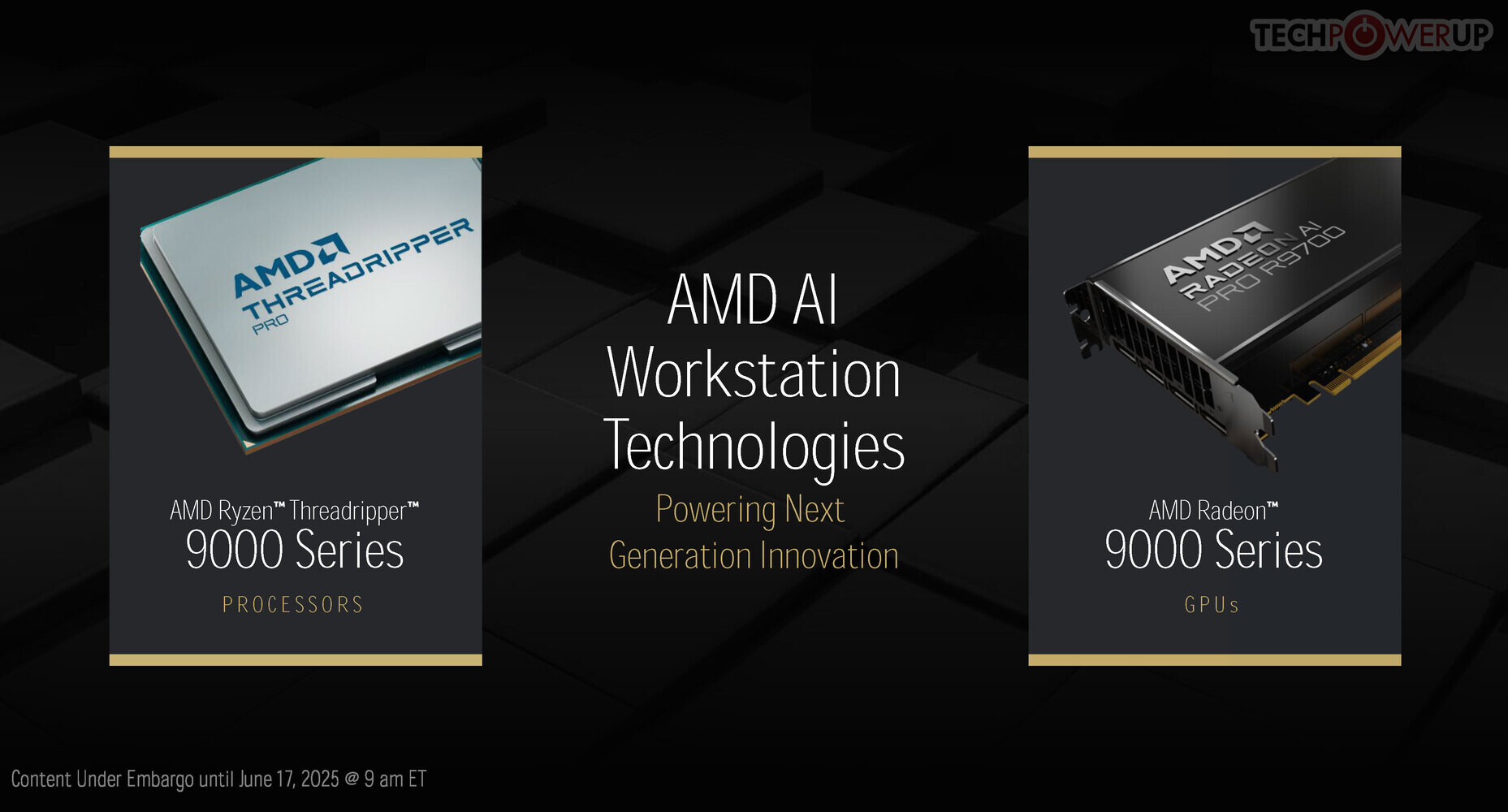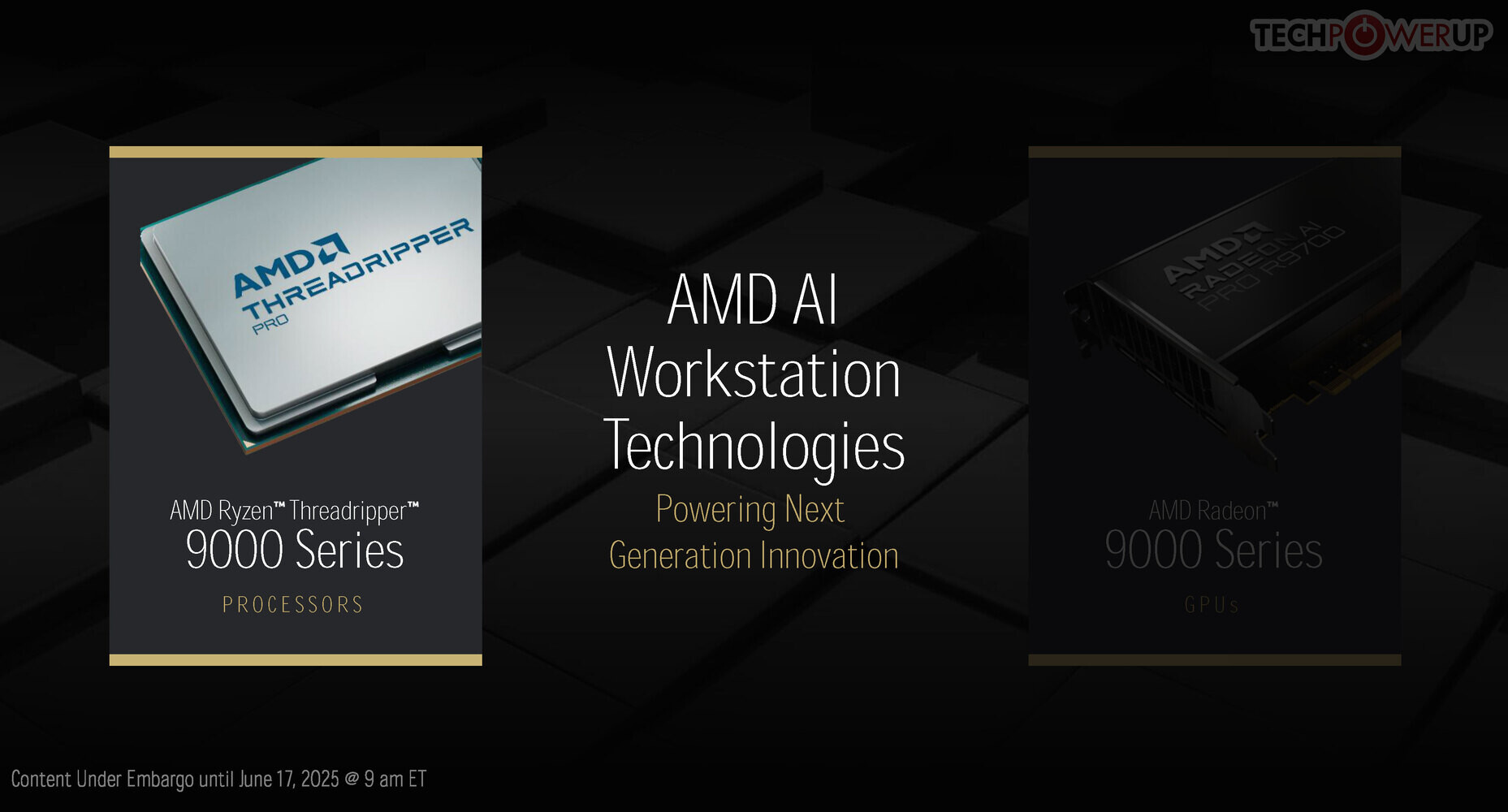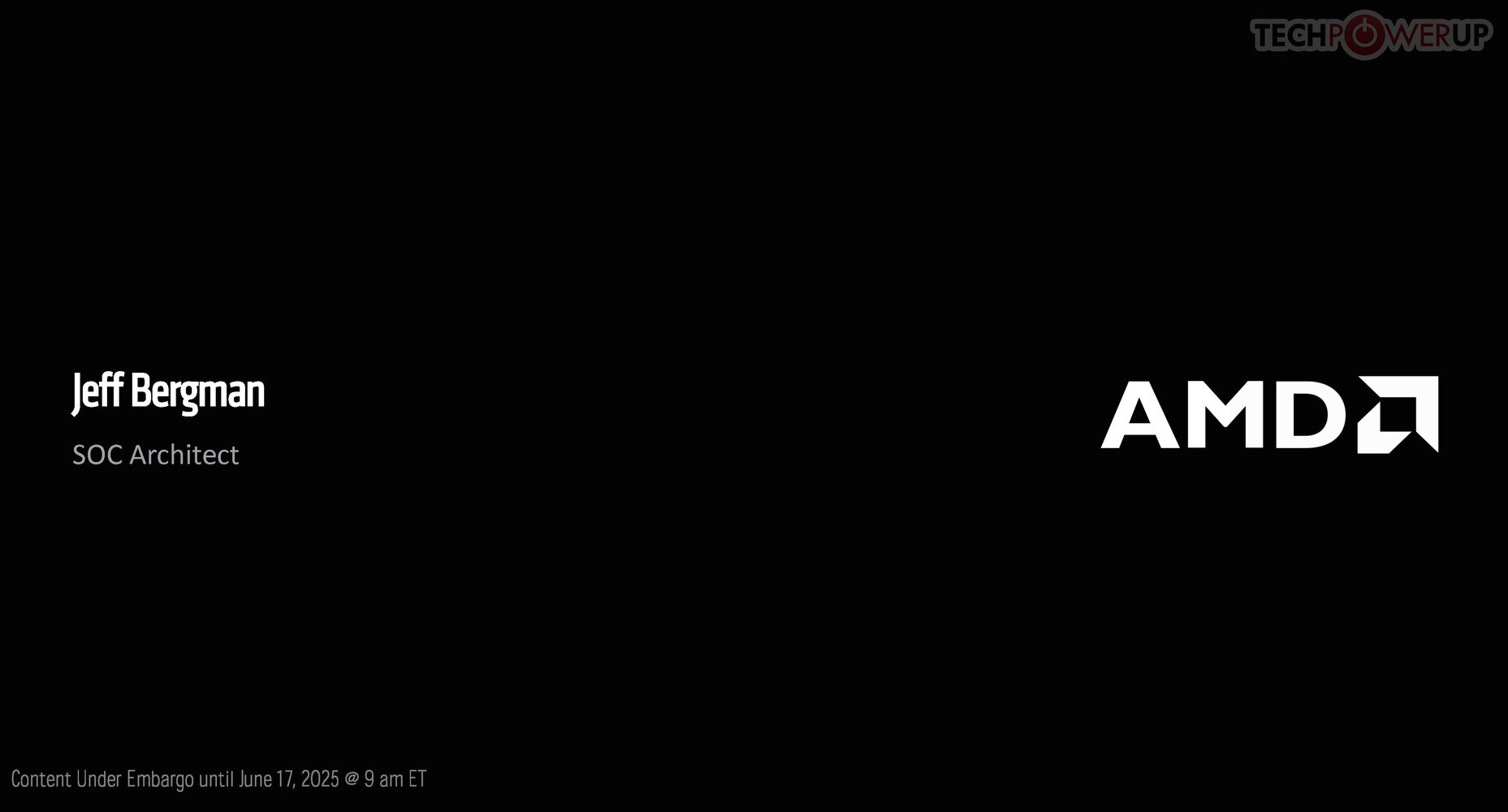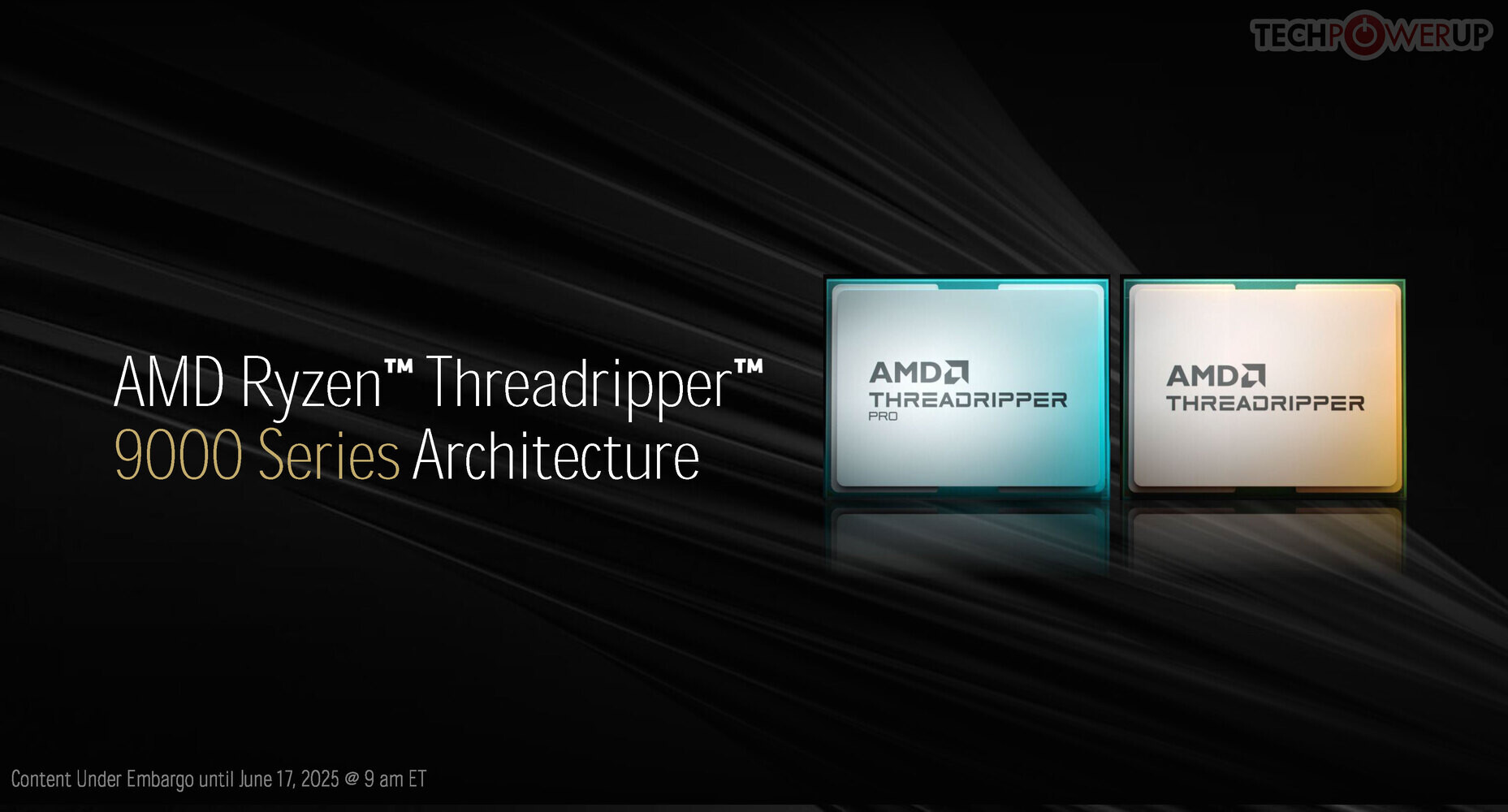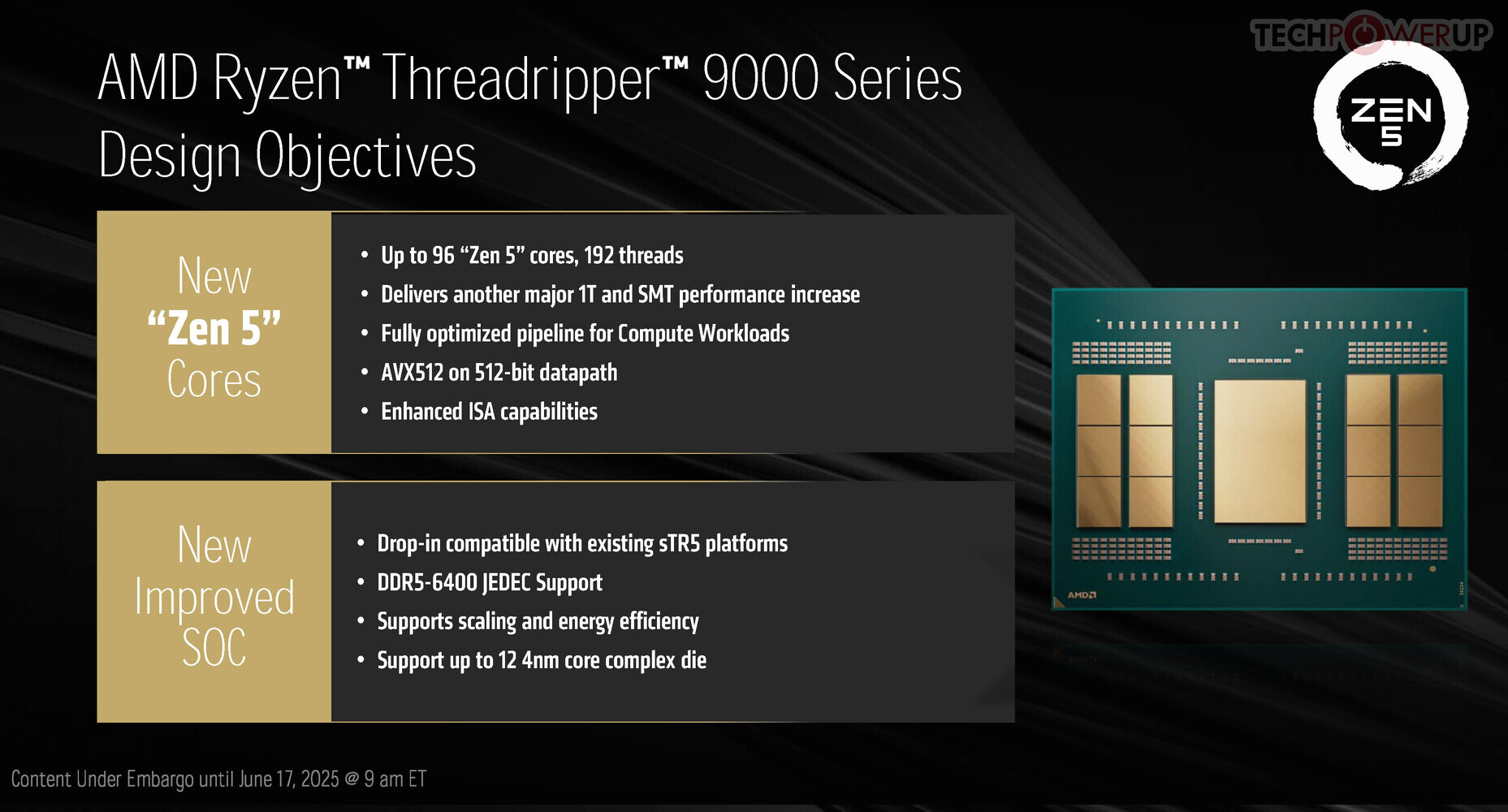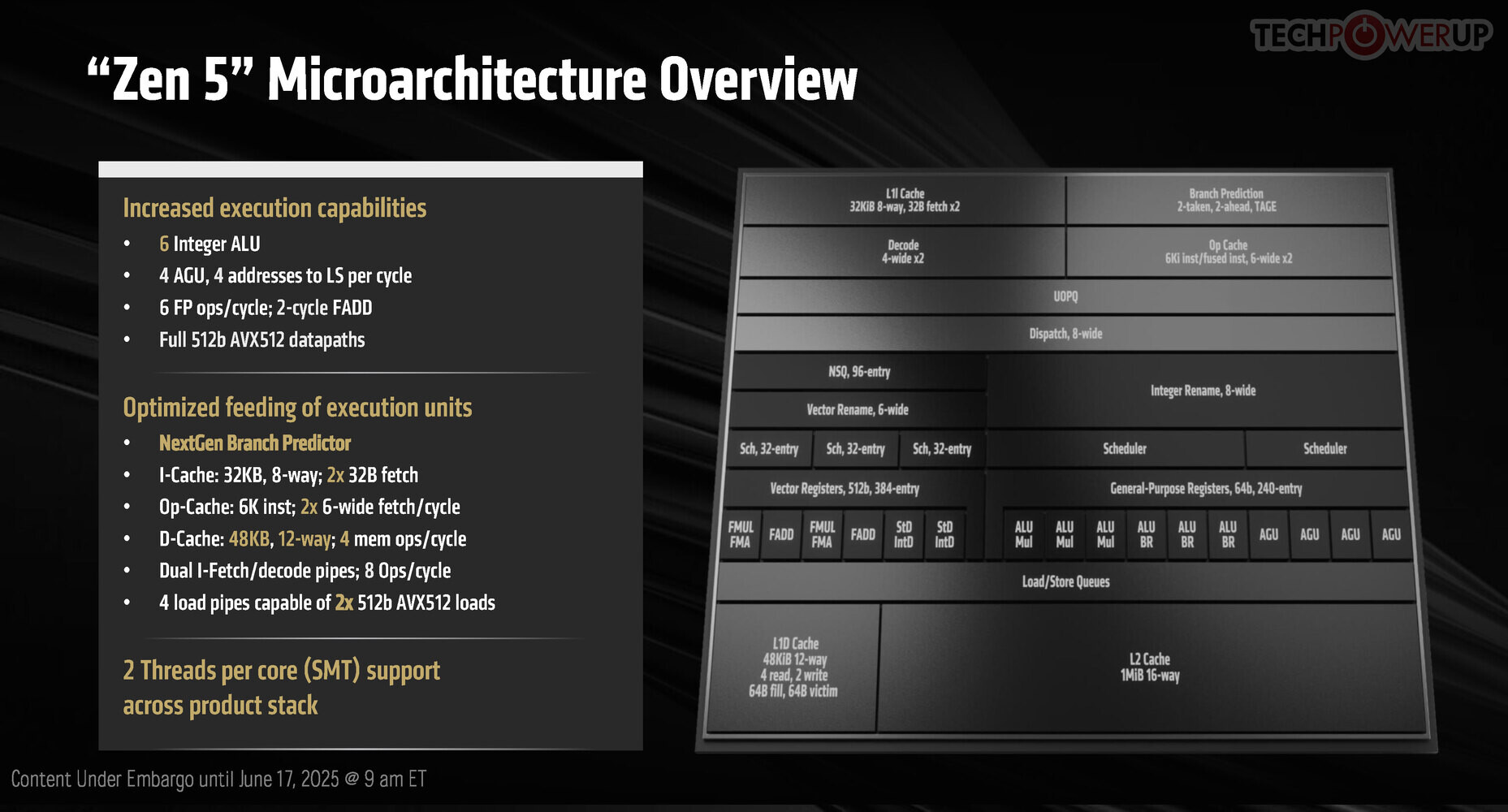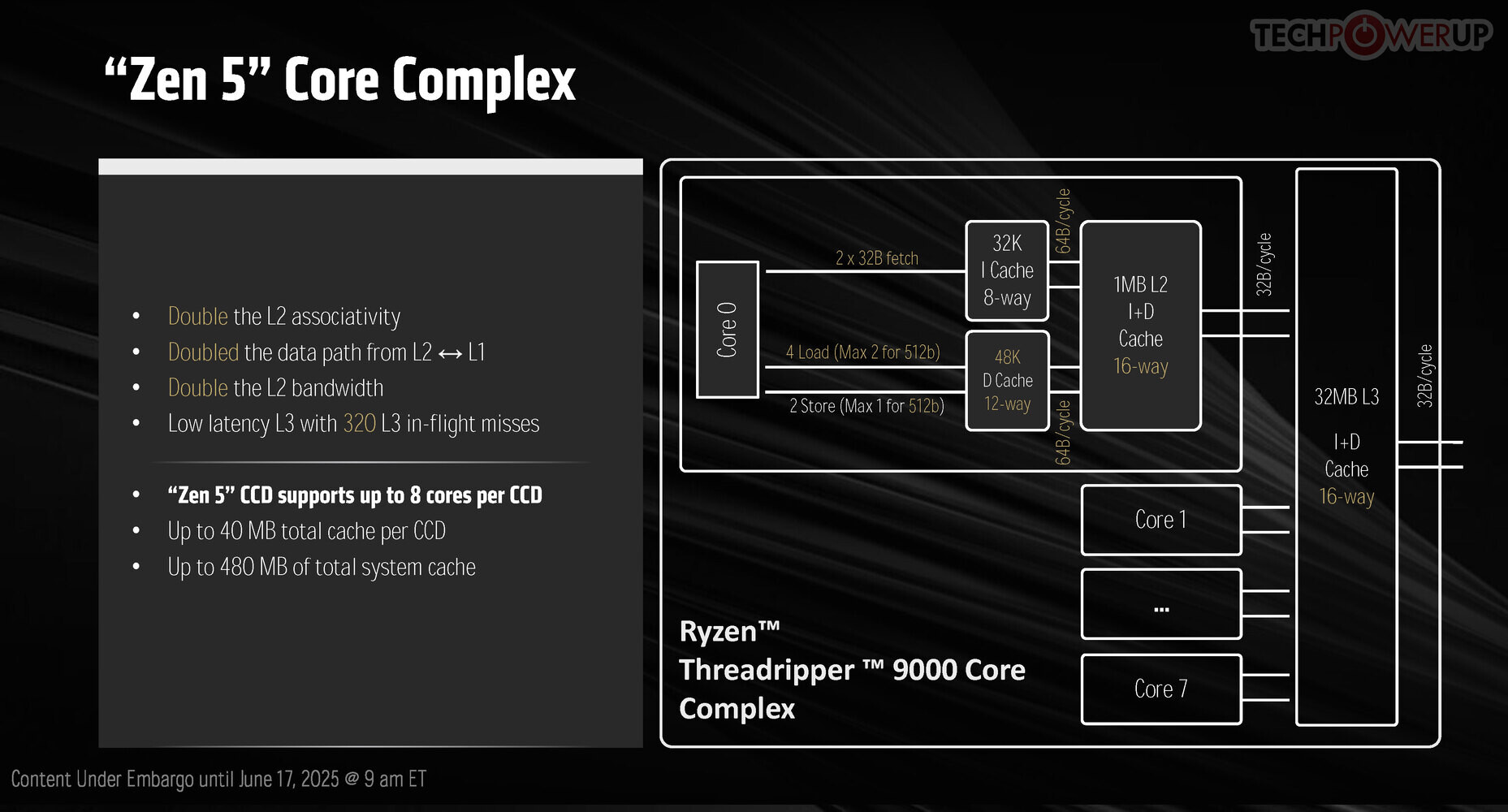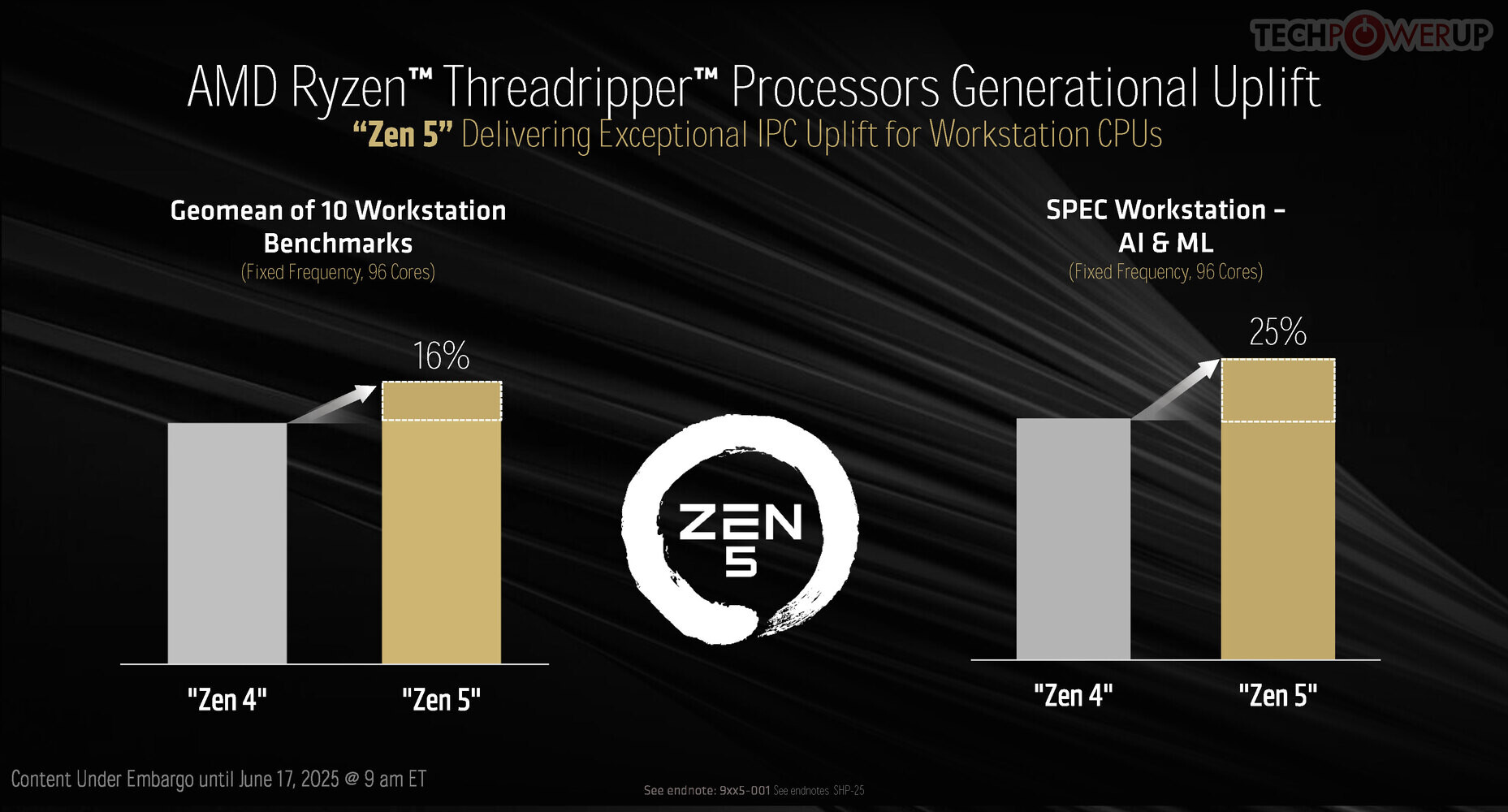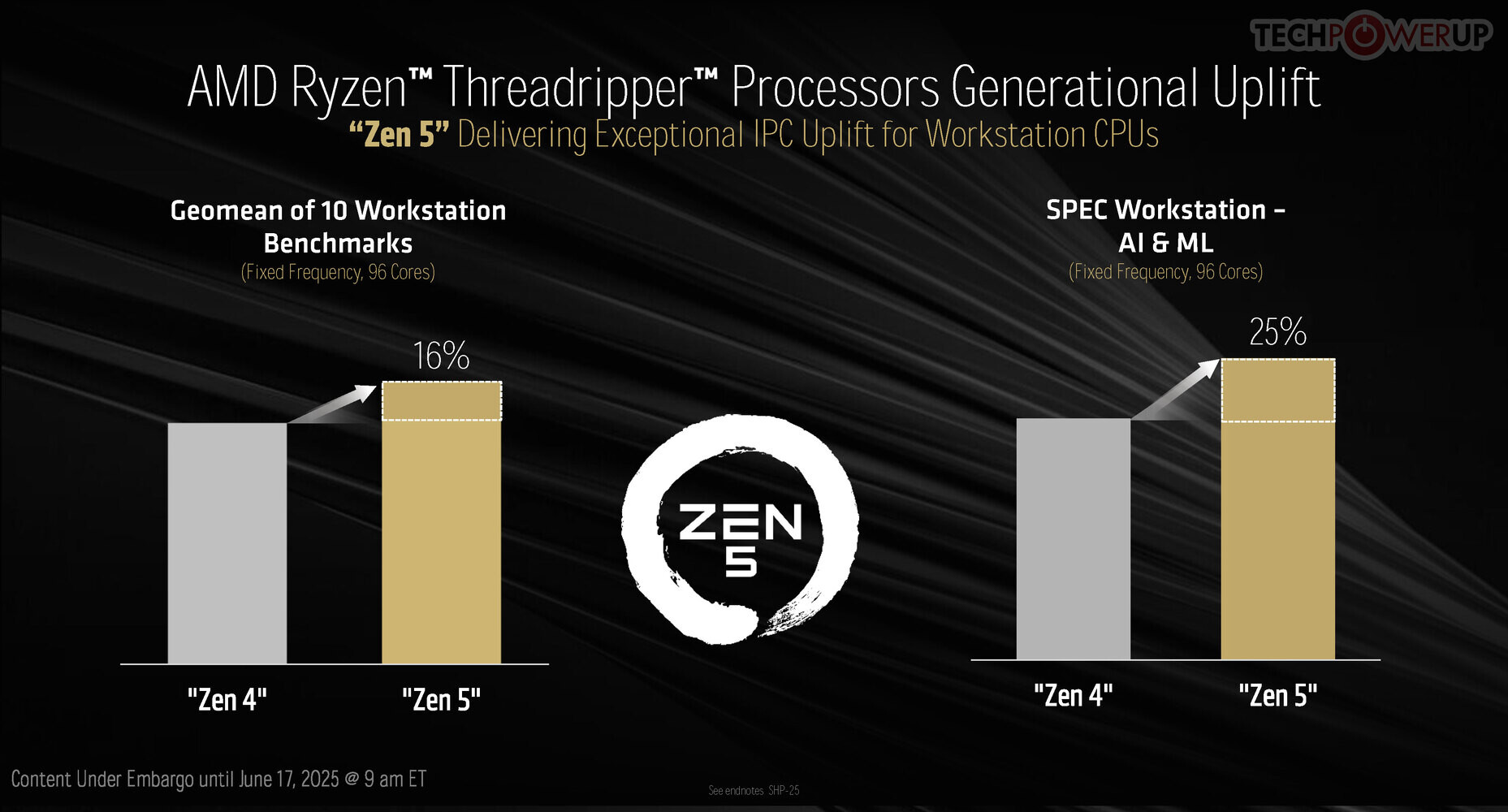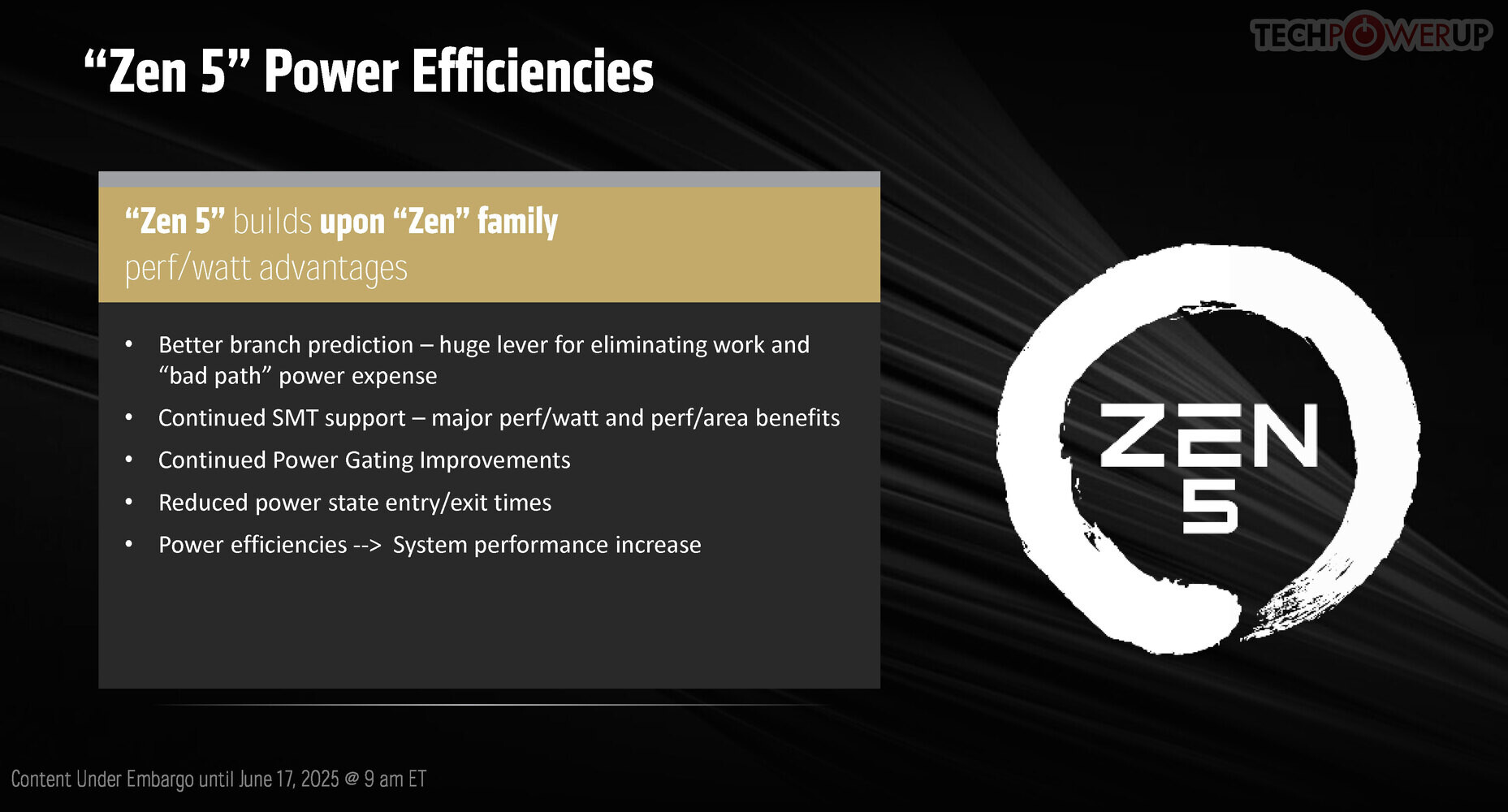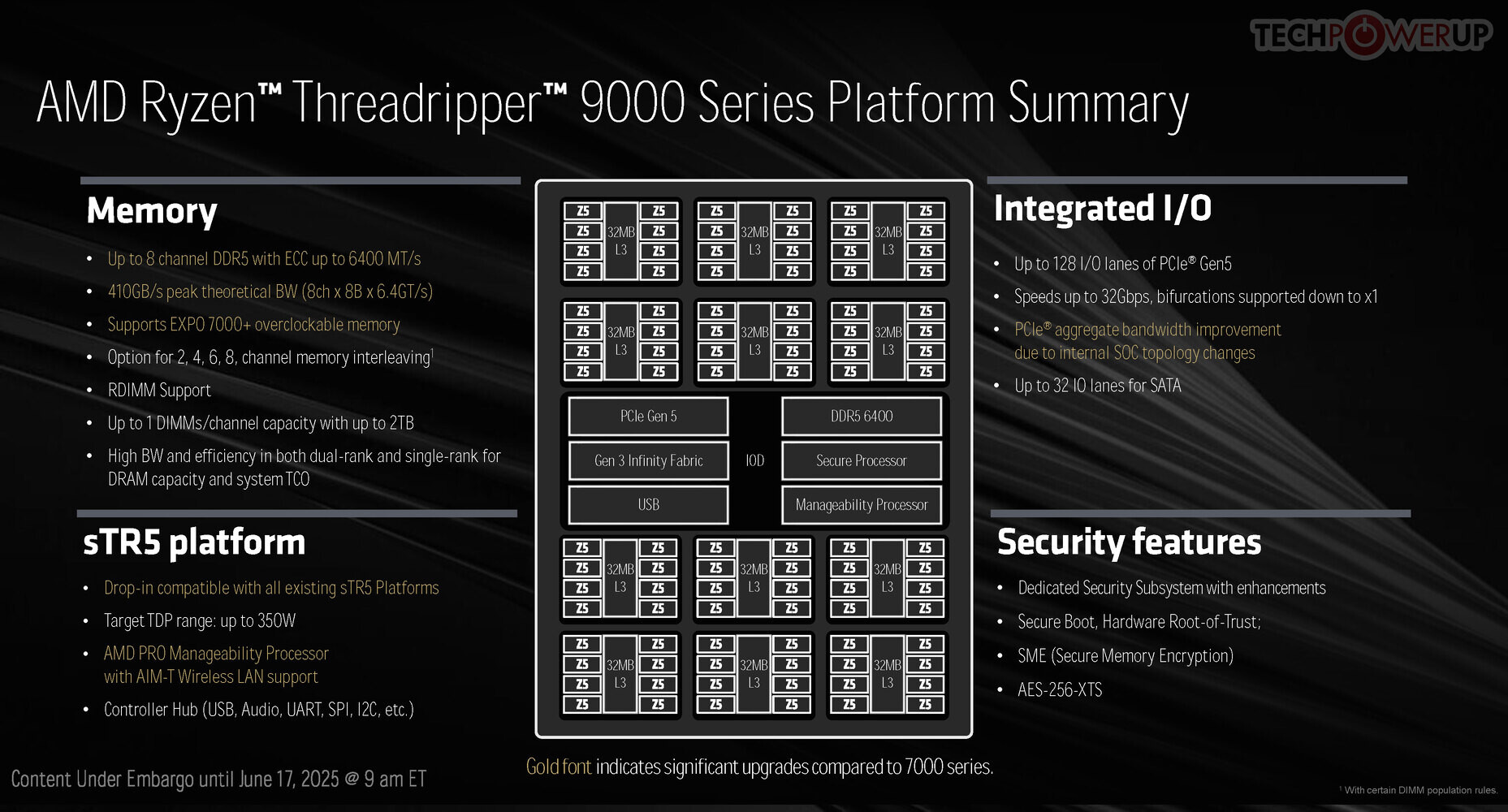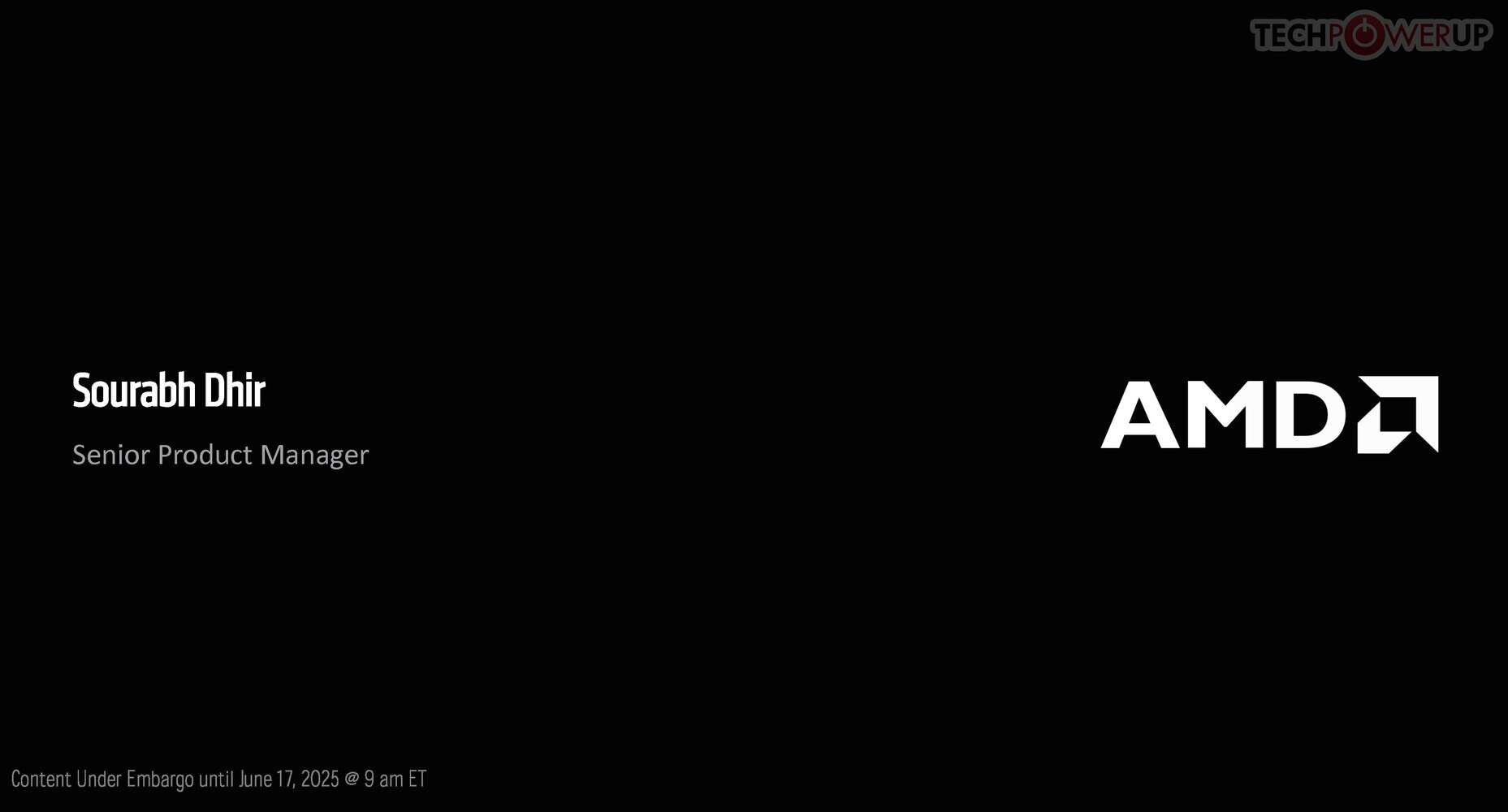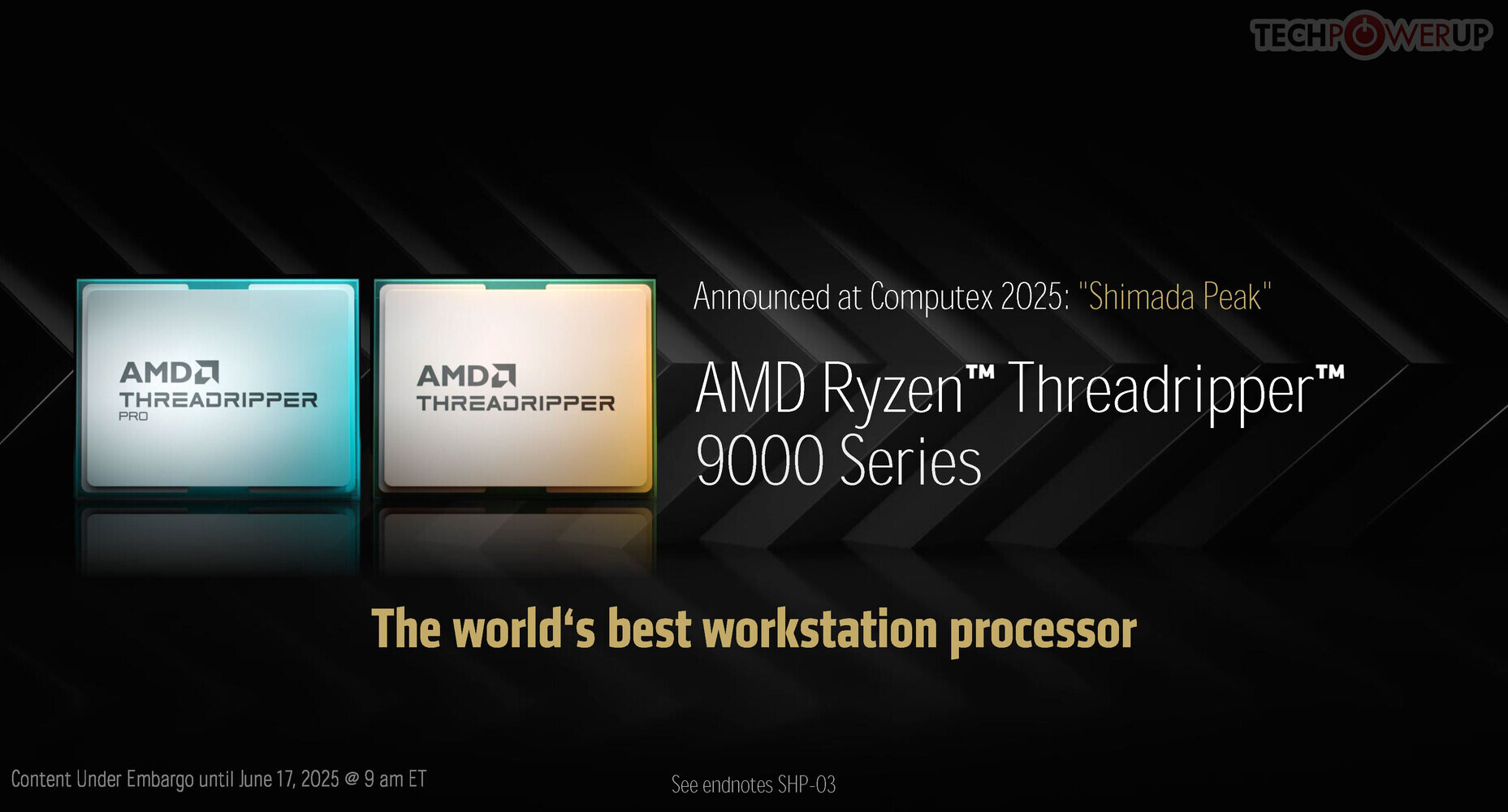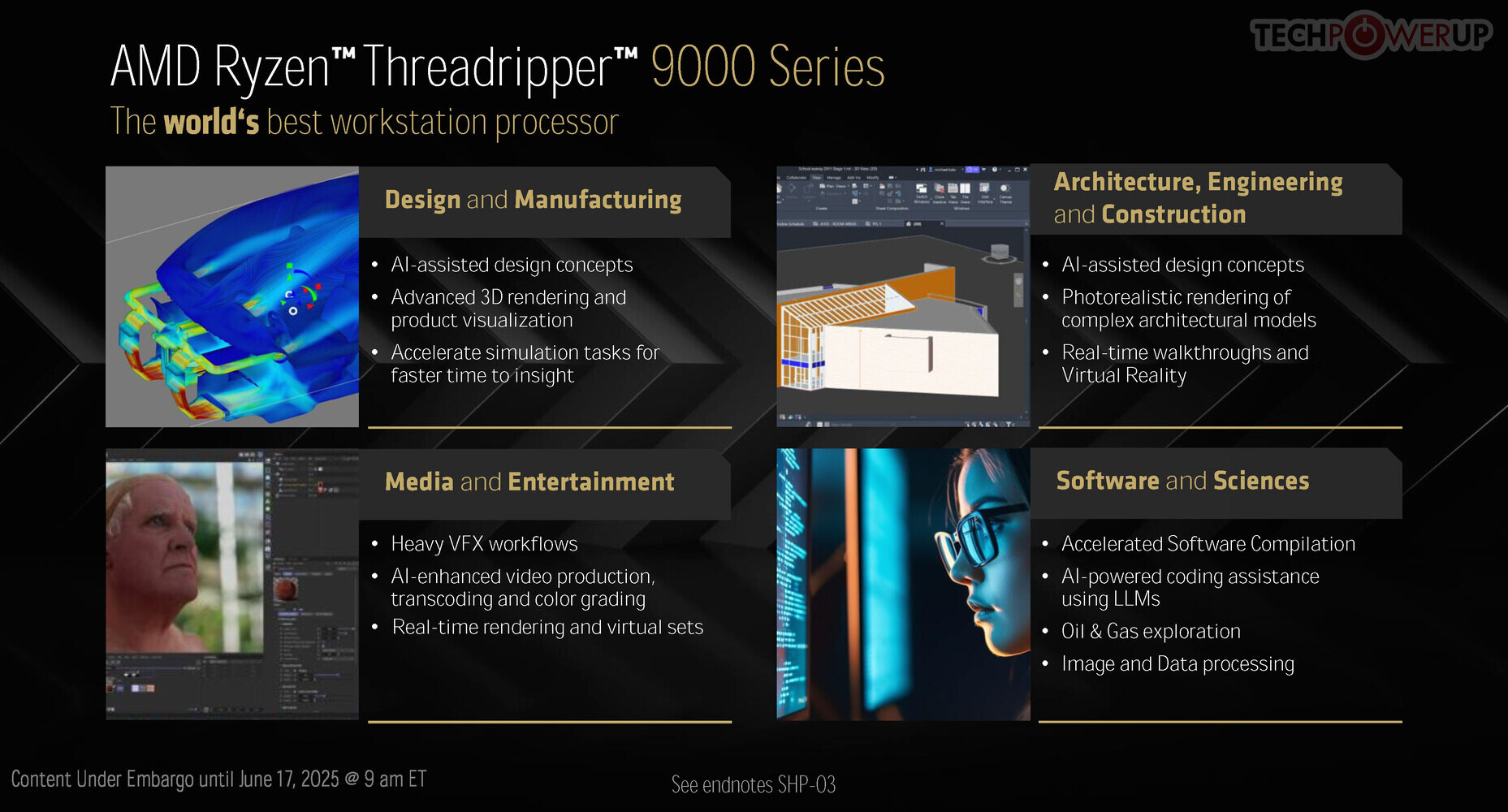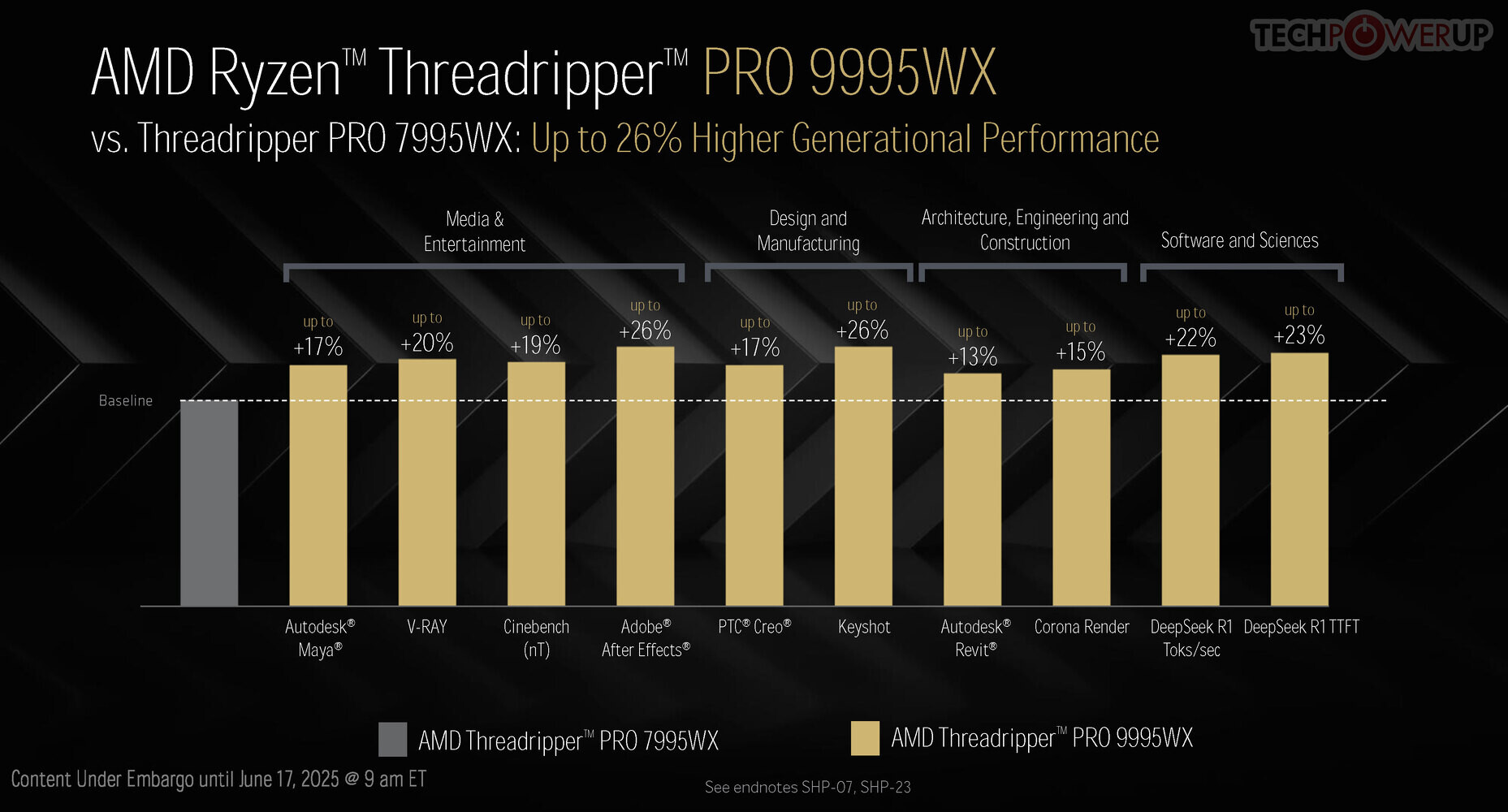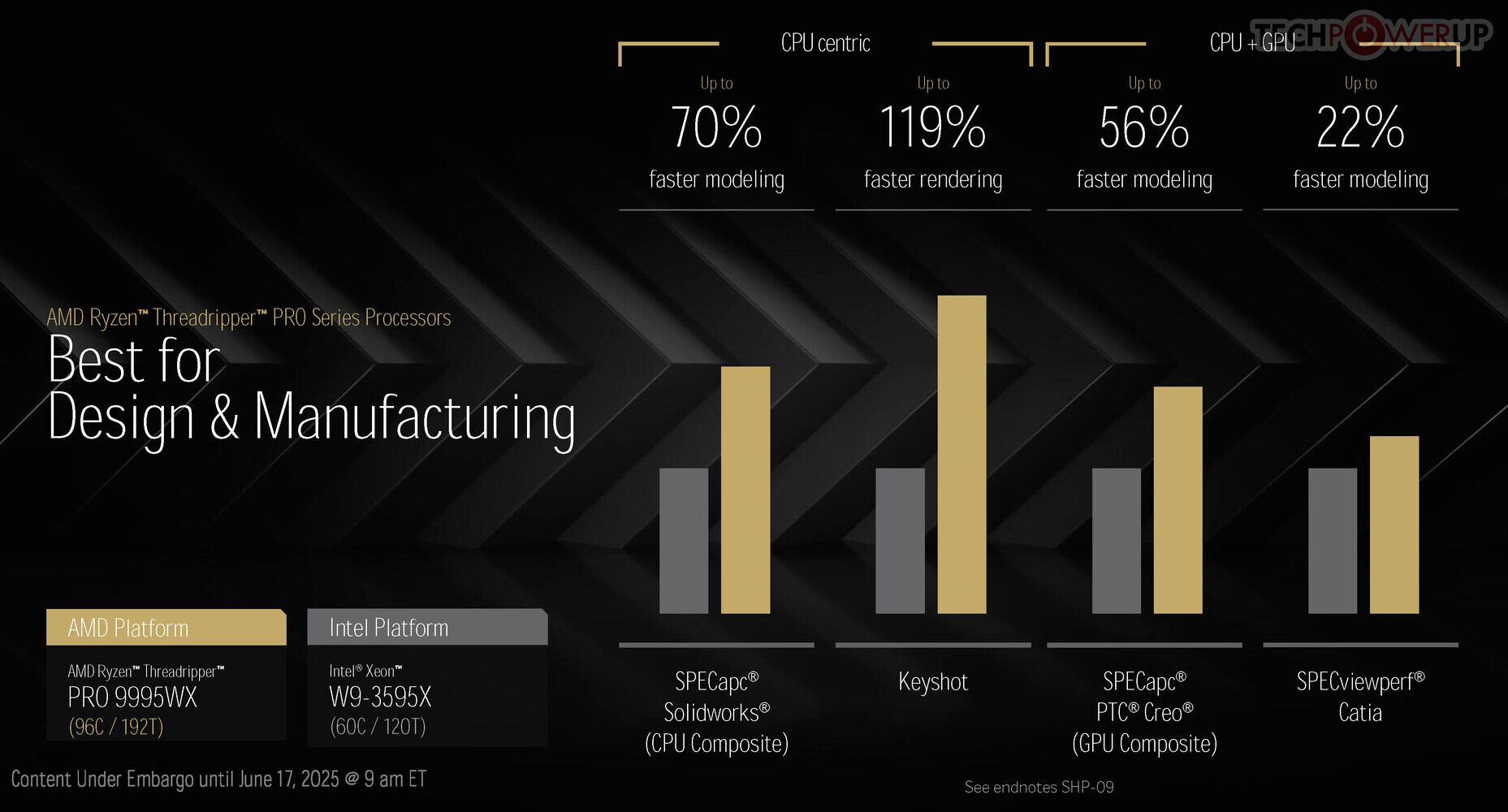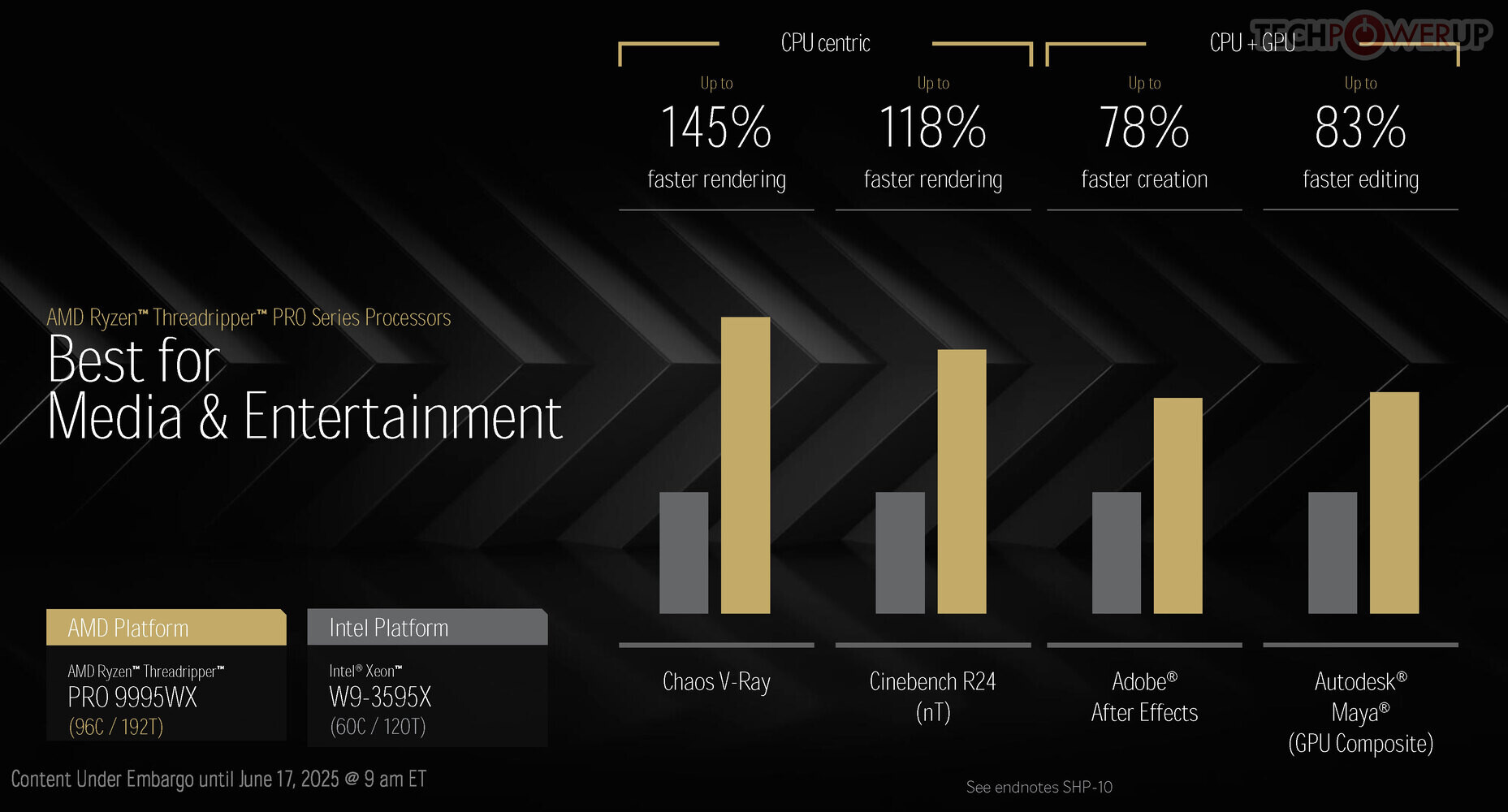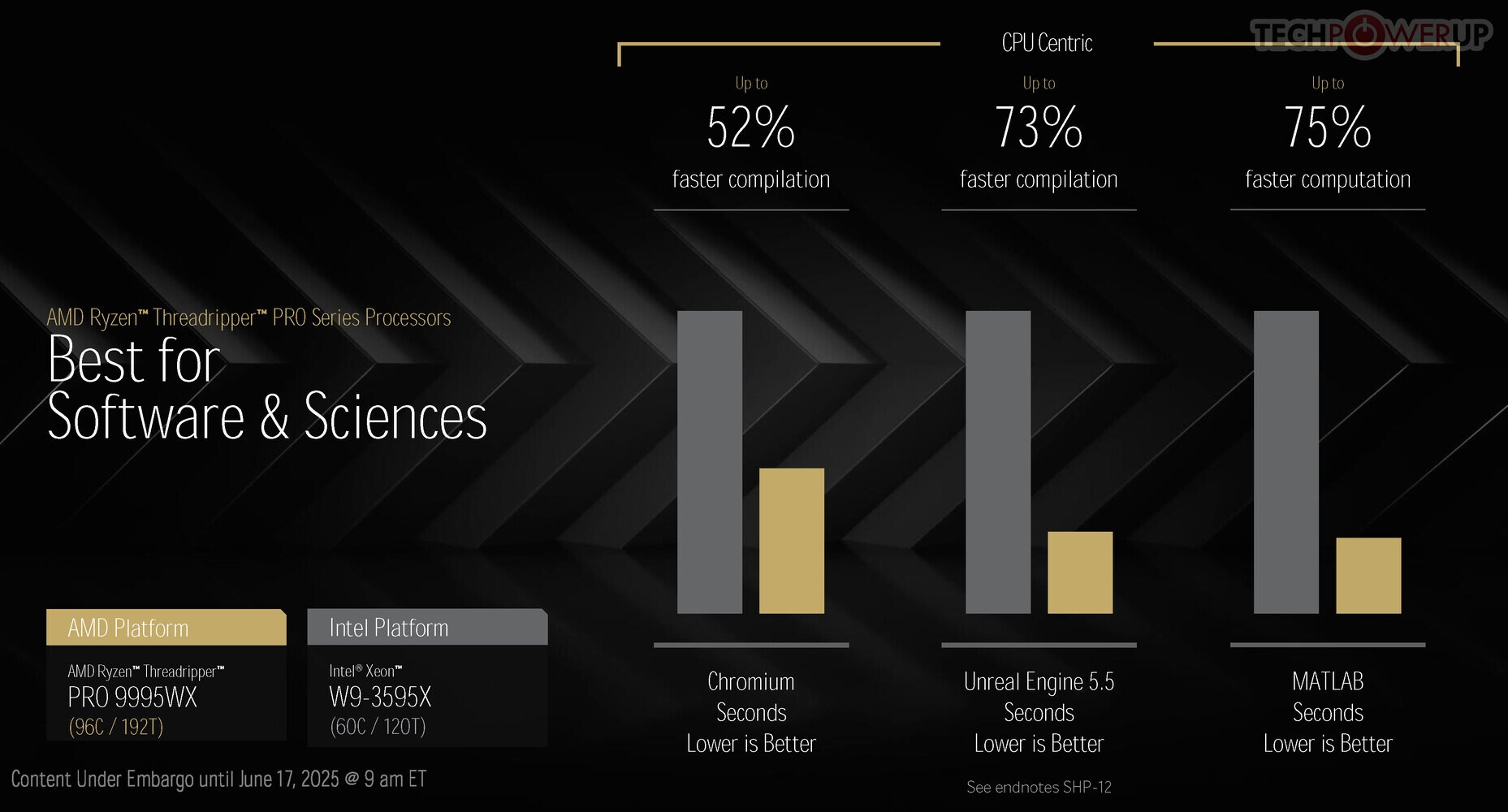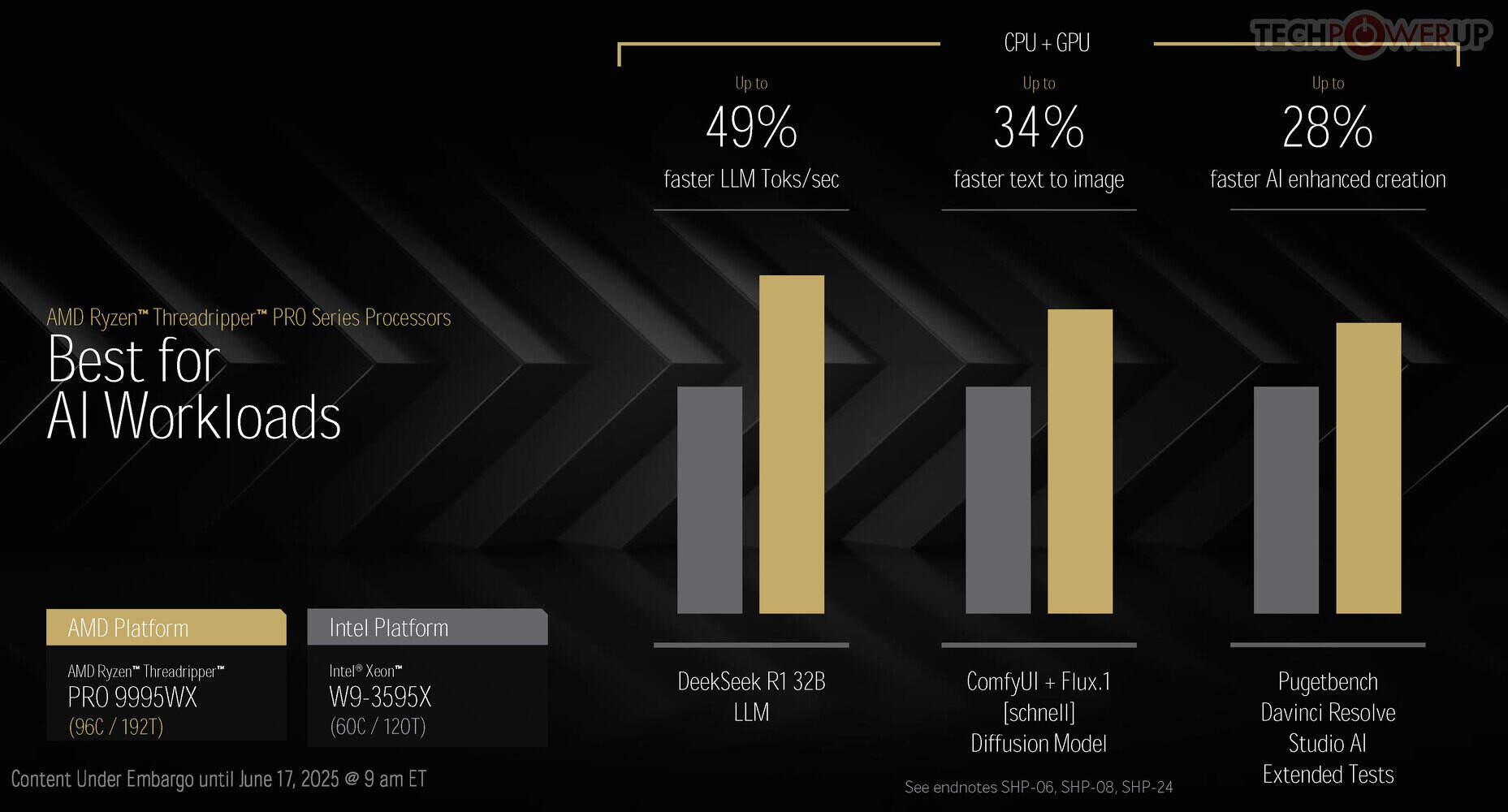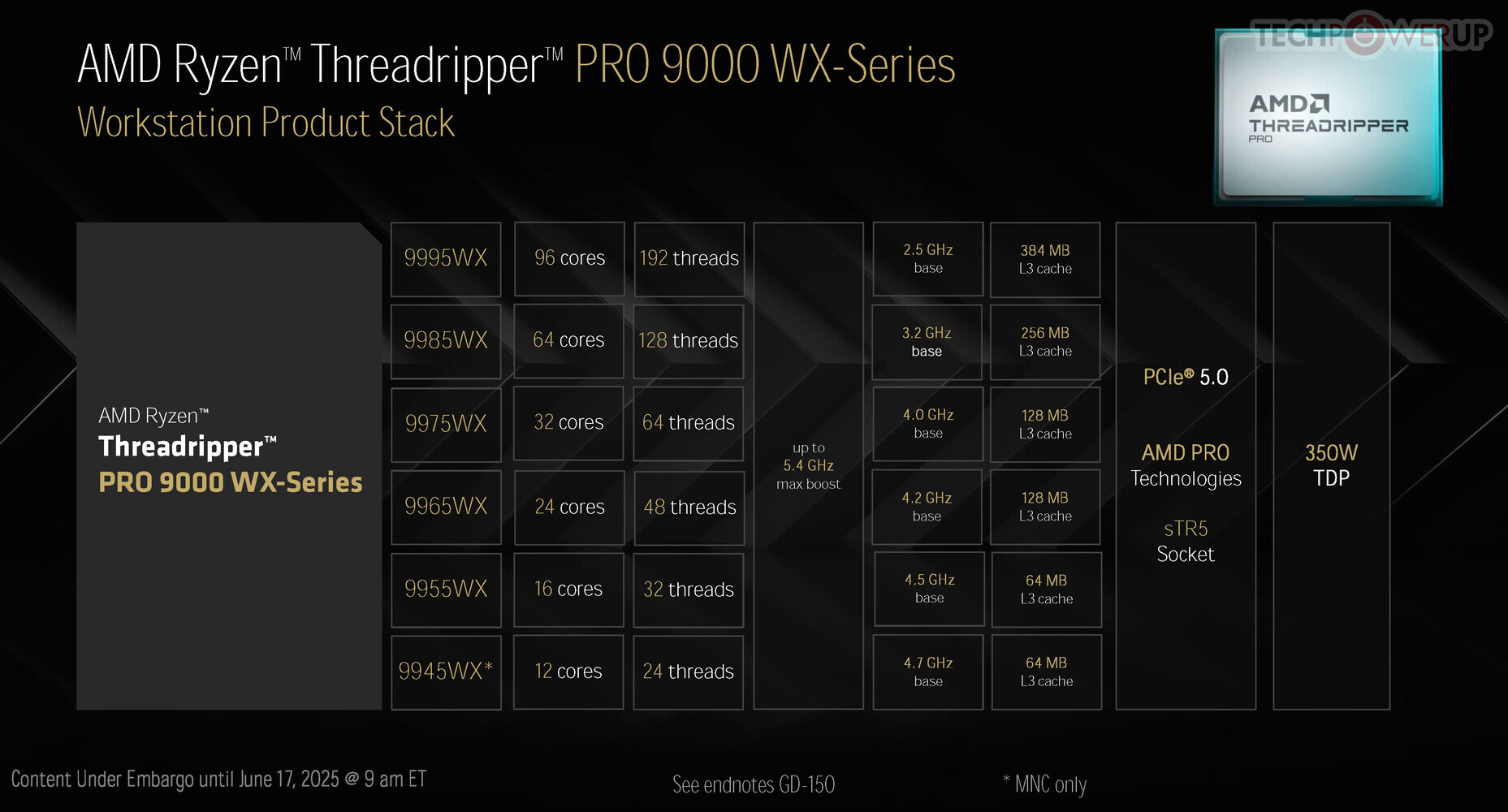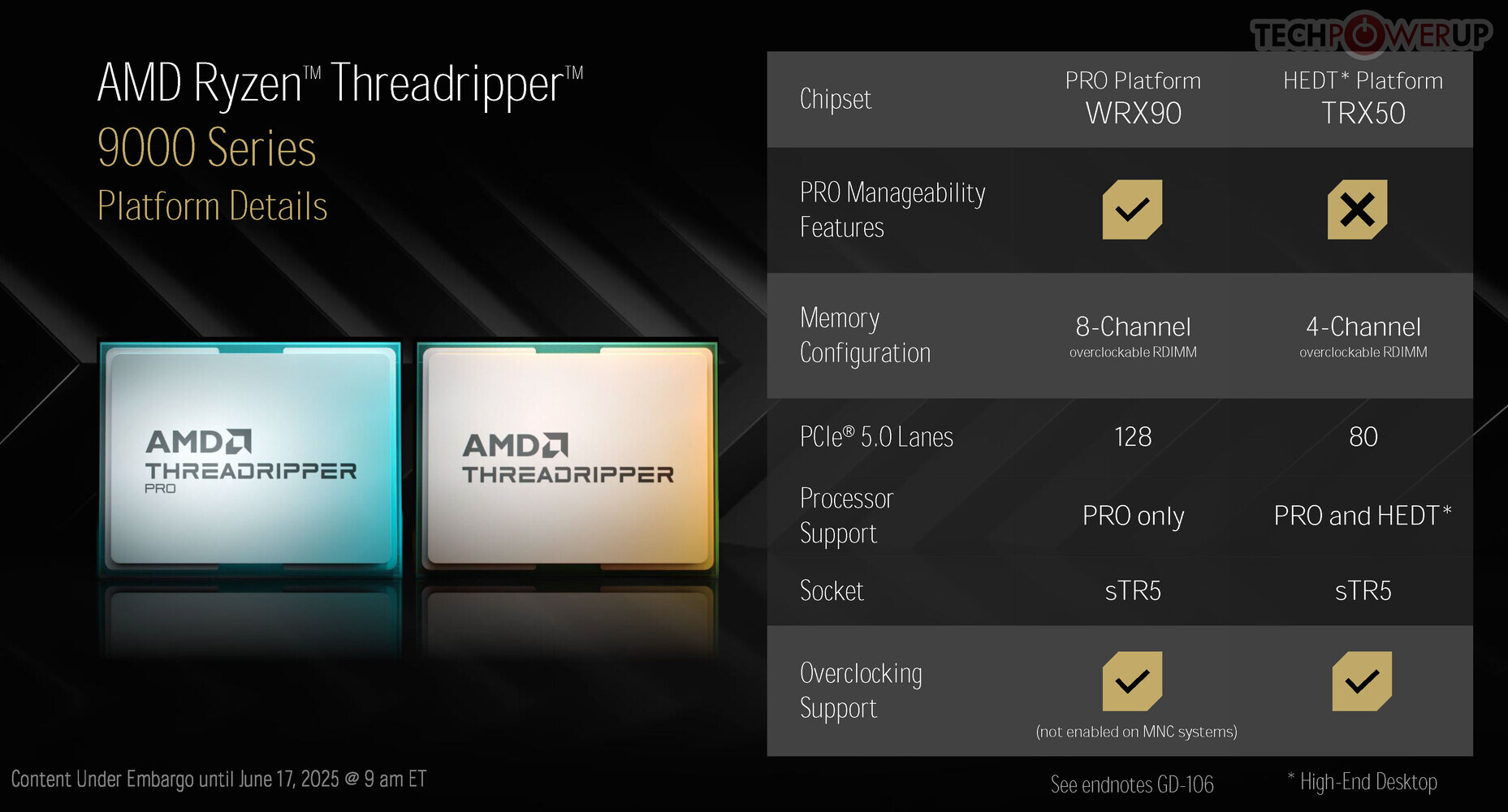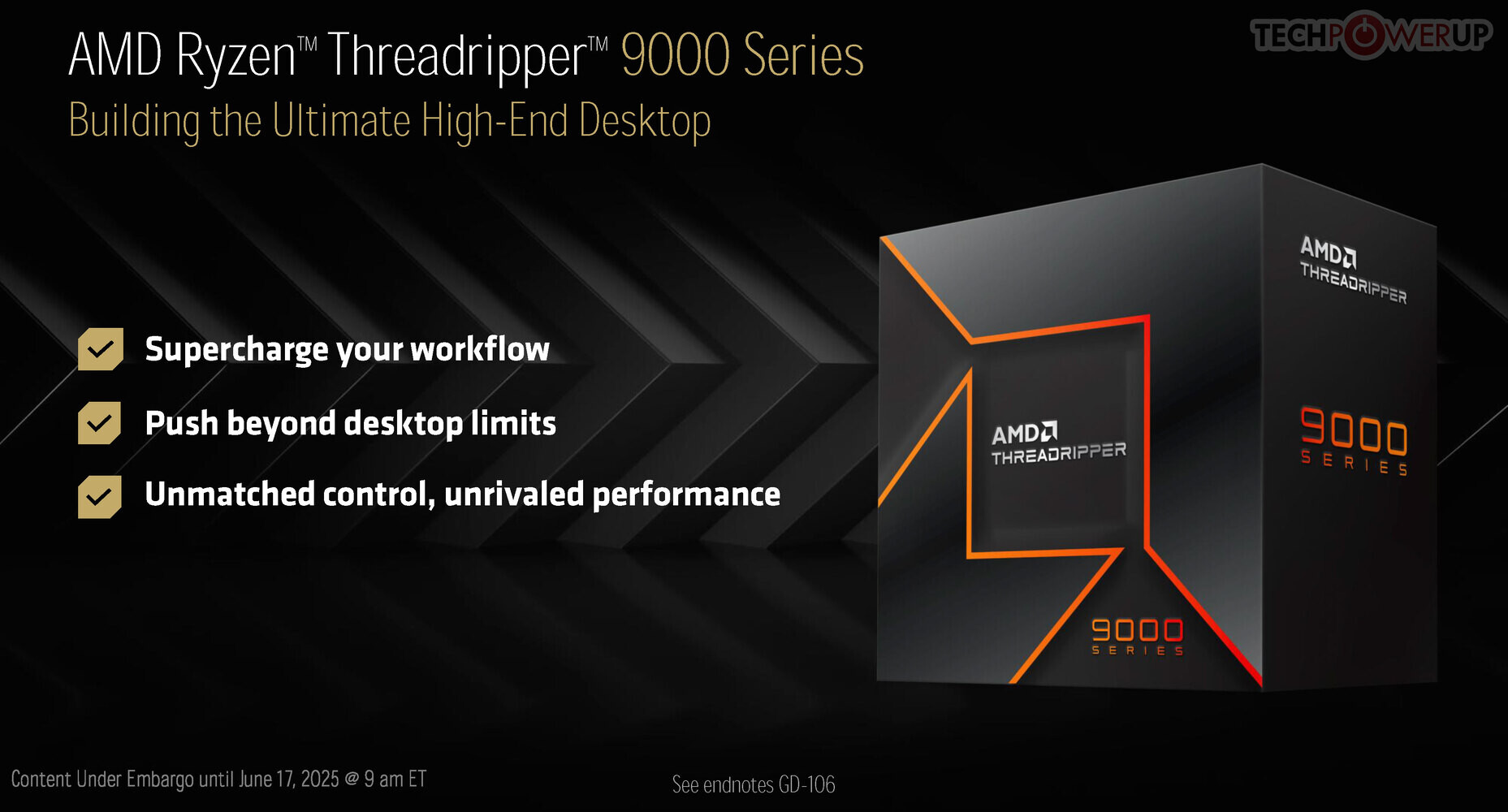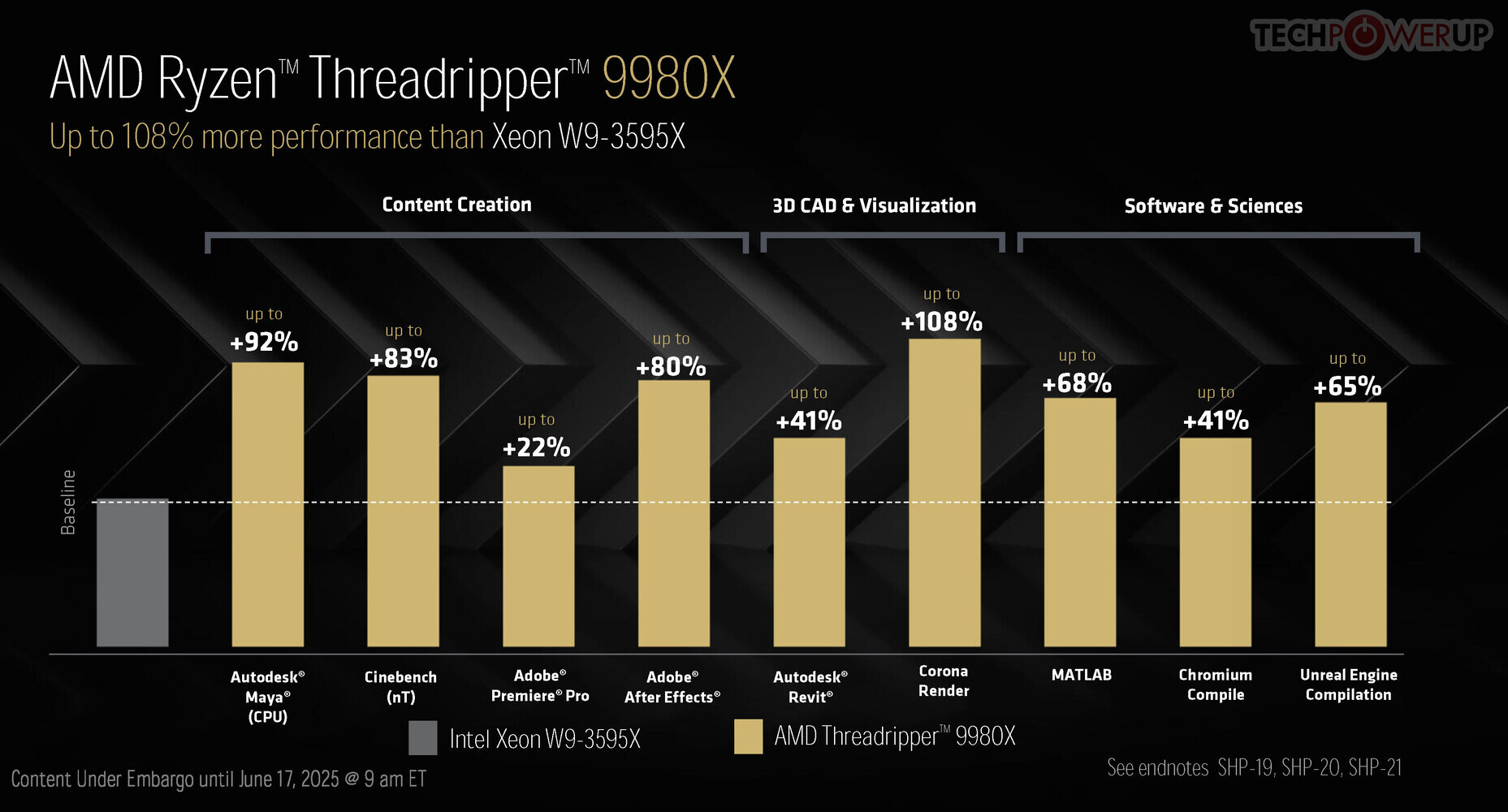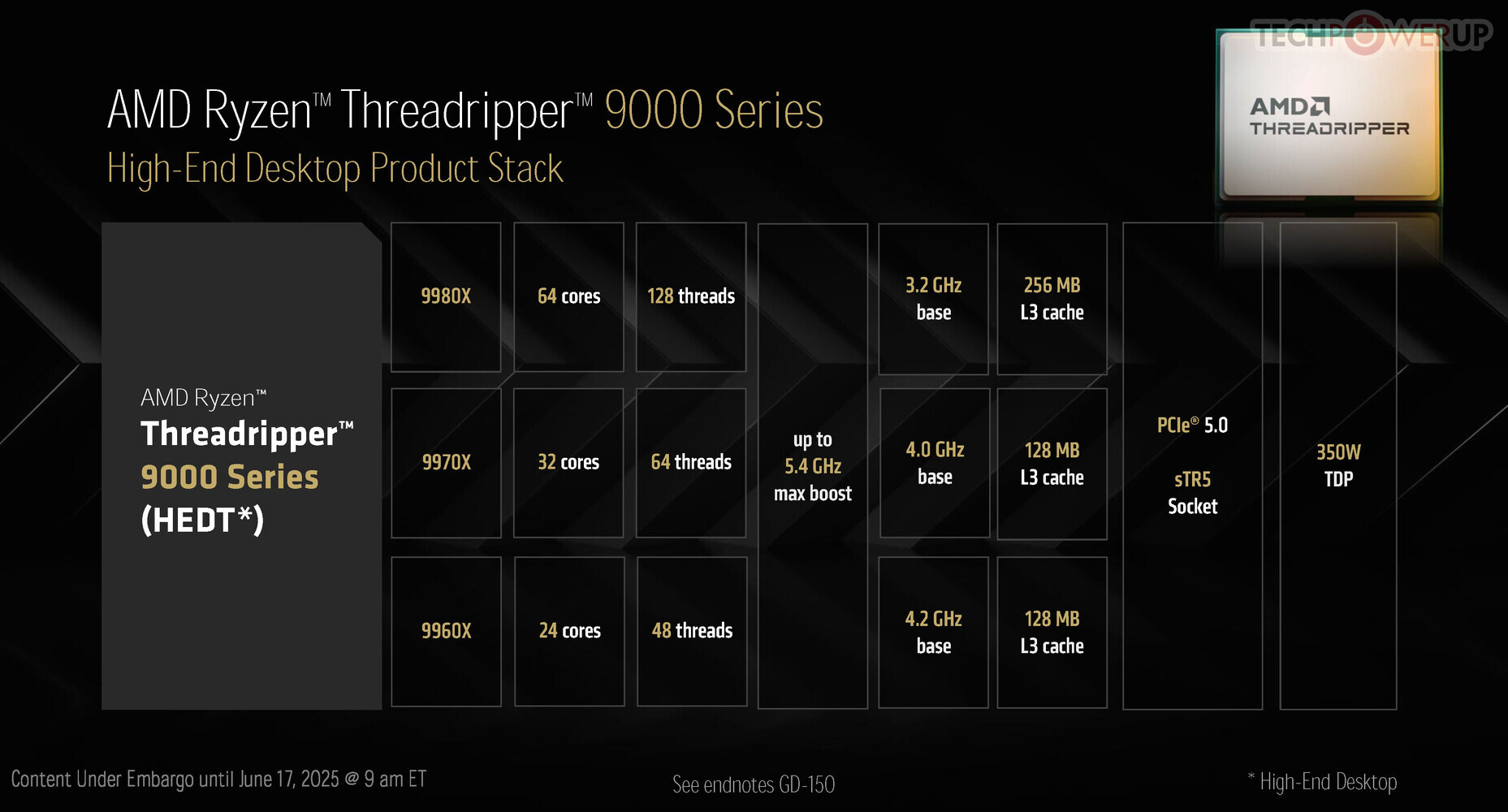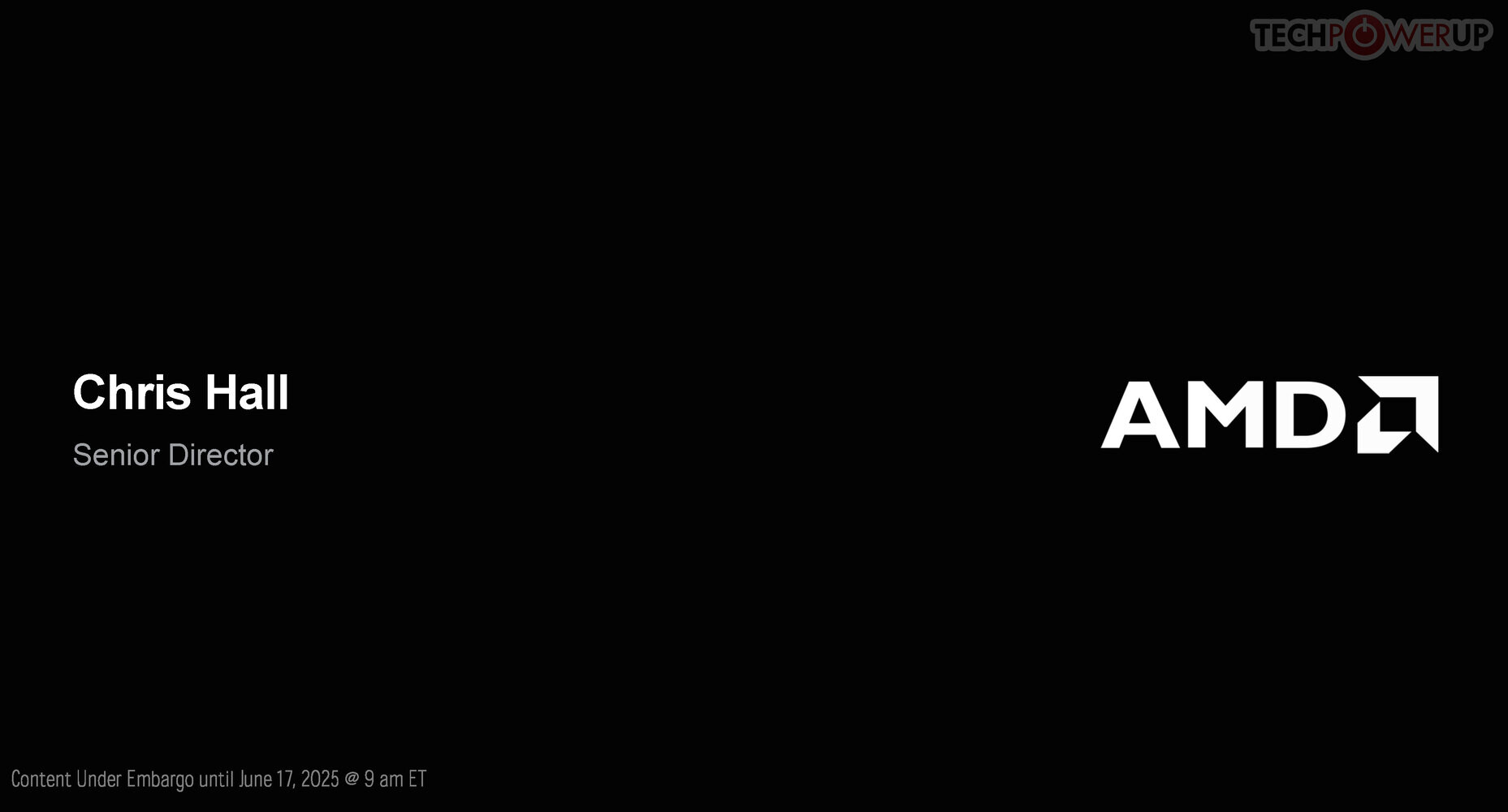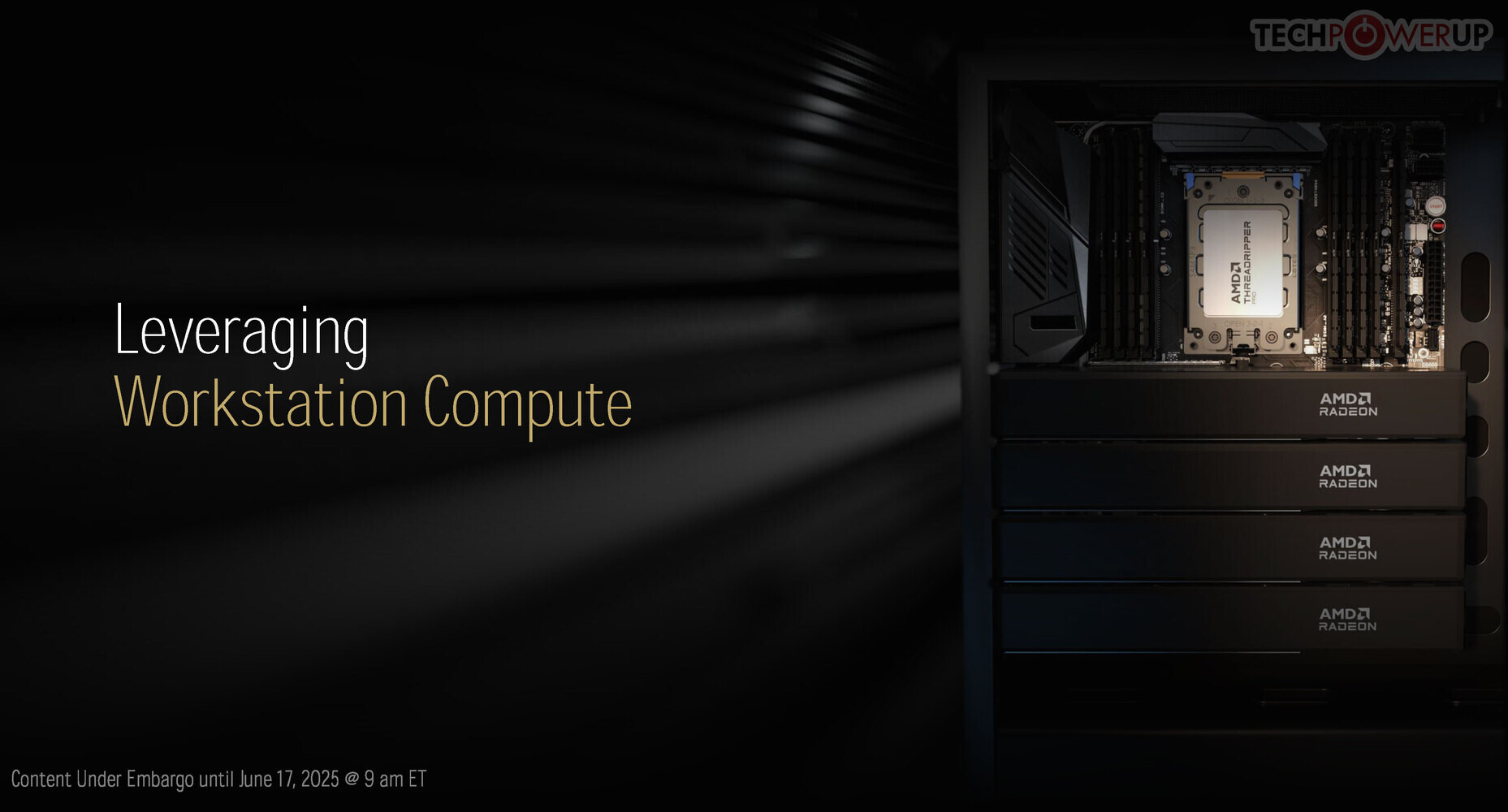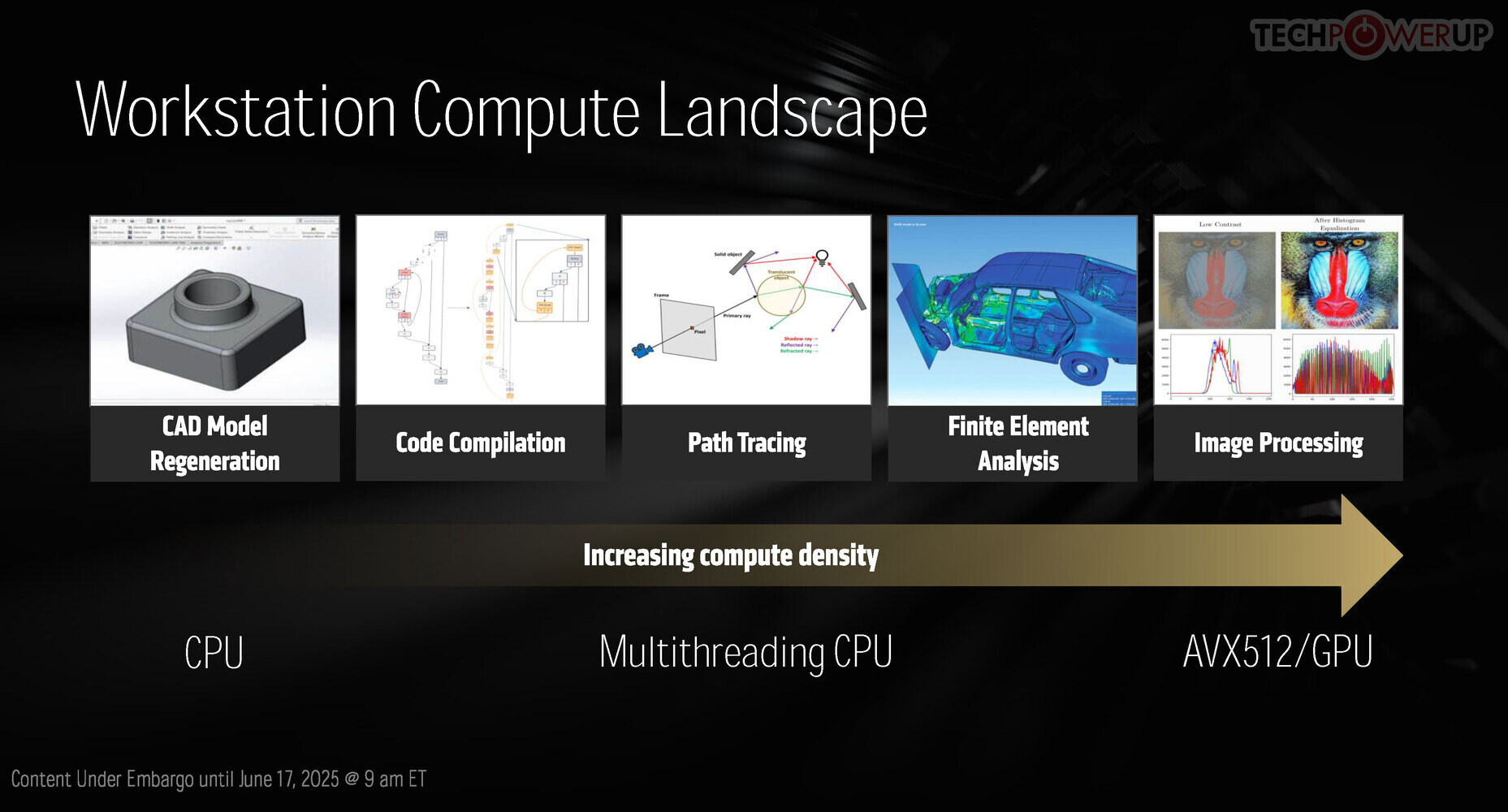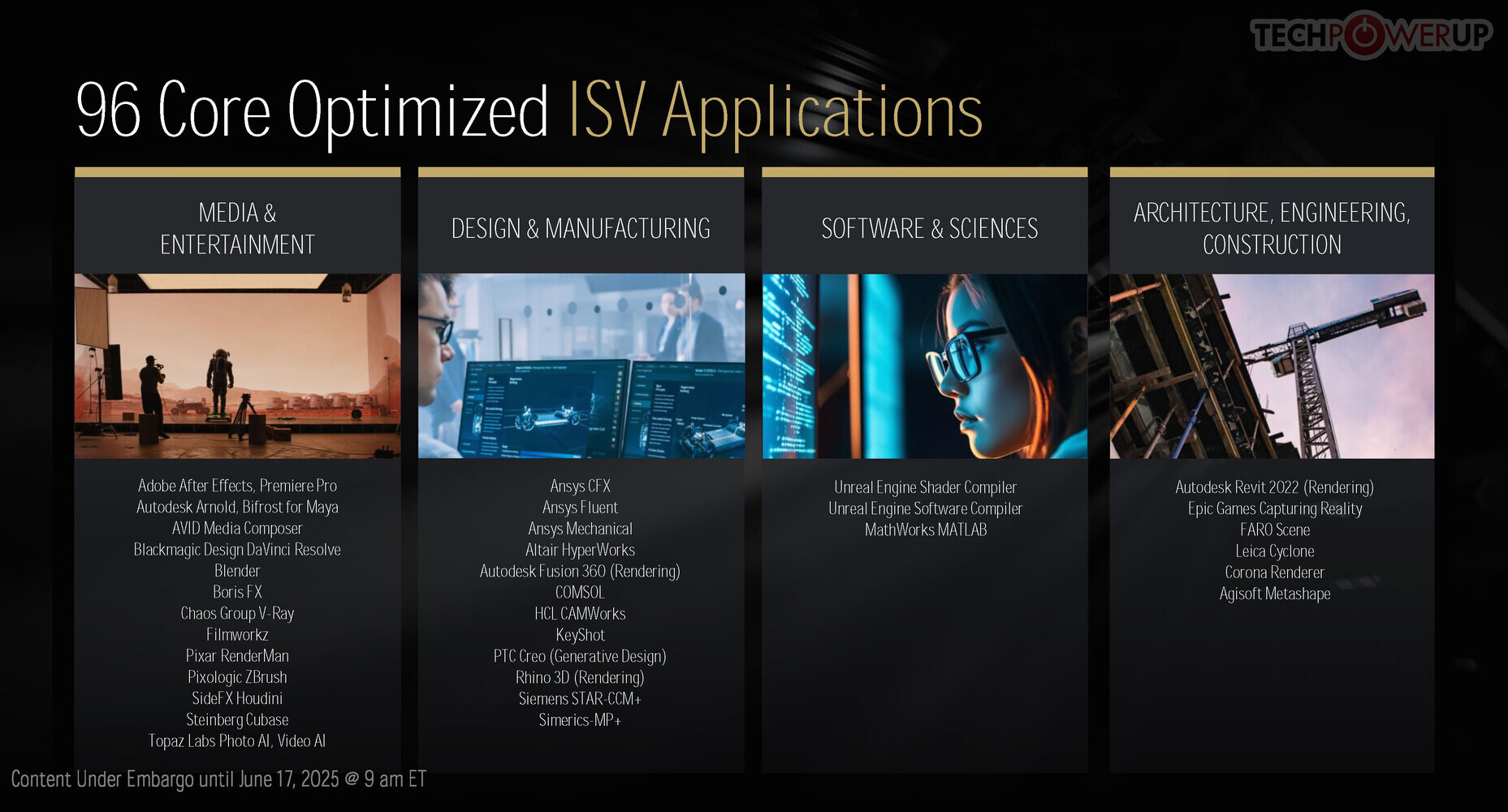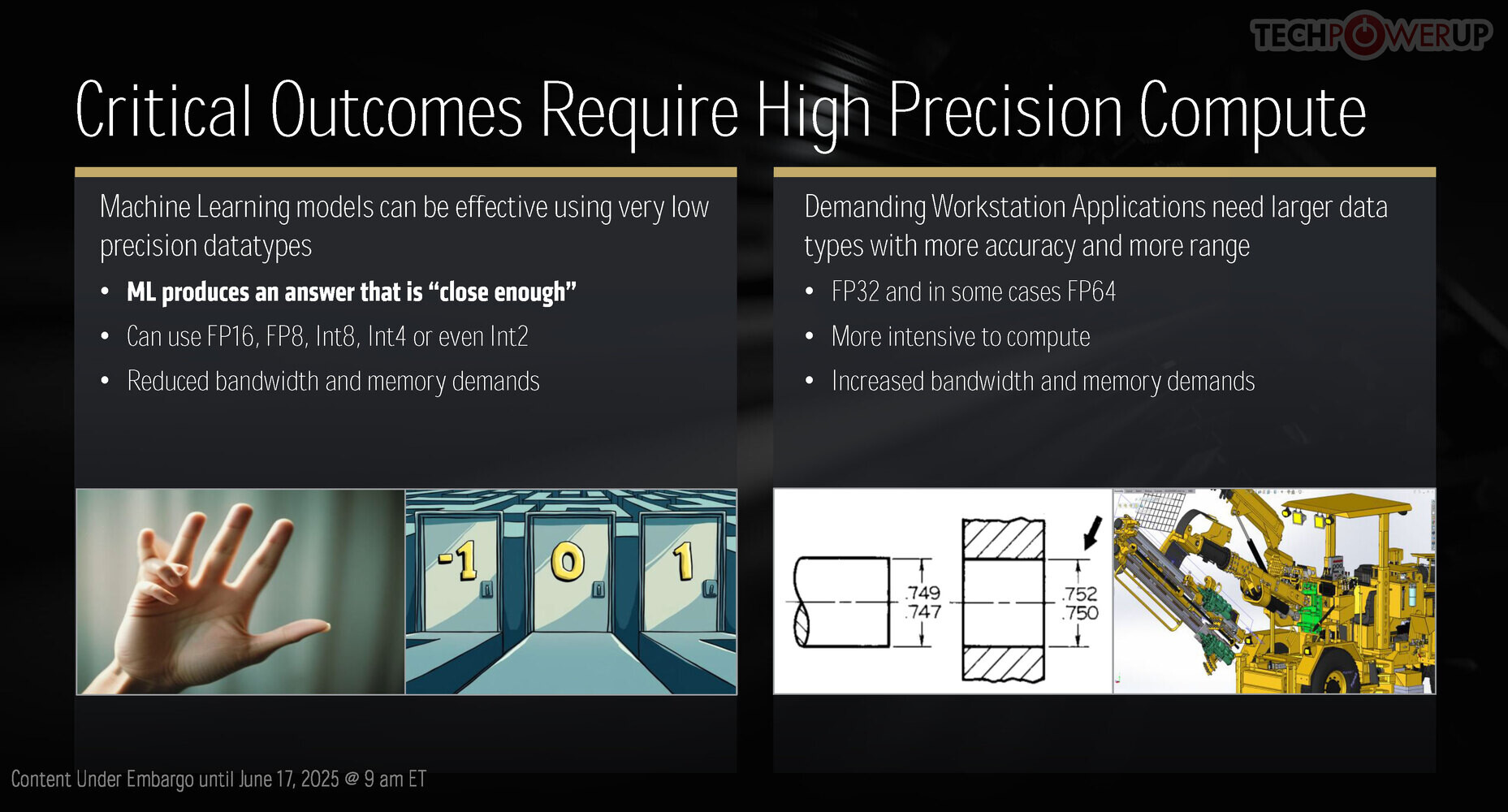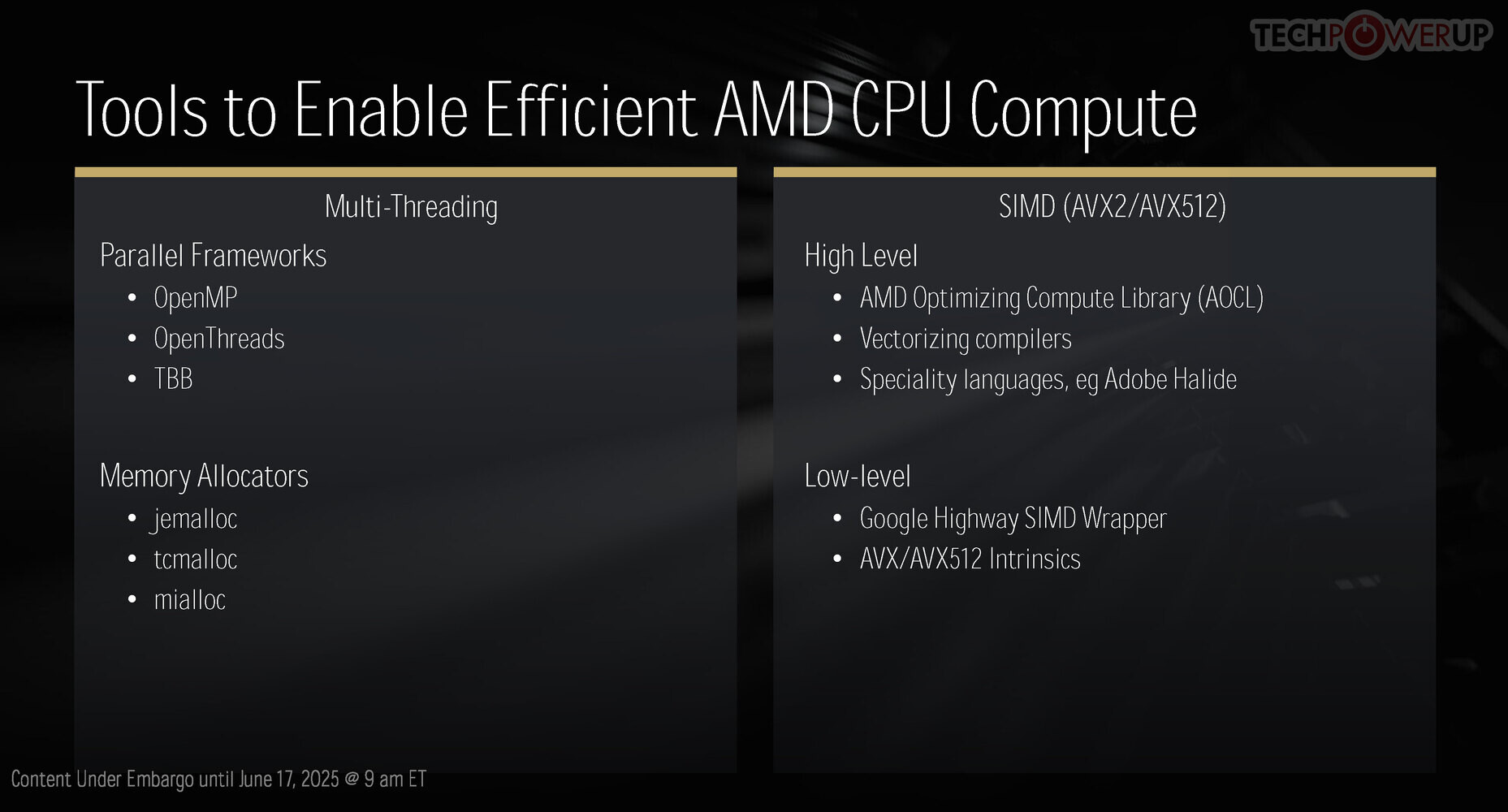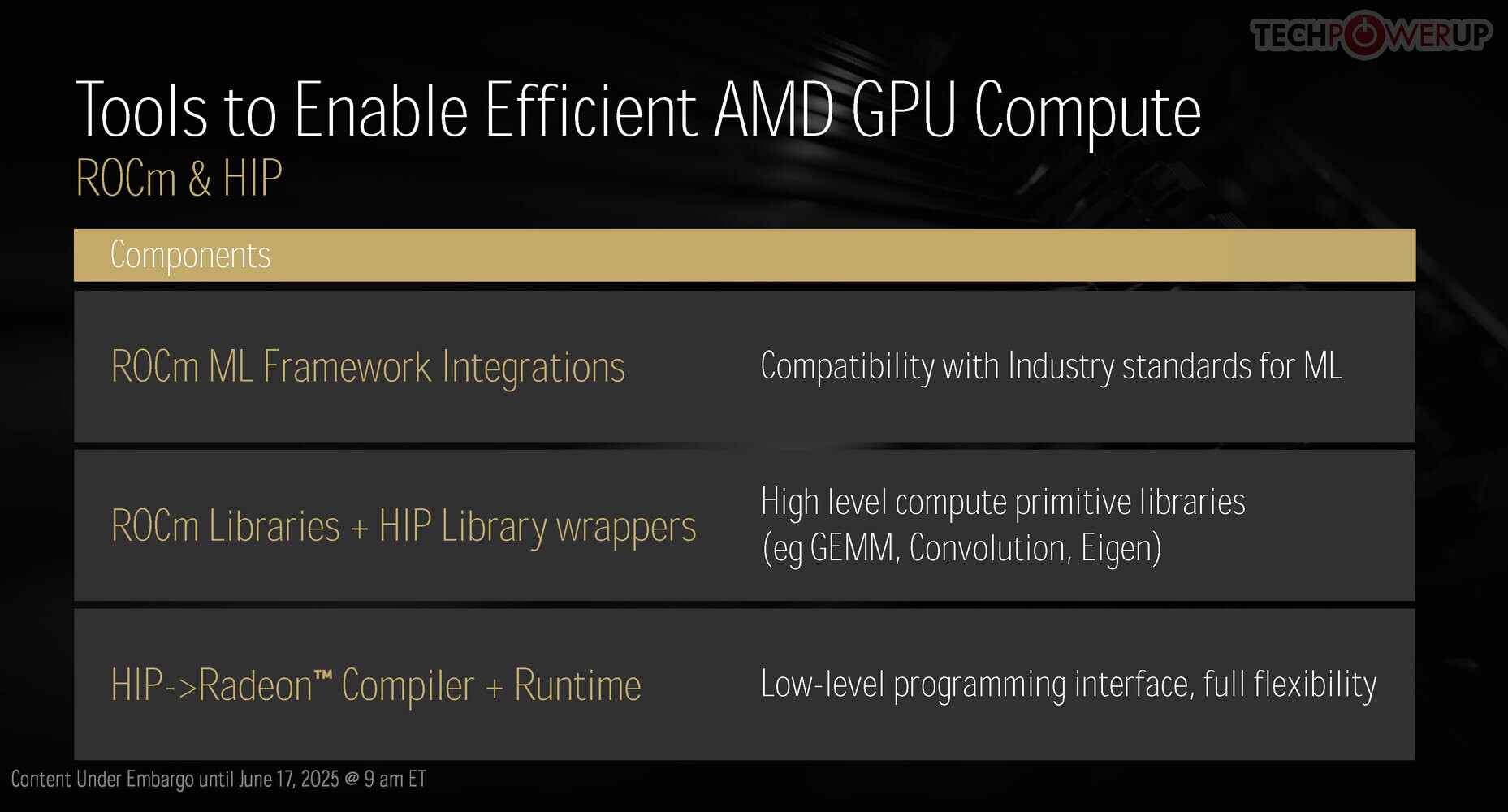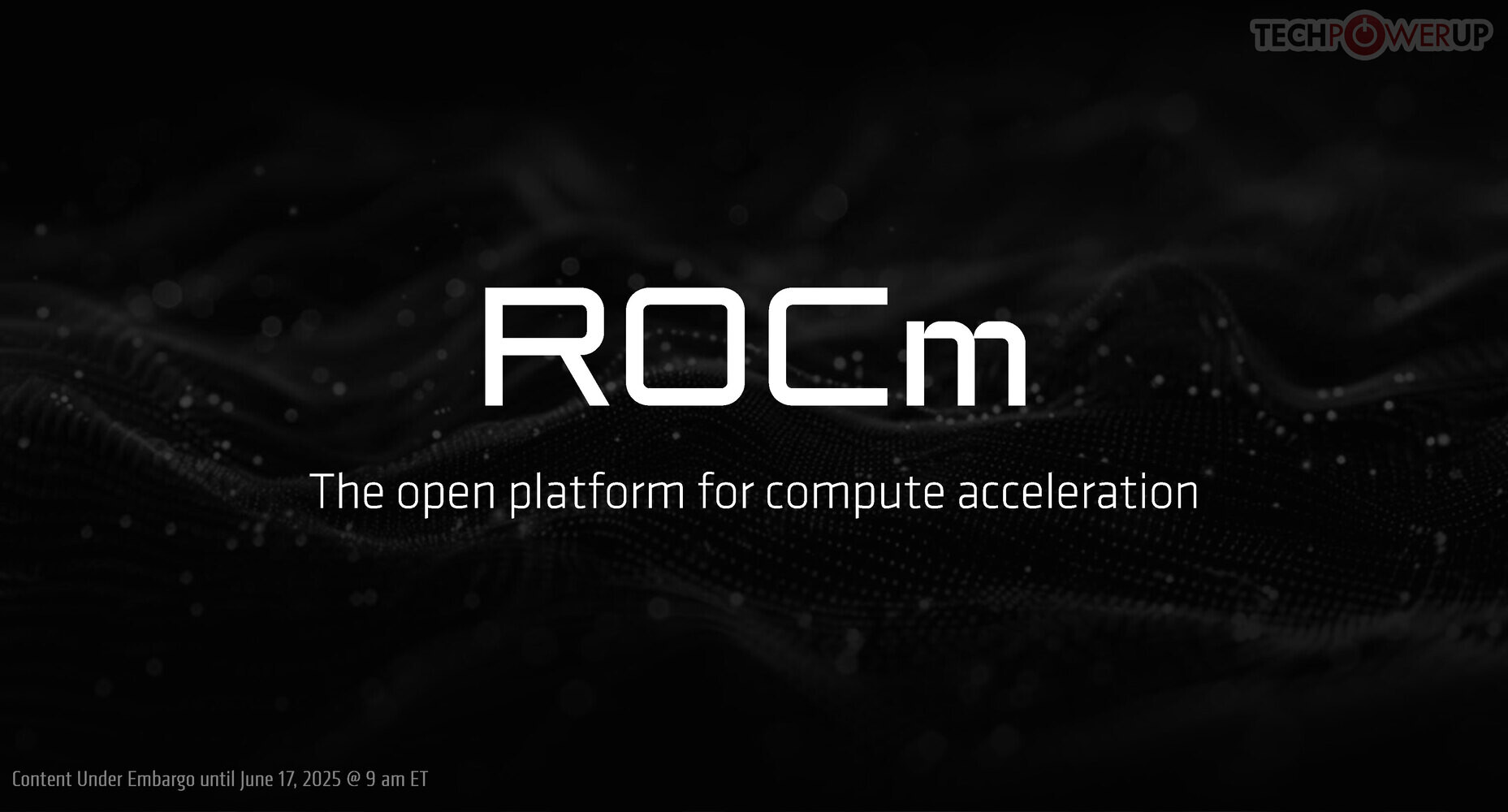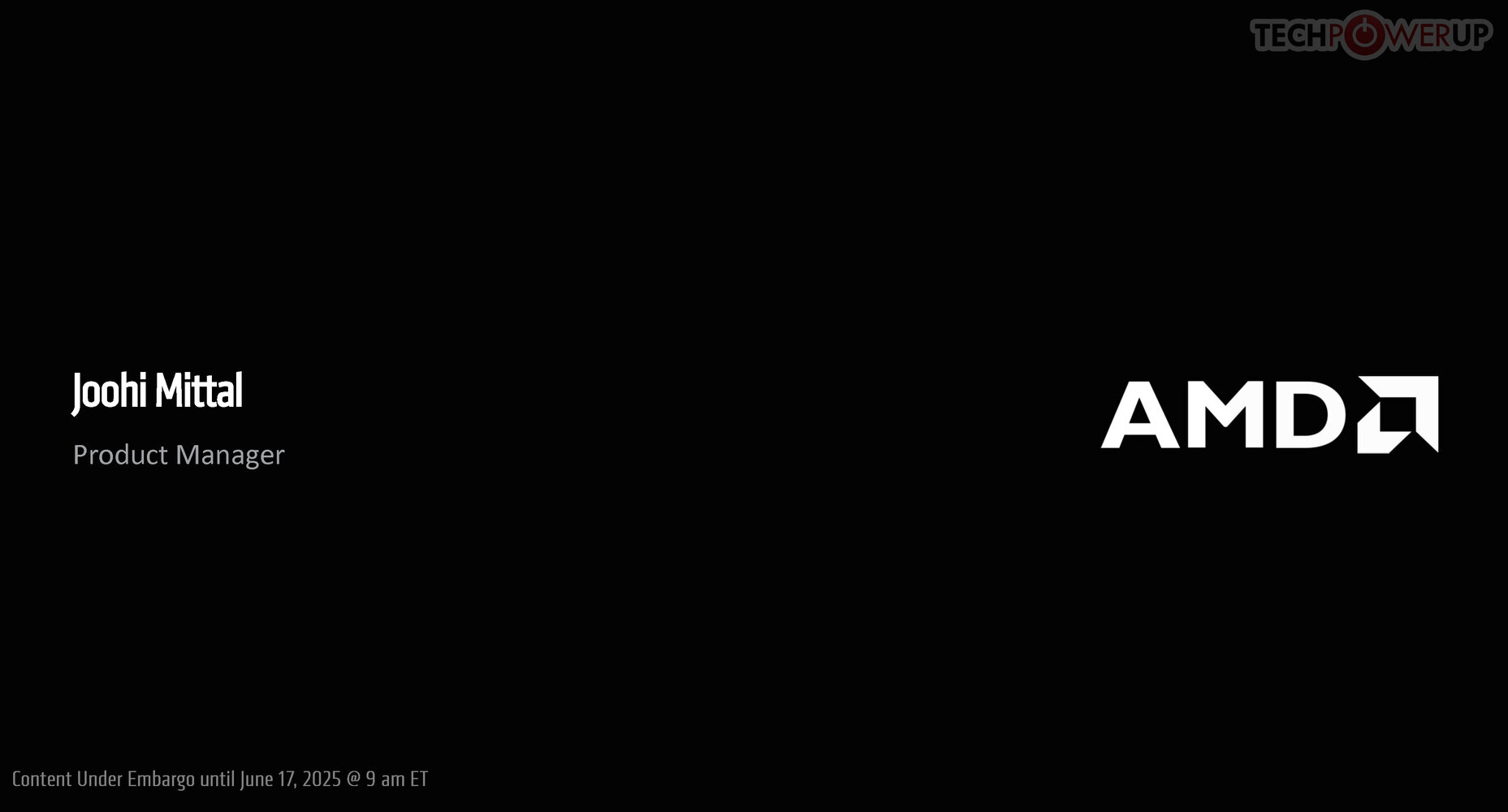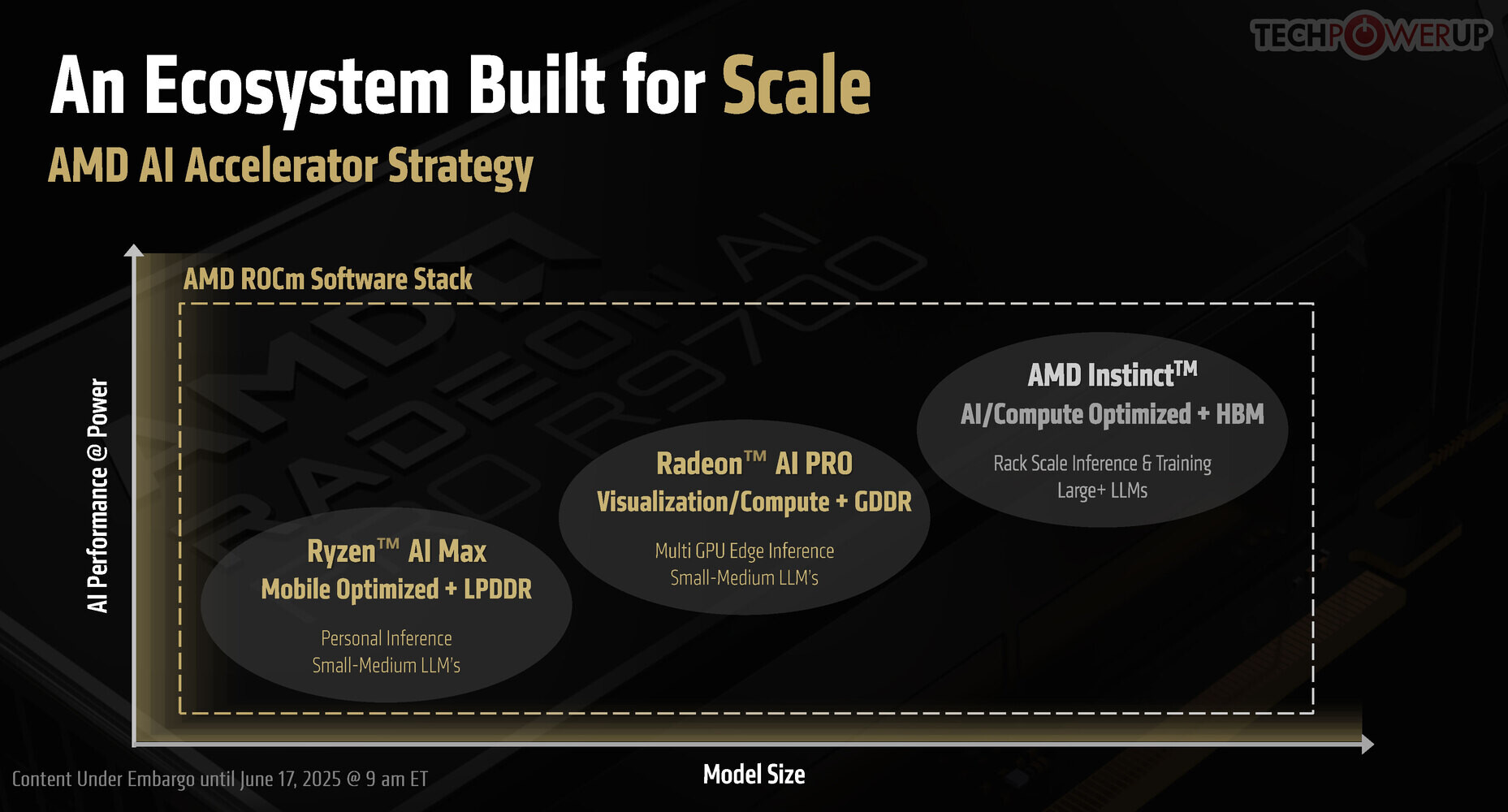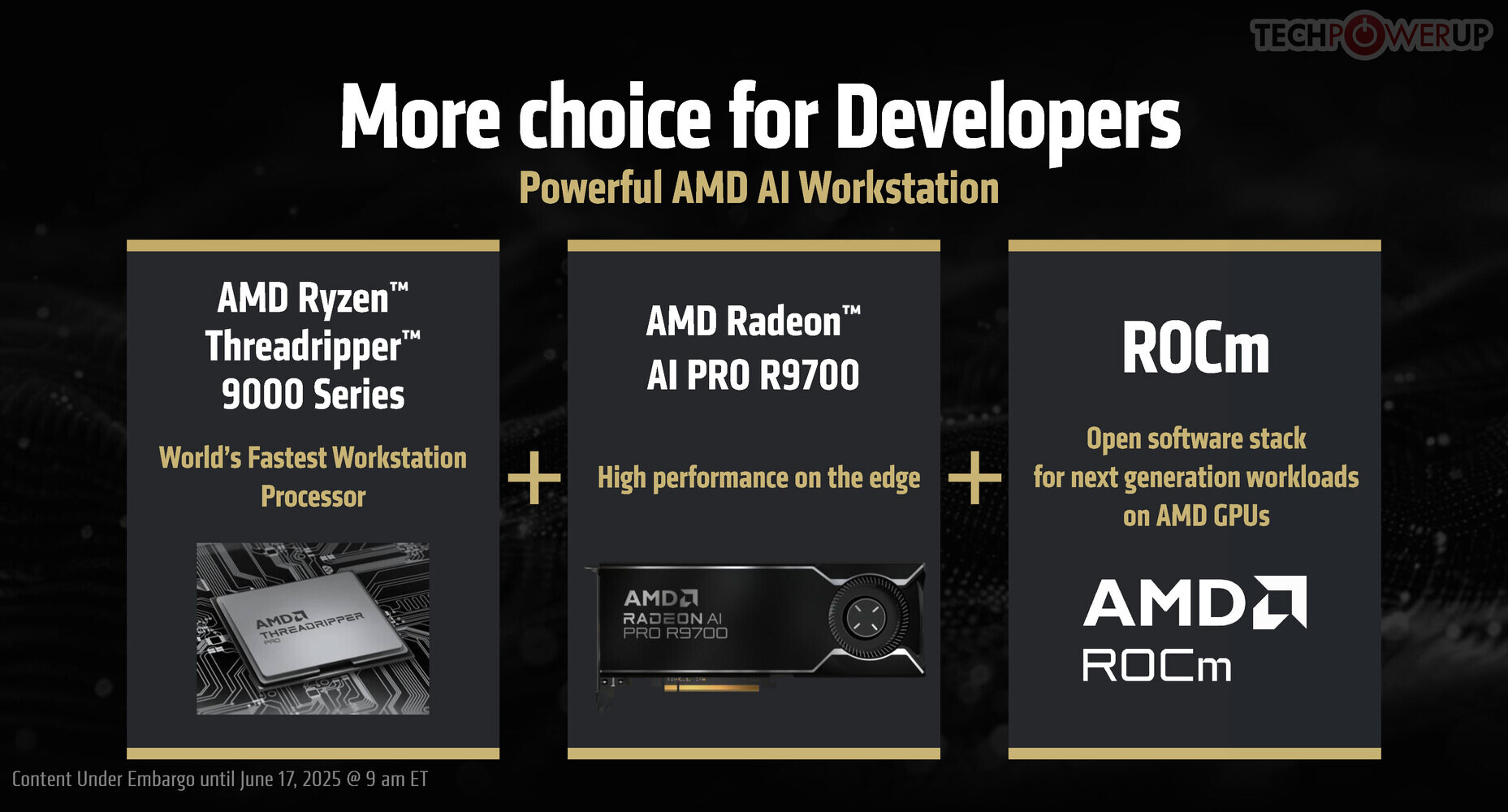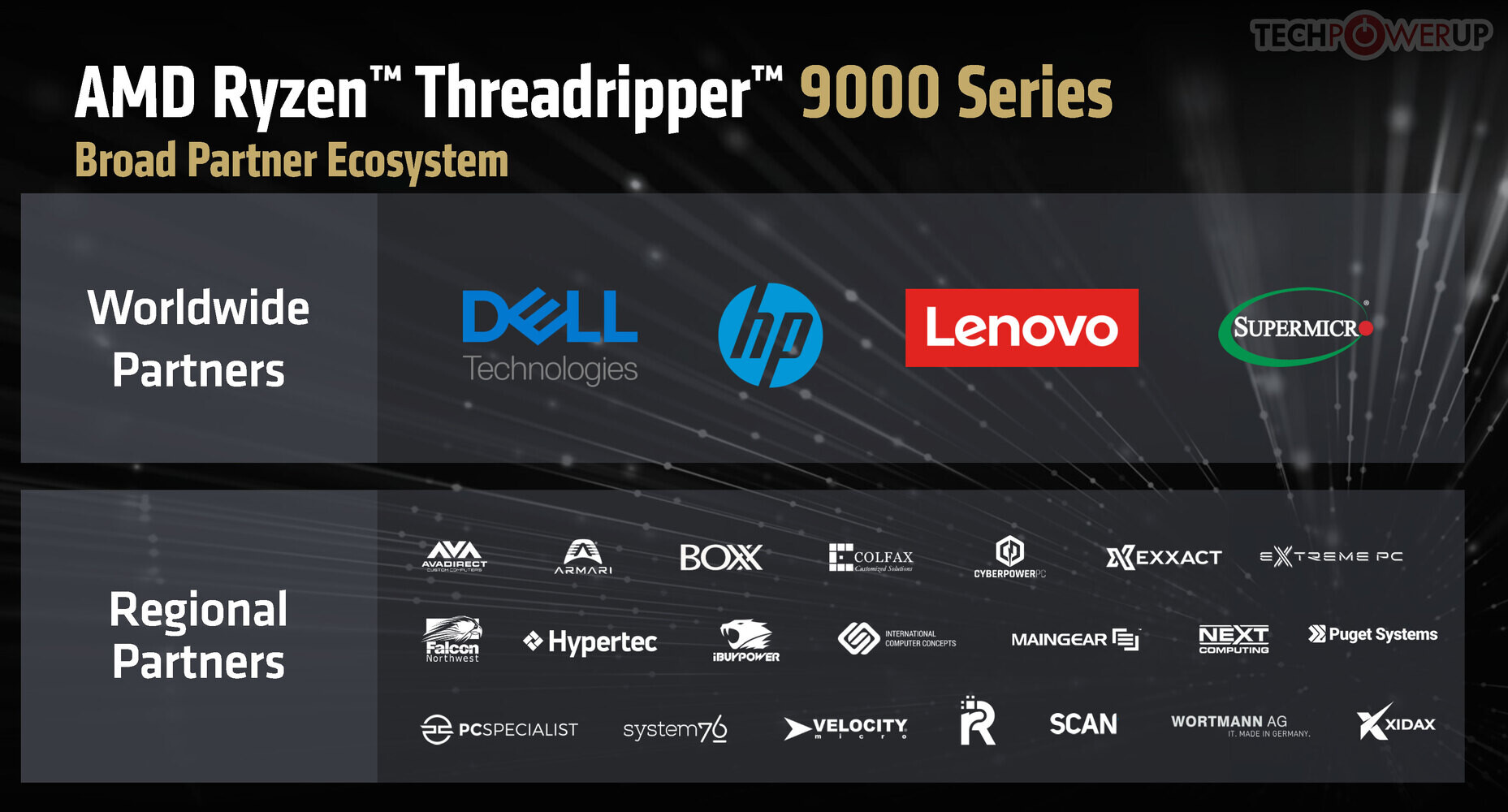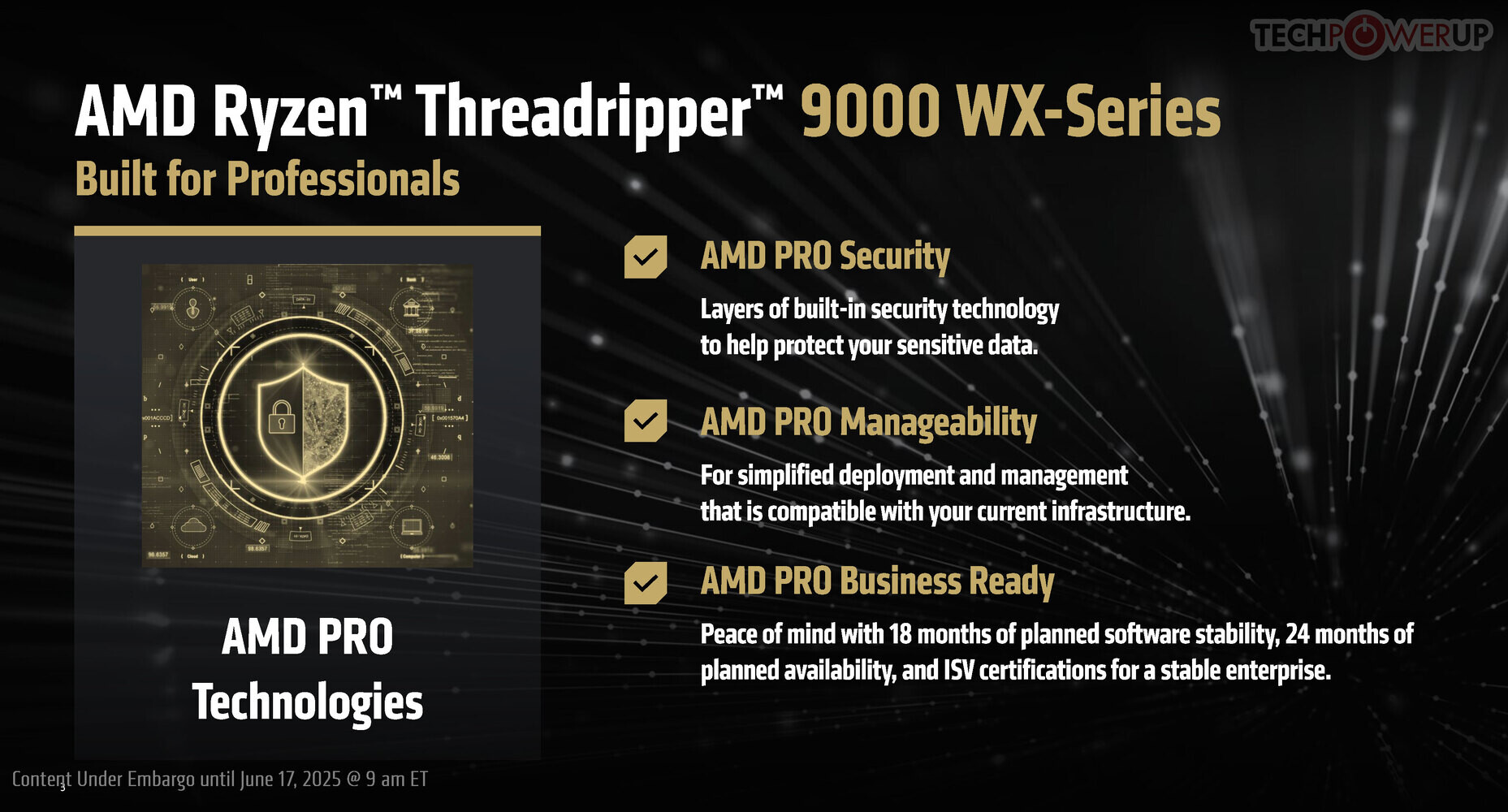AMD Launches New Workstation Hardware
AMD today formally launched a slew of new hardware for workstations. These include the new Ryzen Threadripper PRO 9000 "Shimada Peak" line of high core-count processors, and the Radeon AI PRO 9000 line of graphics cards that cover a range of use-cases spanning from edge AI acceleration to professional visualization. The Threadripper 9000 series is based on the "Zen 5" microarchitecture, and "Shimada Peak" is a variant of the "Turin" MCM powering 5th Gen EPYC processors, which comes with workstation-relevant I/O. Meanwhile, the Radeon AI Pro 9000 series is based on the same RDNA 4 graphics architecture powering the Radeon RX 9000 series gaming graphics cards.
The Ryzen Threadripper 9000 series comes with CPU core counts of up to 96-core/192-thread, with an IPC uplift from the "Zen 5" microarchitecture over the previous Threadripper 7000 series "Storm Peak" processors powered by "Zen 4." More than IPC, workstation users should benefit greatly from the architecture's full 512-bit FPU data-path, offering significant increases in performance of applications that leverage the AVX-512 instruction set. AMD also fine-tuned the IOD (I/O die) to support increased memory speeds of DDR5-6400 (native), AMD EXPO profiles, and CKD. With these changes, and minor increases in clock speeds for certain SKUs, AMD is promising a 16% uplift in performance over the Threadripper 7000 series predecessors in workstation benchmarks, and a significant 25% increase in SPEC Workstation AI and ML benchmarks (comparing identical core-counts and frequency).
The Ryzen Threadripper 9000 series "Shimada Peak" package is designed for AMD Socket TR5, and is drop-in compatible with all TR5 motherboards with the latest UEFI firmware updates. AMD mandates USB BIOS Flashback feature for all its workstation and server platforms. The processor comes with an 8-channel DDR5 memory interface (16 sub-channels), with ECC DDR5-6400 native speeds, support for AMD EXPO tested for over 7000 MT/s, and memory interleaving for 2-, 4-, 6-, or 8-channel. The memory interface also supports RDIMMs, although the platform is capped at 1 DIMM per channel, and a maximum memory size of 2 TB.
The SoC I/O features sees a massive 128-lane PCI-Express 5.0 root complex, which lacks the CXL features you find in EPYC "Turin" processors. SoC topology changes sees the PCIe aggregate bandwidth improve over "Storm Peak." Other features include AMD PRO Management features, and AIM-T WLAN support.
The following above shows the various processor model numbers in the Threadripper PRO 9000 WX series, which range from 12-core/24-thread, all the way up to 96-core/192-thread. All SKUs have a common I/O feature-set, and 350 W TDP.
AMD also unveiled its smaller lineup of Threadripper 9000X HEDT processor series. These are targeted at HEDTs and entry-level workstations. The key difference with the PRO 9000 WX series is the lack of AMD PRO features, and a truncated I/O feature-set that includes 4-channel (8 sub-channel) DDR5 memory, and a reduced 48-lane PCI-Express 5.0 root complex. There are only three SKUs, ranging from 24-core/48-thread, to 64-core/128-thread. These chips are compatible with Socket TR5 motherboards, too, however, half the memory channels and some PCIe/NVMe slots will be disabled or reconfigured—the motherboard manual will tell you which ones.
Moving on, and we see the introduction of the Radeon AI PRO 9000 series. These are graphics cards meant for a professional environment that can either be professional-visualization, or workstations with up to four of these installed. The card comes with a maxed-out 4 nm "Navi 48" GPU, with 64 RDNA 4 compute units for 4,096 stream processors, and 128 AI accelerators, capable of accelerated matrix operations across many data formats. A significant upgrade over the RX 9070 XT gaming GPU is the memory size, which has been doubled to 32 GB. The memory sub-system is 20 Gbps GDDR6 across a 256-bit wide memory interface for 640 GB/s of memory bandwidth, which is cushioned by a 64 MB 3rd Gen Infinity Cache.
All said and done, the AMD Radeon AI PRO R9700 offers up to 191 TFLOPS FP16 dense, and up to 1531 TOPS INT4 sparse, within a board power footprint of up to 300 W. This slide highlights its differences with the previous generation Radeon PRO W7800 that's based on the "Navi 31" silicon and RDNA 3 architecture.
The Ryzen Threadripper 9000X series processors will be available in the retail market, the Ryzen Threadripper PRO 9000 WX series will be available through server and workstation OEMs. The Radeon AI PRO 9000 series graphics cards will be sold through AMD's Radeon RX board partners.

